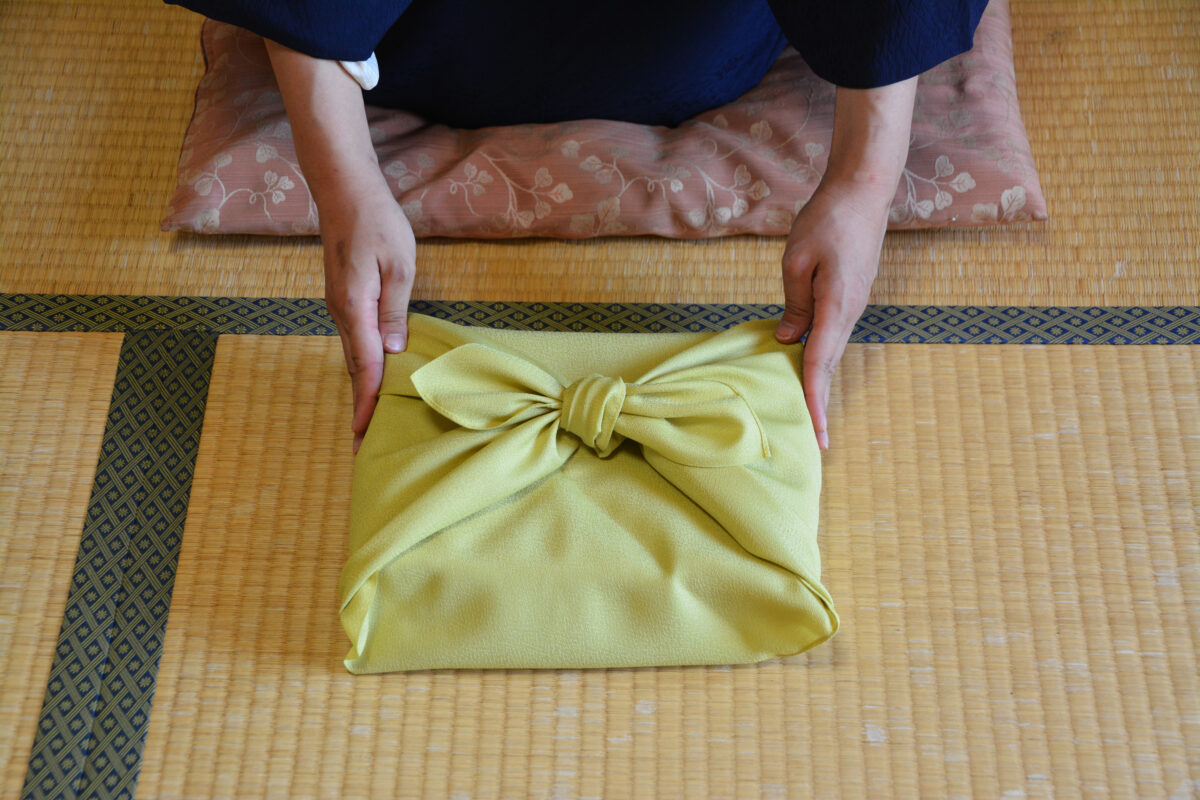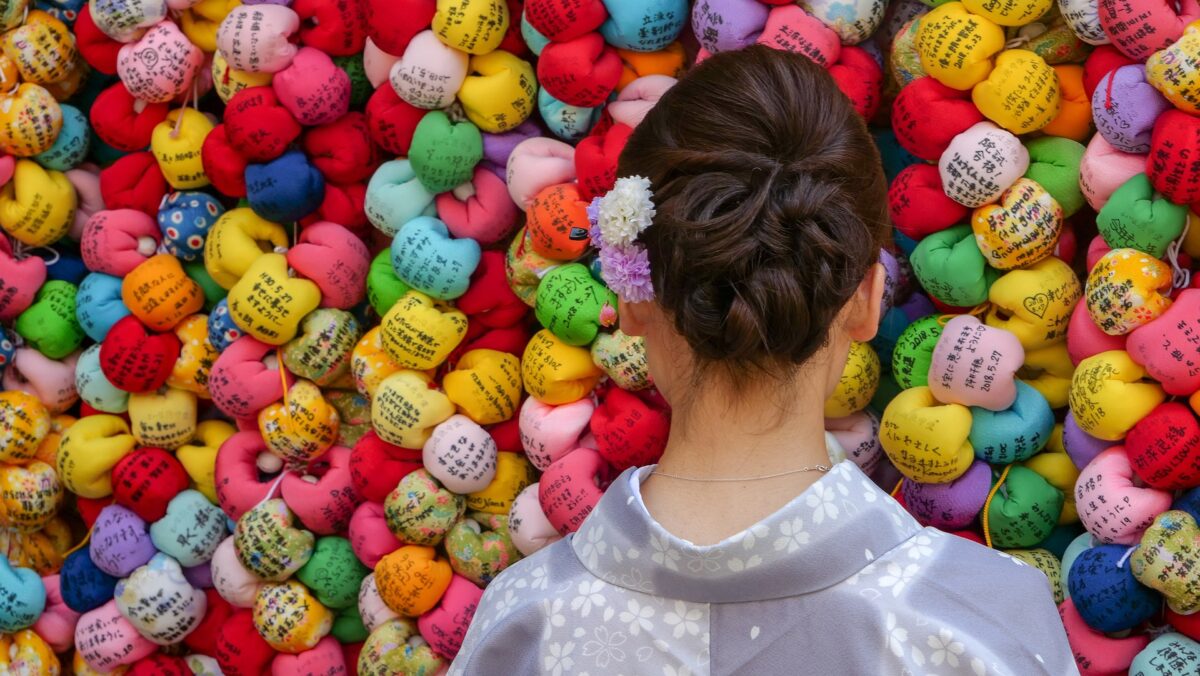Efforts are being made to change Japan into a more welcoming place for foreign tourists, with new English menus and English signs becoming more of the norm than not.
You have decided to visit Japan, but you don’t know where specifically?
I have traveled all over Japan, and based on my experiences, I will introduce you to some of the most popular tourist destinations, as well as some of the more obscure spots that I would highly recommend to tourists.
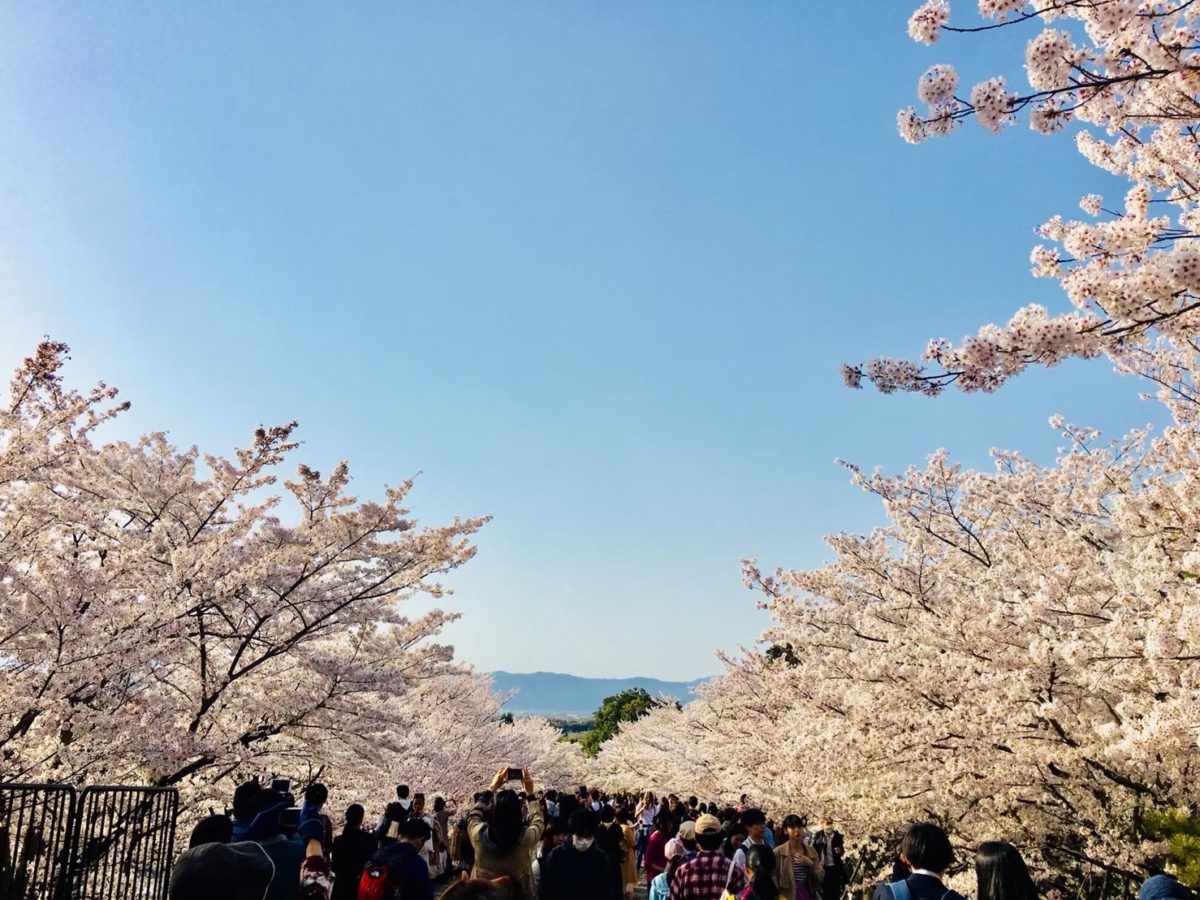
I will introduce them in order from the north of Japan to the south of Japan, I hope you will enjoy this list as much as I do!
1. Lavender fields and Aoi Ike in Biei 🪻(Hokkaido)

Lavender field
Biei is a beautiful town in Hokkaido and has several lavender fields.
⚠️ The lavender fields in summer are especially famous, and during the best season in July, the parking lot will be jammed with traffic.
The sight of the entire field of purple lavender swaying in the wind is breathtaking and attracts many tourists and photographers to take in the spectacular view. The fragrance is also pleasant and will provide you with a healing experience.
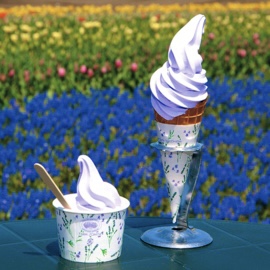
The lavender soft serve ice cream is a must-try here 🍦 It contains lavender extract and has a very refreshing taste. I have visited many places and have rarely found this. I think that there are many great strange/unique foods that are also delicious in Japan, and I think this is one of those foods that you can only have because you visited the lavender fields. You should not miss this opportunity!
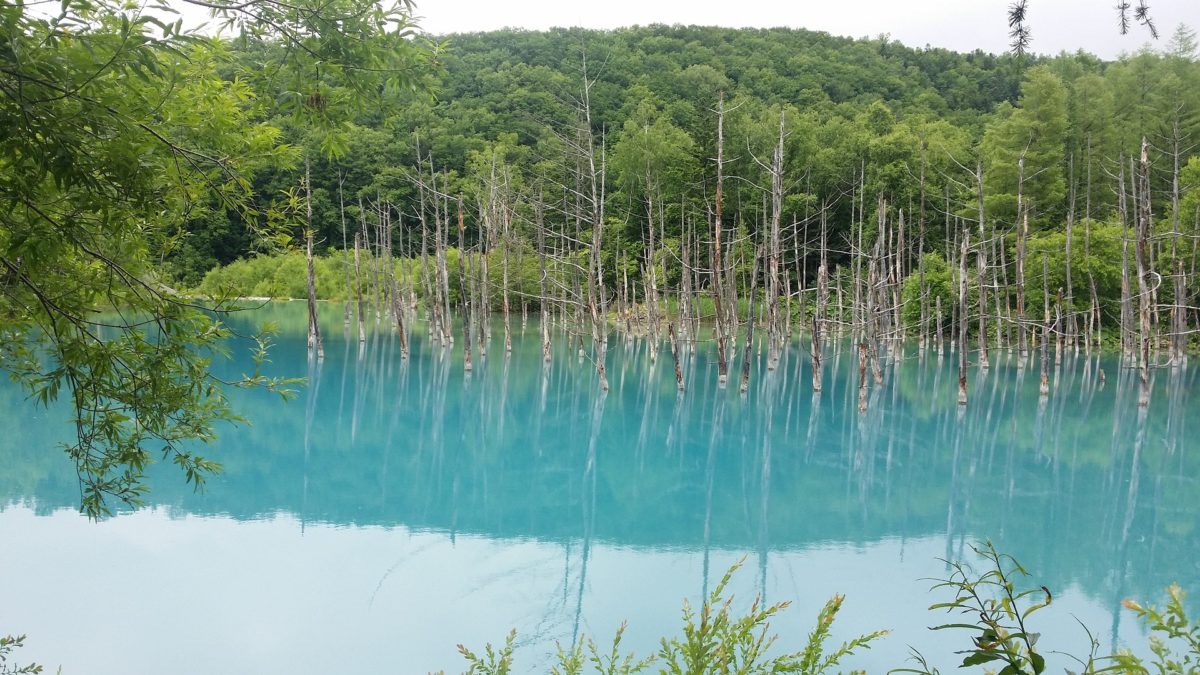
Aoi Pond
About 30 minutes away by car is “Aoi Ike” (Blue Pond). The contrast between the deep blue color of the pond and the white birch trees standing in the background creates a mystical view.
Since these birch trees are only found in cold regions, this contrast can only be seen in a very limited number of areas in Japan.
However, the color of the pond varies depending on the weather and climate. In summer, the surface of the water is a bright blue.
Although it is possible to get around by bus or train, we recommend renting a car to get around Hokkaido, as it is a large island and each place is far apart from the others.
This is definitively one of my favourite nature spots in Japan.
2. Nyuto hot spring ♨️ (Akita)
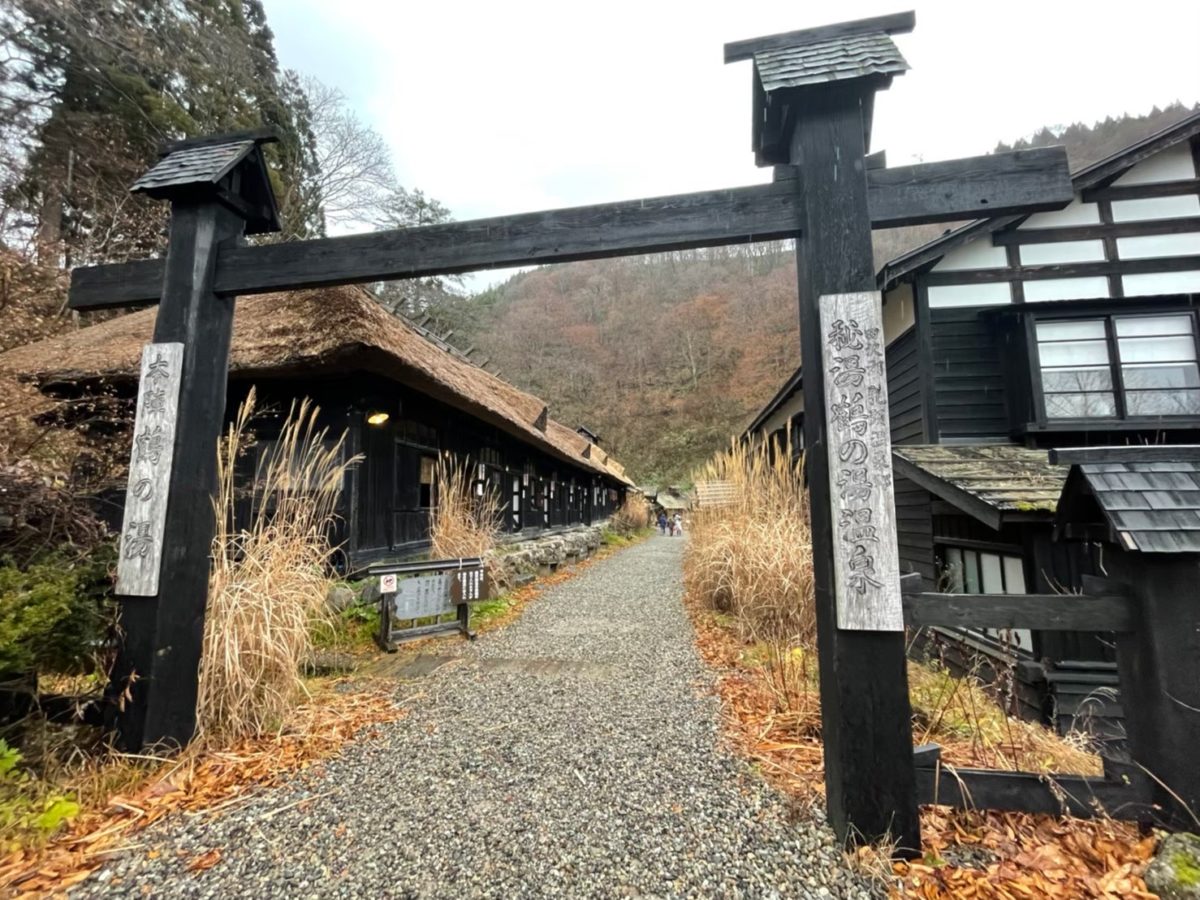
Nyuto Onsen is a hot spring resort located in Akita Prefecture, surrounded by historic wilderness. It is characterized by its milky white hot spring water.
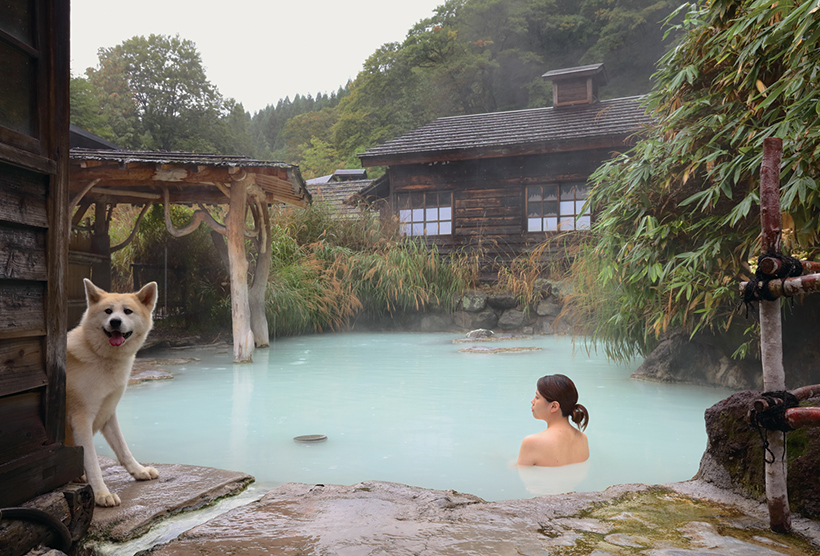
Visitors can bathe while enjoying Akita’s seasonal natural scenery, such as fresh greenery in spring, freshness in summer, autumn leaves in fall, and snowy landscapes in winter.
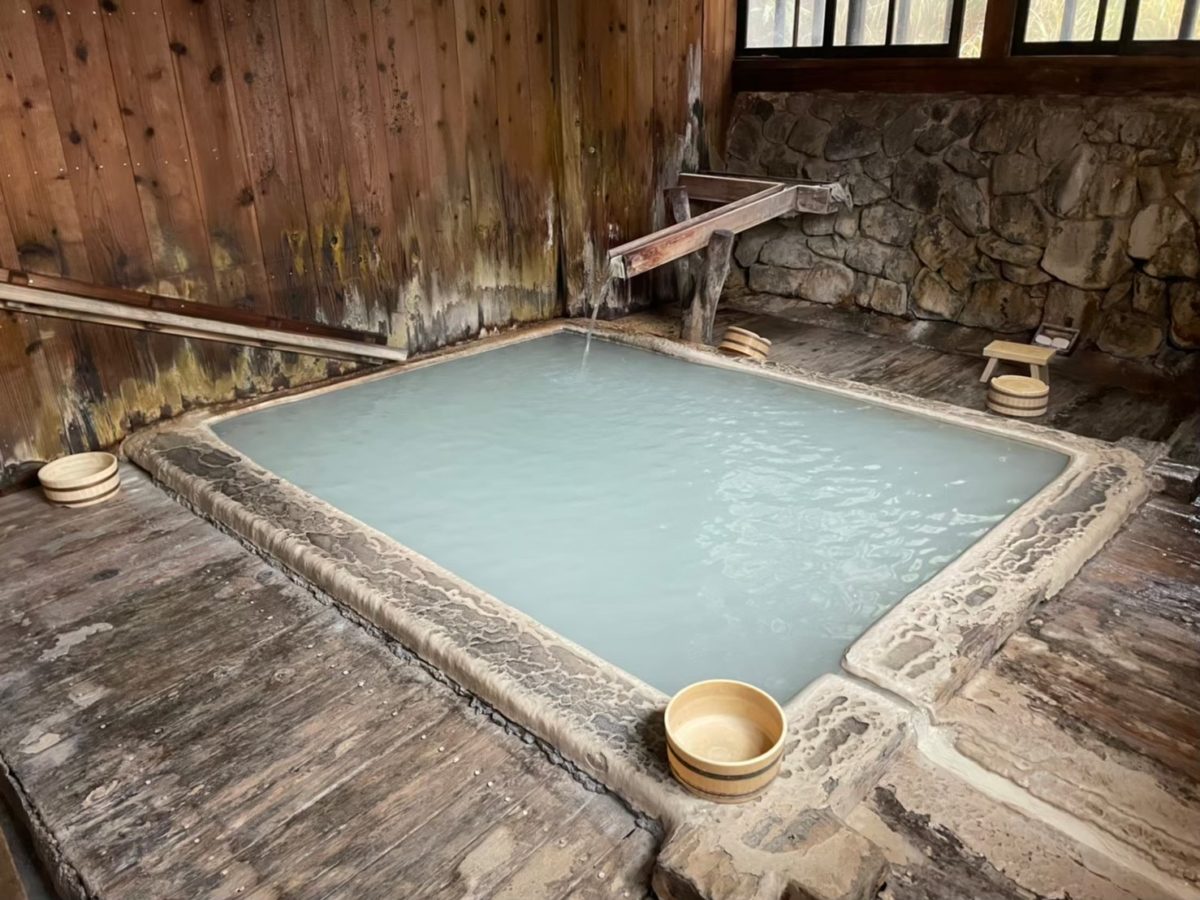
When you arrive in Nyuto Onsenkyo, you will see a row of hot spring inns on both sides of the road. These are traditional Japanese-style inns, where visitors can enjoy the warmth of wood and the scent of tatami mats.
The inns here have an atmosphere similar to that of my Japanese grandmother’s house, making me feel nostalgic even though this was my first visit to this place.

At night, when the lights are lit and snow piles up here, you can feel the Japanese atmosphere even more.
3. Ginzan hot springs ♨️ (Yamagata)
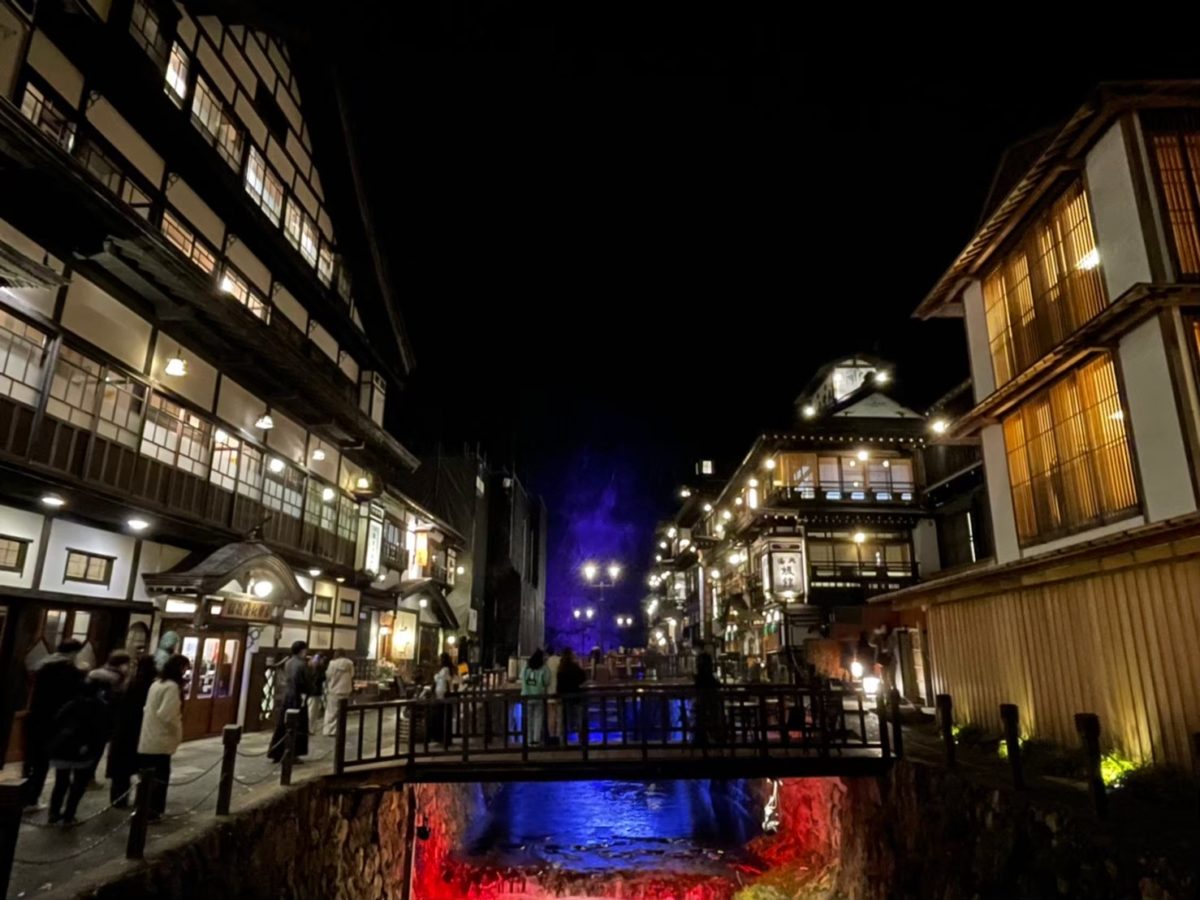
Ginzan Onsenkyo is a historical hot spring resort in Yamagata Prefecture, characterized by streets that retain the atmosphere of old Japan. The cobblestone streets, gas lamps, and white-walled buildings evoke a sense of time, and the fantastic scenery at night will captivate your heart.
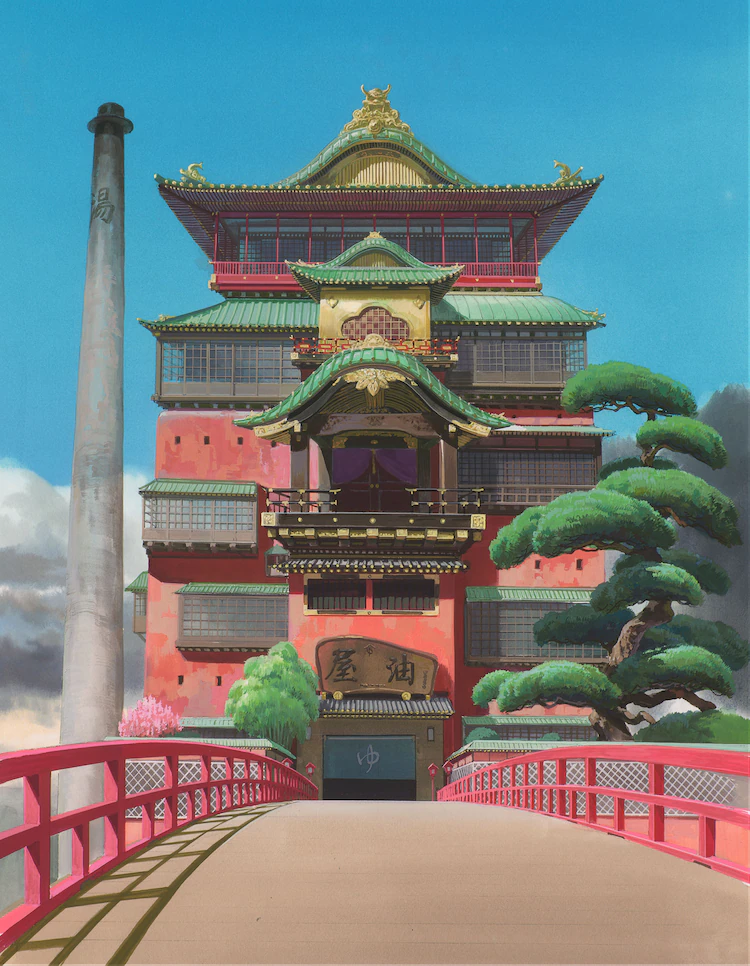
There is a ryokan that has been talked about for its resemblance to the oil house in the movie “Spirited Away,” the Notoya Ryokan, located right in front of the red bridge. You will feel as if you have wandered into an animated world. If you like these types of experiences then you can find more anime, manga and gaming places to visit in Japan here.
The atmosphere of this hot spring resort is also very interesting to me as a Japanese, because it is different from most of the ryokan I have seen in Japan in terms of architecture and atmosphere.
At night, guests walk around the onsen town in yukata (light cotton kimono) and geta (wooden clogs). This is a scene that can only be seen in a hot spring resort at night.
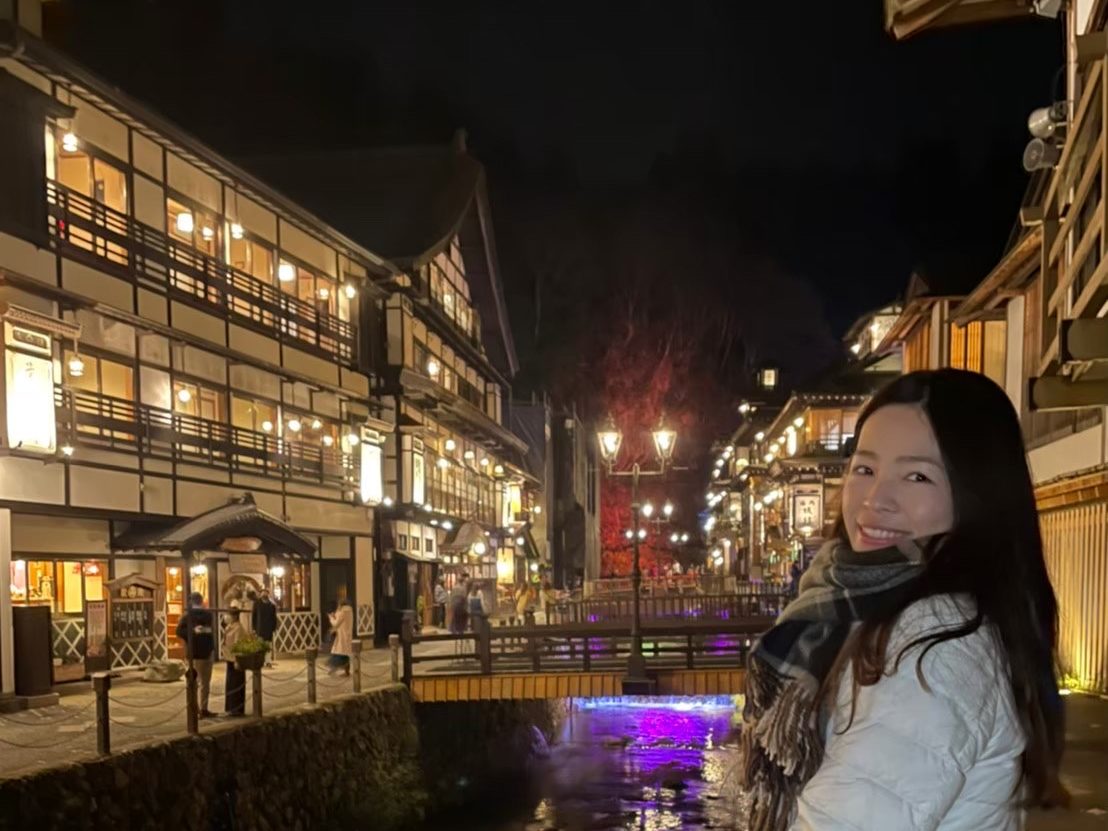
Reservations are hard to come by here due to the small number of rooms and popularity of the inn. Early reservations are essential.
In addition, ryokans that are representative of Ginzan Onsen are high-priced, with prices ranging from 150 euros or more per person at the lowest end, to 600 euros at the highest end. However, it is the kind of inn where you will want to splurge and stay at least once.
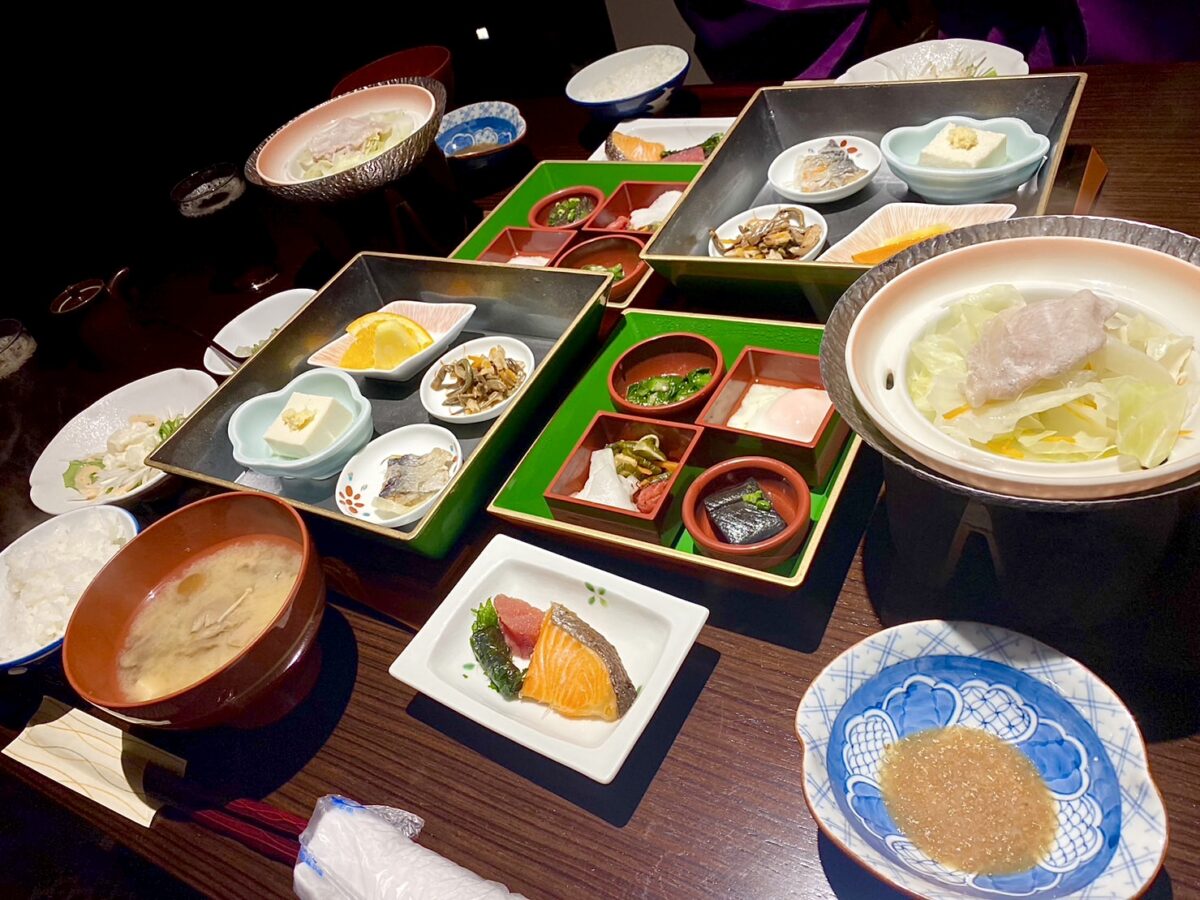
If you stay at a ryokan with a dinner plan, you can have this kind of meal in your room!
I did not stay overnight here, but stopped by to take in the spectacle. I visited in November and it was so cold that I had to bring a scarf, gloves, and a down jacket.
It is an inconvenient place to visit unless you rent a car.
4. Zao Juhyo ❄️ (Yamagata)
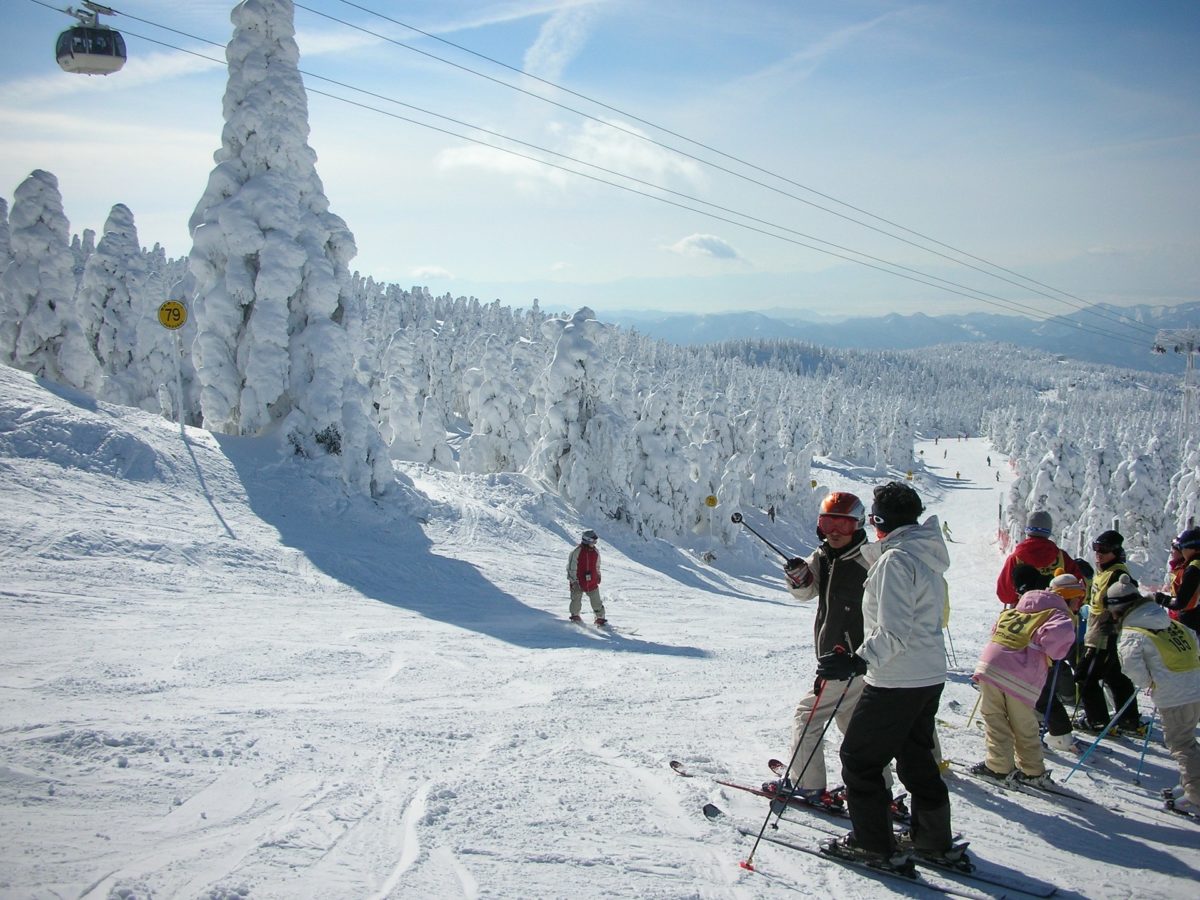
Juhyō in Yamagata Prefecture is known as a spectacular natural art created by the cold and humidity of winter. Trees covered with snow and ice glisten in the sunlight, creating a fantastic landscape.
With this beautiful scenery of tree ice as a backdrop, skiing, snowboarding, and other winter activities are sure to be a great experience.
Winter temperatures in the mountains during this season are below minus 10 degrees Celsius, so you need to be well prepared.
5. Zao fox village 🦊 (Miyagi)
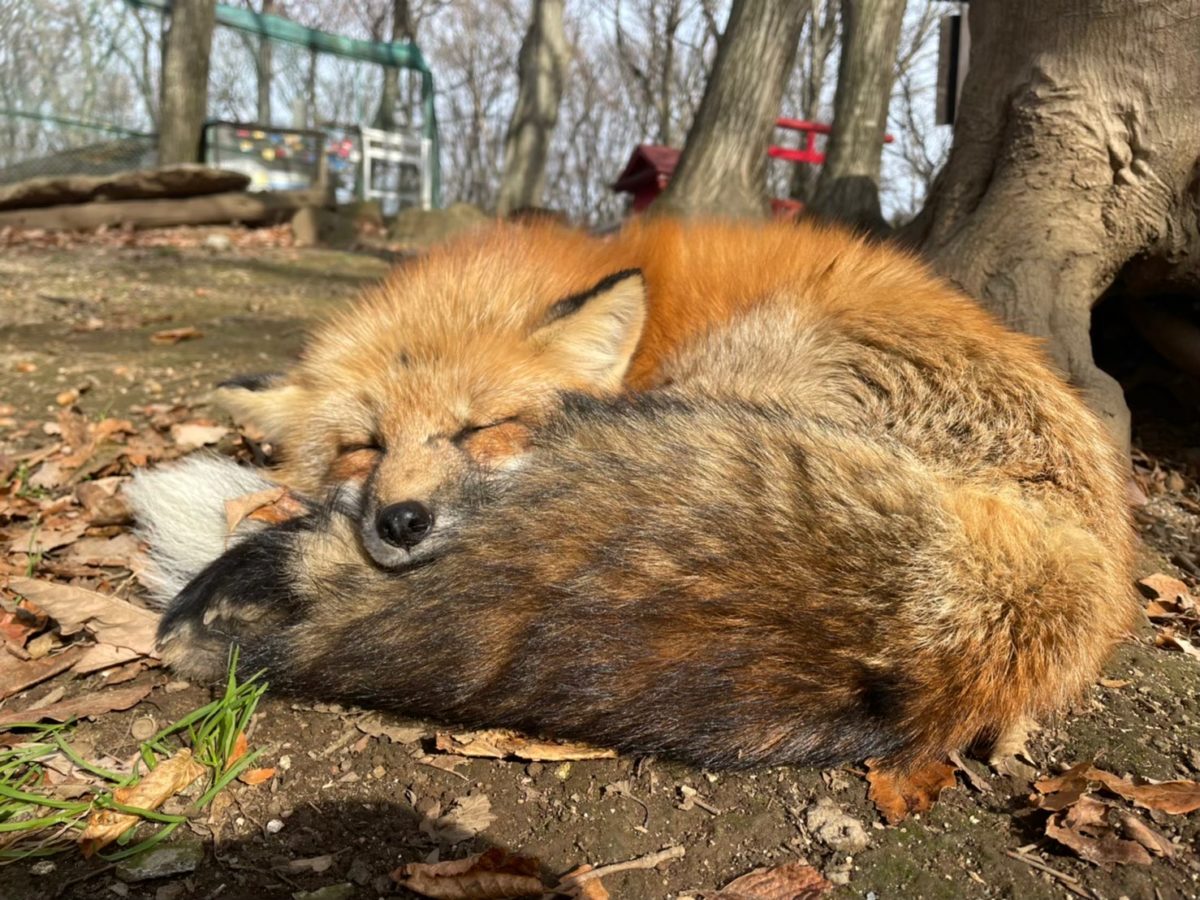
Zao Kitsune Village is a unique facility where you can see a very large number of foxes up close. This is the only place in Japan where you can play directly with foxes.
It is a sacred place for fox lovers. Visitors can observe the natural ecology and behavior of various foxes up close. The foxes here do not have to worry about echinococcus because they have been examined by a veterinarian.
In the mountains of Japan, red foxes are often seen, but in this fox village, you can meet six different species: the rare silver fox, the Arctic fox, the platinum fox, and the cross-shaped fox. It was like a dream come true to meet these foxes that I have only seen in picture books or on TV.

I had an image of foxes as gentle, but to my surprise some of the foxes could be quite aggressive which led to some funny encounters with playful biting and snarling sounds.
However, most foxes were not aggressive, they were napping comfortably or basking in the sun, and I am sure you will be captivated by their adorable expressions and actions.
You can also experience holding and feeding the foxes. It was so cute to see the foxes looking up and waiting for you that I bought food twice.
In the cuddle experience you will be surprised that the fox is fluffier than you ever imagined. The experience cost 600 yen. You will want to hug it all the time.
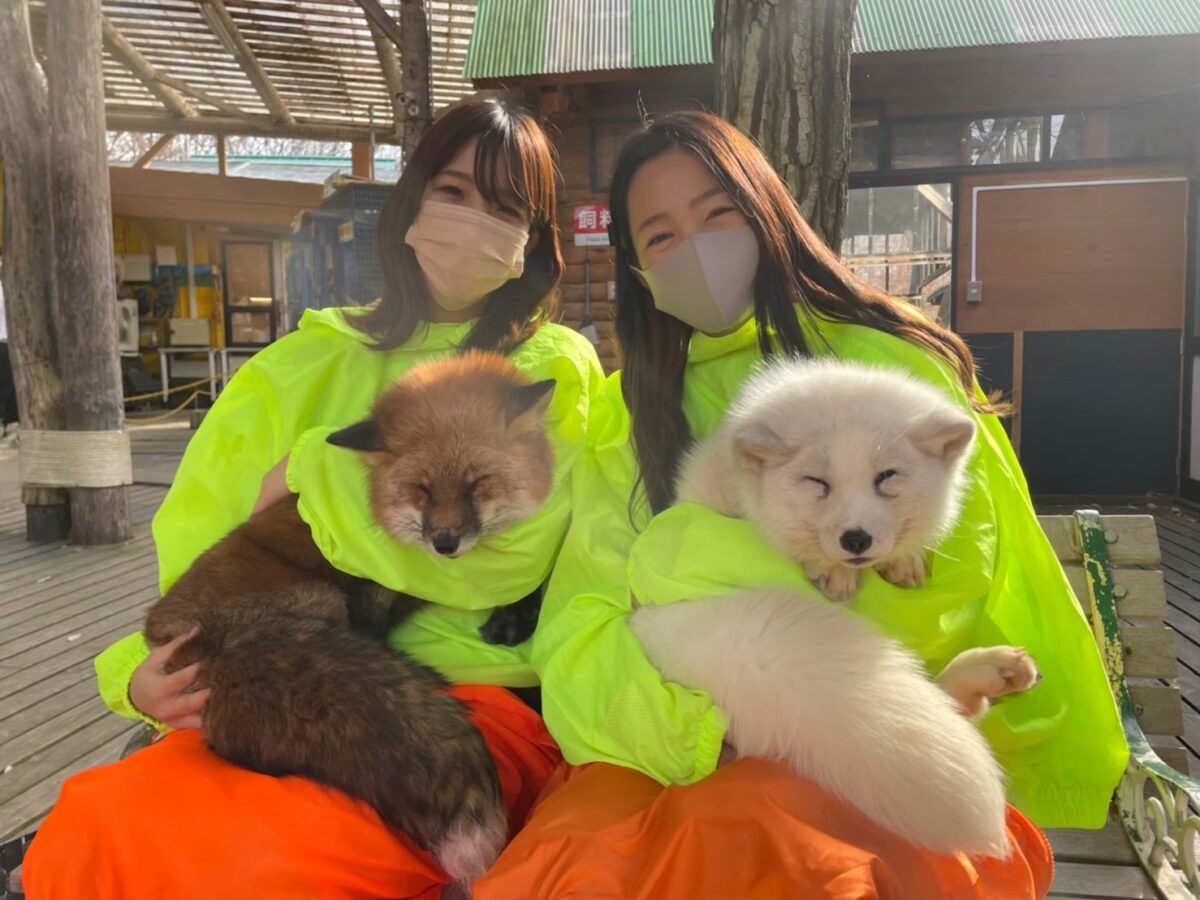
What’s more, to our surprise, the fox’s tail was as thick as our thighs. The foxes we held were very docile and it was a wonderful experience.
There was a limit on the number of people that can get in, so we recommend that you get in line early.
6. Hitachi seaside park 🌷 (Ibaraki)

A vast park, this place is famous for its seasonal flowers, which attract tourists from home and abroad. In particular, the blue carpet of nemophila in spring is breathtaking and causes a huge traffic jam early in the morning. Seeing the nemophila in this park is one of the things I want to accomplish in my life.
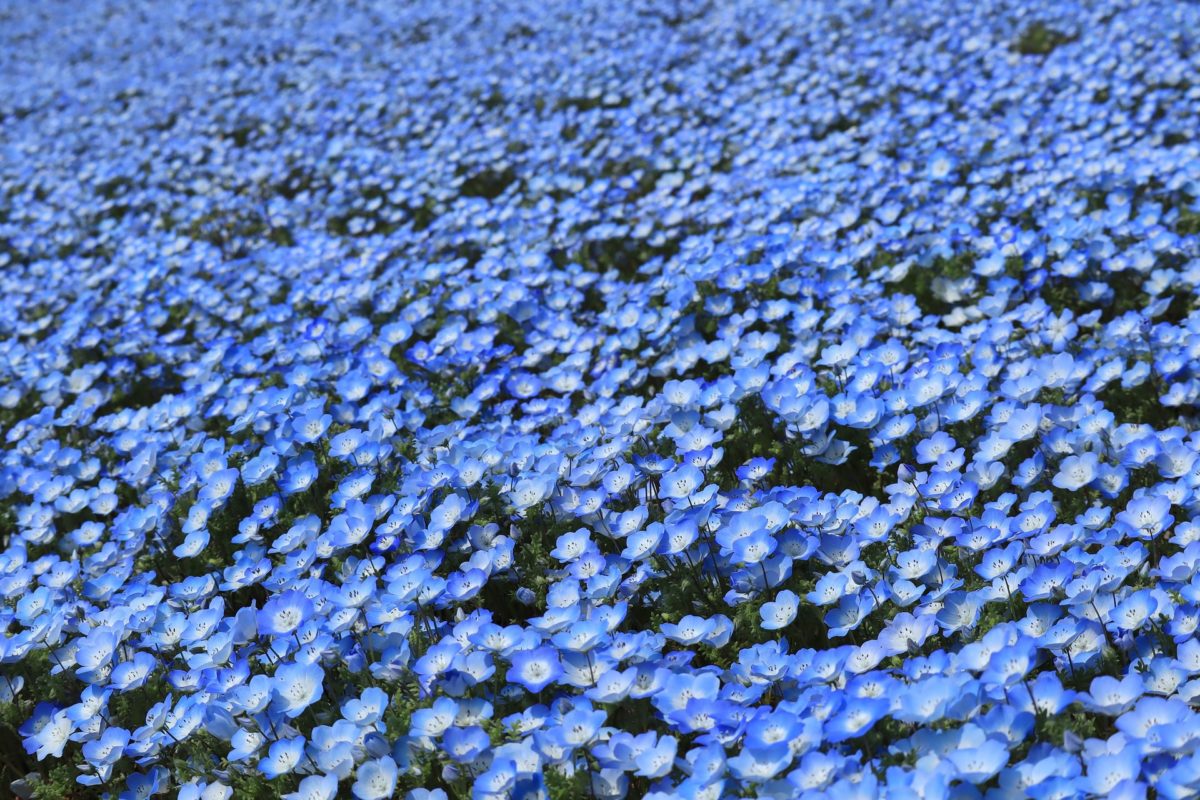
I visited in the fall to see the kochia fields. The red kochias were blooming all over the place and the contrast with the blue sky was amazing.
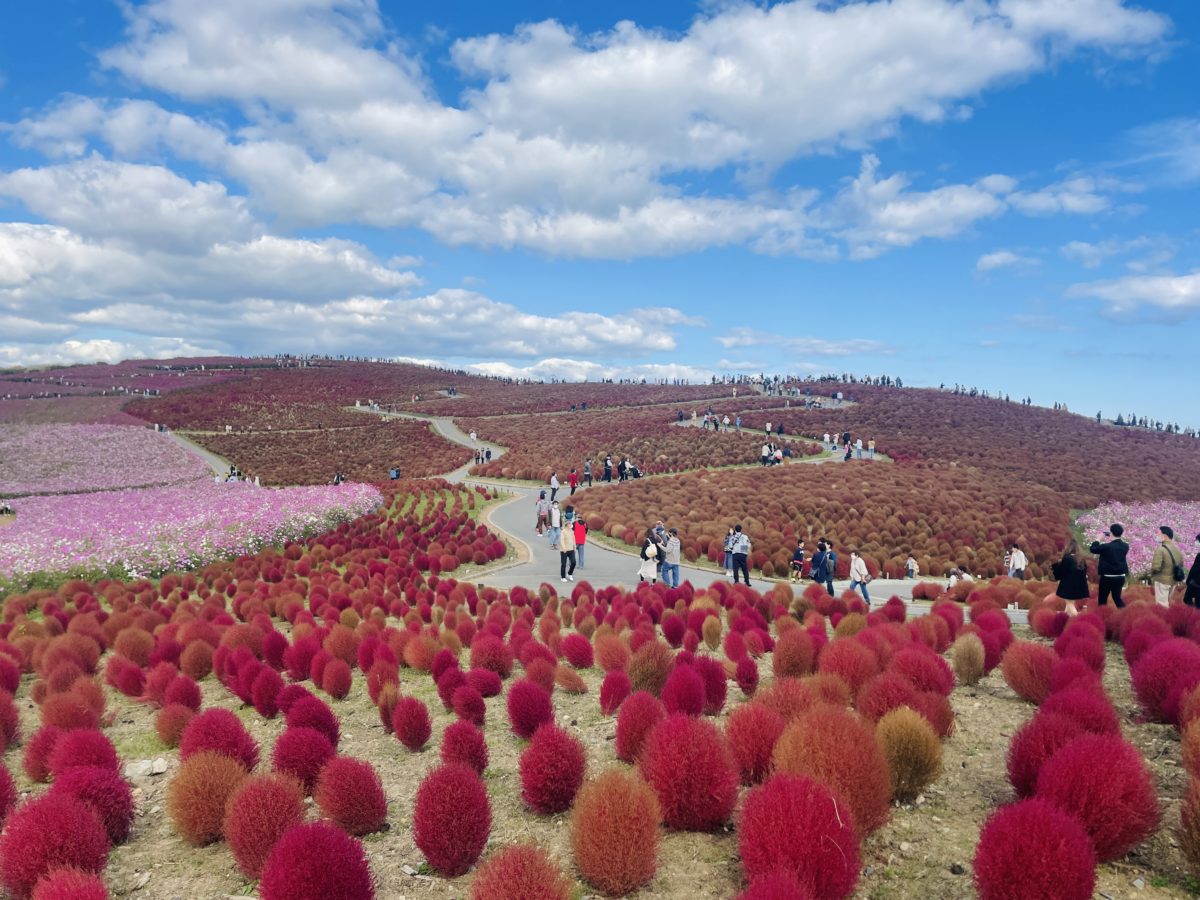
There is also a large cosmos field, and I was extremely fascinated by the sight of countless cosmos swaying in the wind.
The admission fee of only 450 yen allows you to view such a wonderful sight, so it is a very good value.
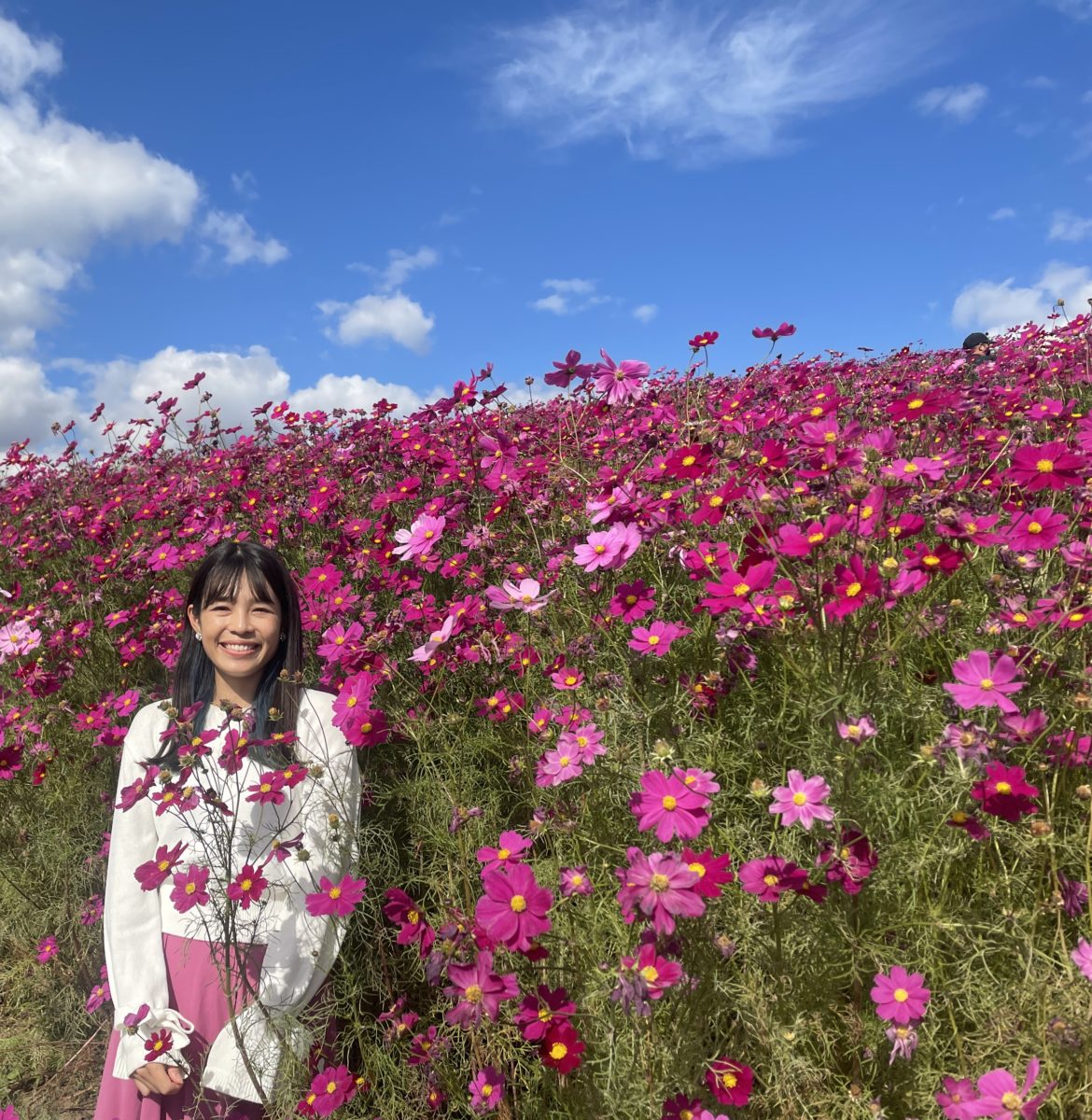
7. Nikko Toshogu Shrine ⛩️ (Tochigi)
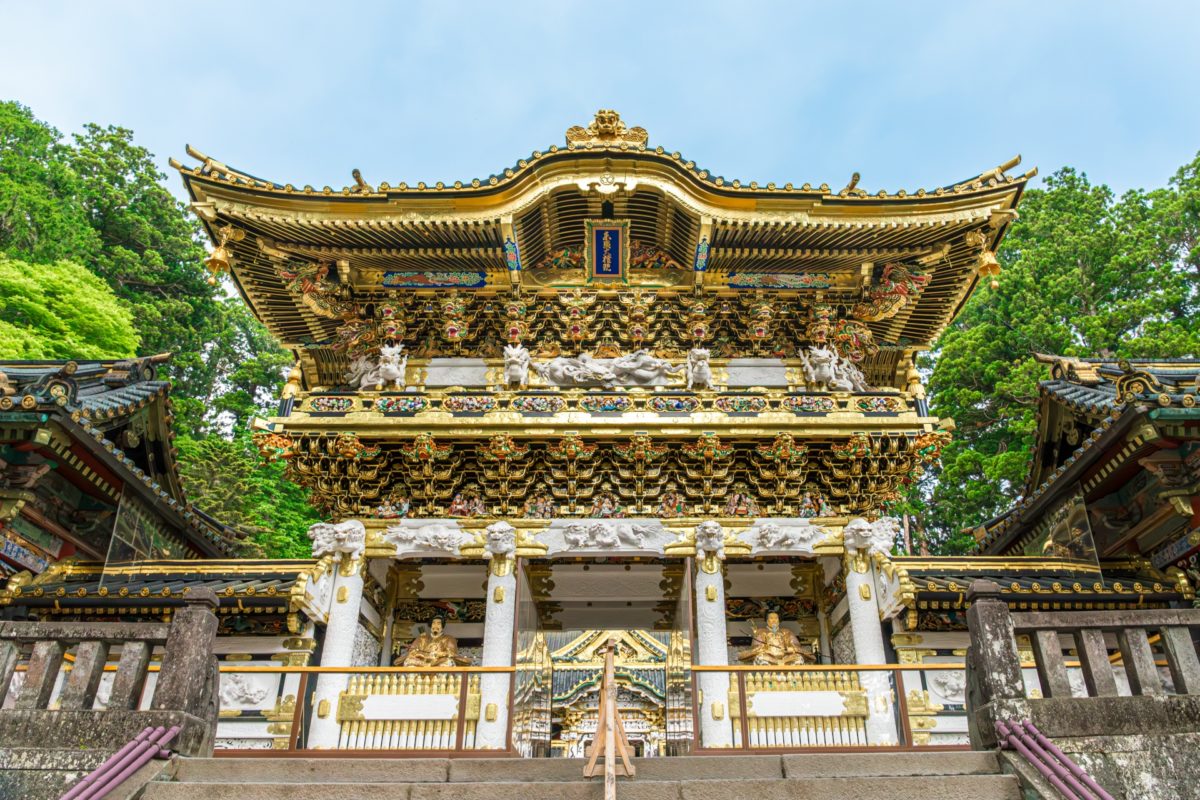
Nikko Toshogu Shrine is known as an important shrine dedicated to Tokugawa Ieyasu, the first shogun of Japan, and is registered as a World Heritage site. The shrine grounds are lined with colorful carvings and gold leaf decorated buildings, most notably the “Sleeping Cat” and “Three Monkeys” sculptures.
The more than 5,000 sculptures, including monkeys, cranes, phoenixes, and dragons, are said to represent a world in which everyone can coexist.
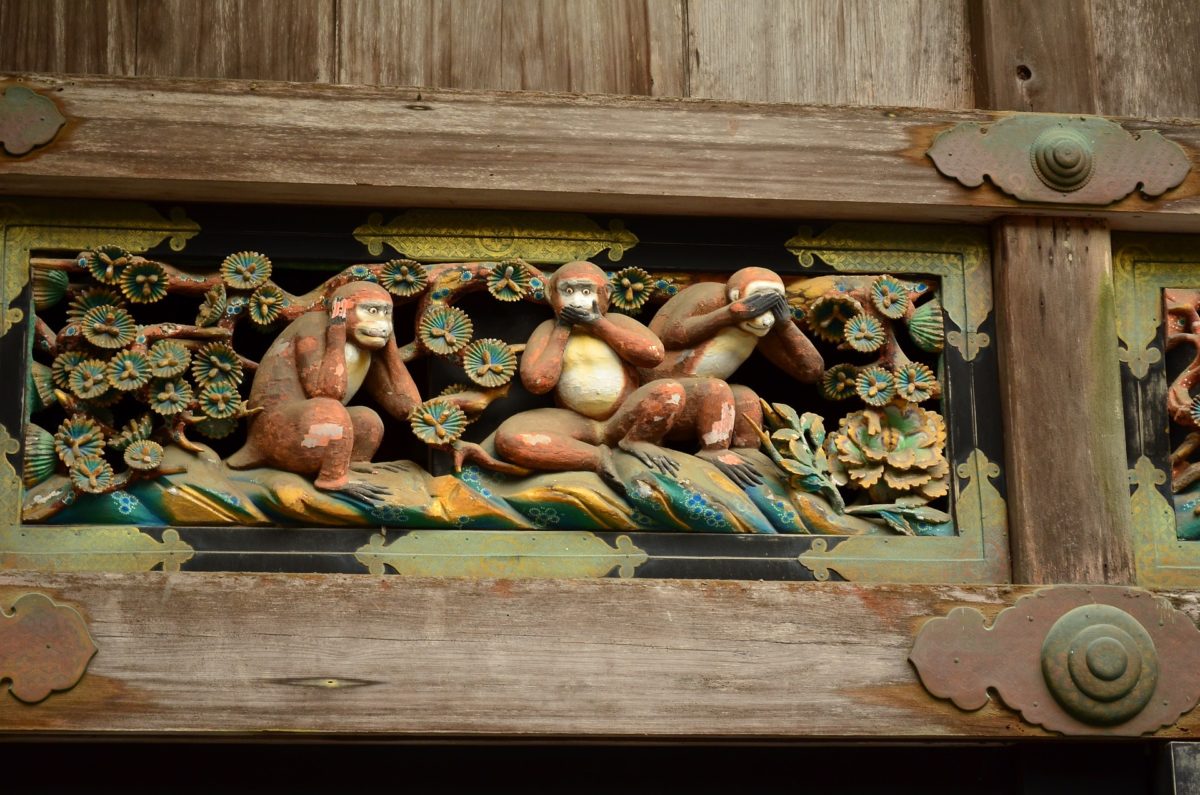
As a Japanese person, we deeply value the lesson of the “Three Monkeys”, they have their eyes, ears, and mouths covered, which represent the saying “See no evil, hear no evil, speak no evil.” It’s a core belief for us to avoid noticing, hearing, or discussing the negatives of others to prevent conflicts.
There are “Three monkeys” in the part of the building pictured below.
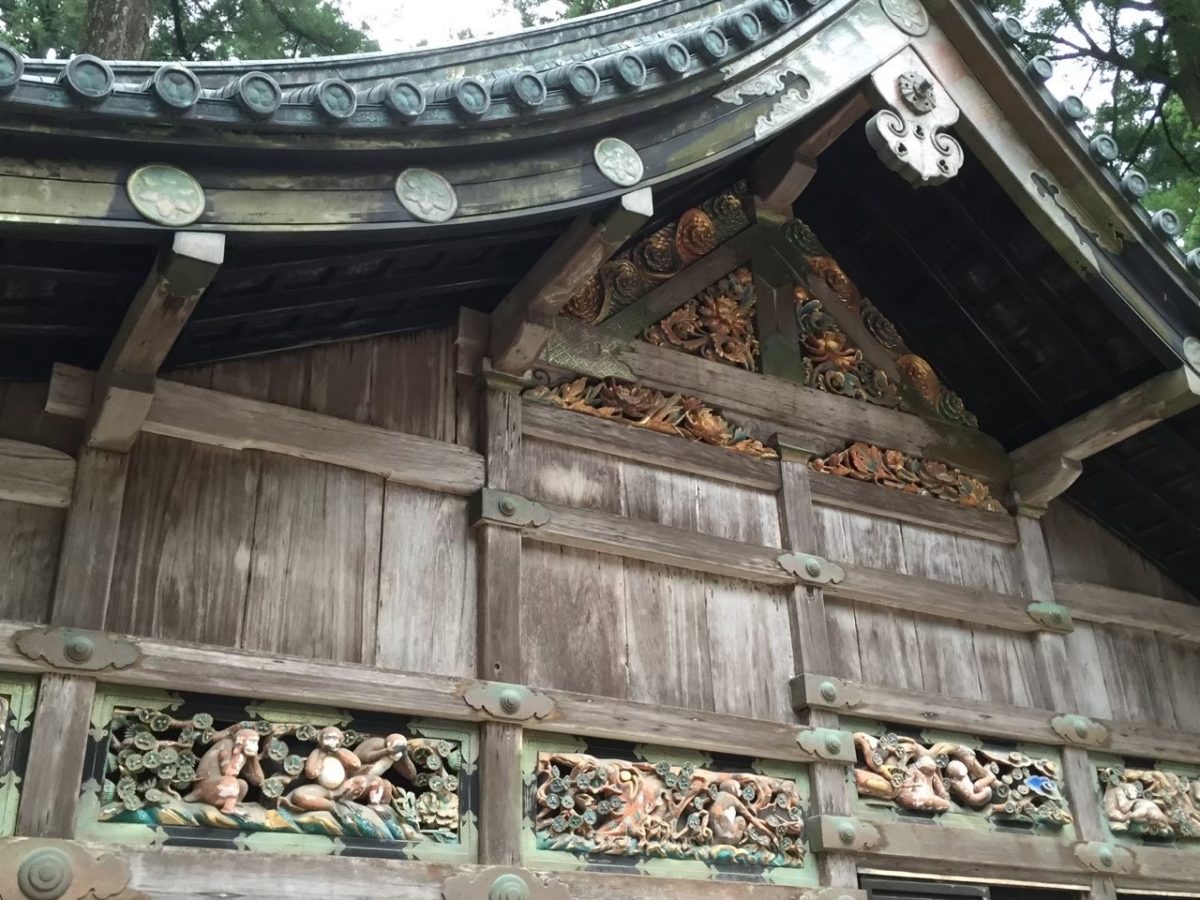
Please check my guidance on how to behave at Shrines and Temples in Japan for tips on how to blend in with the locals at these sacred spots.
8. Senso Temple 🛕 (Tokyo)
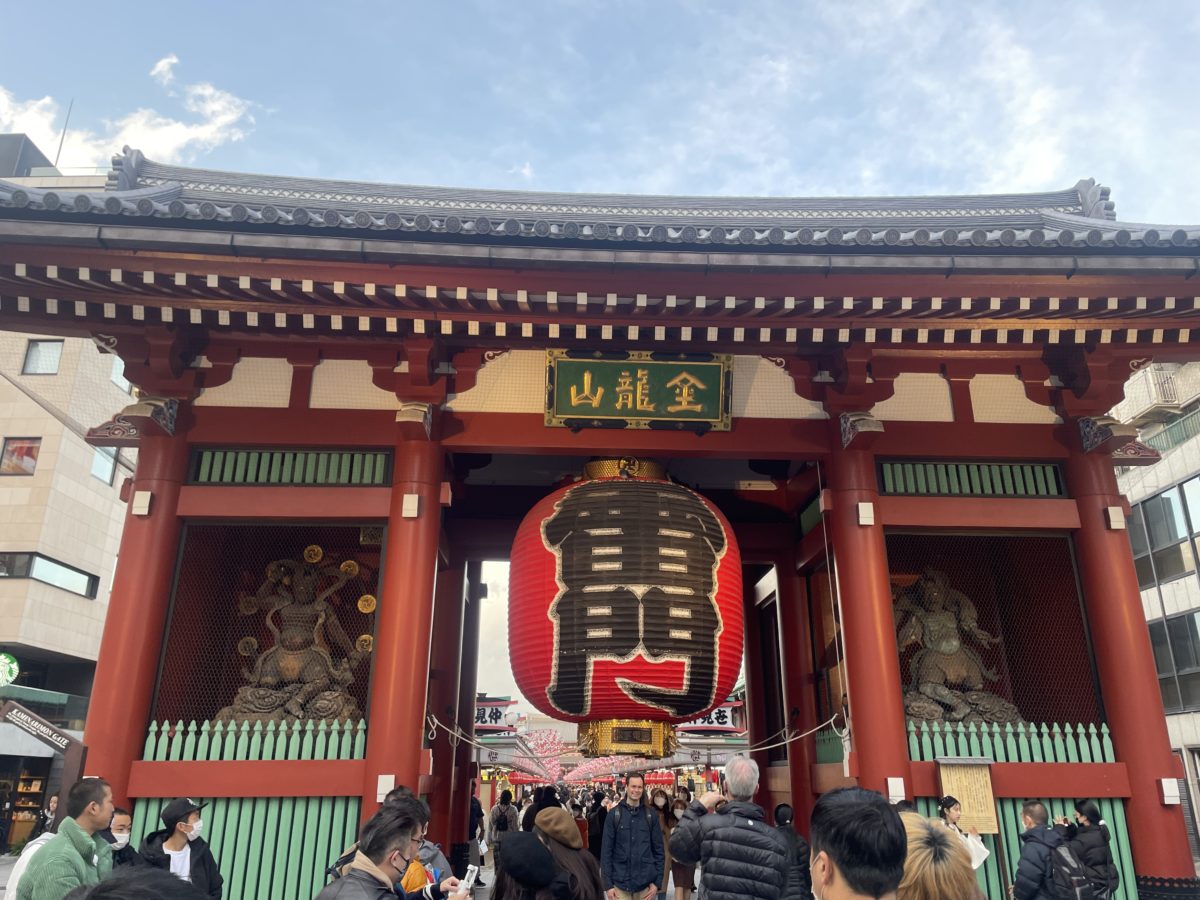
Senso Temple is the oldest Buddhist temple in Japan. Passing through the huge lanterns of the Kaminari gate, you will find the shopping street Nakamise Dori, where you can find many unique Japanese sweets and souvenirs, and even taste them freshly made.

After walking along this street for a while, I found a line of stores around the center of the street on the right.
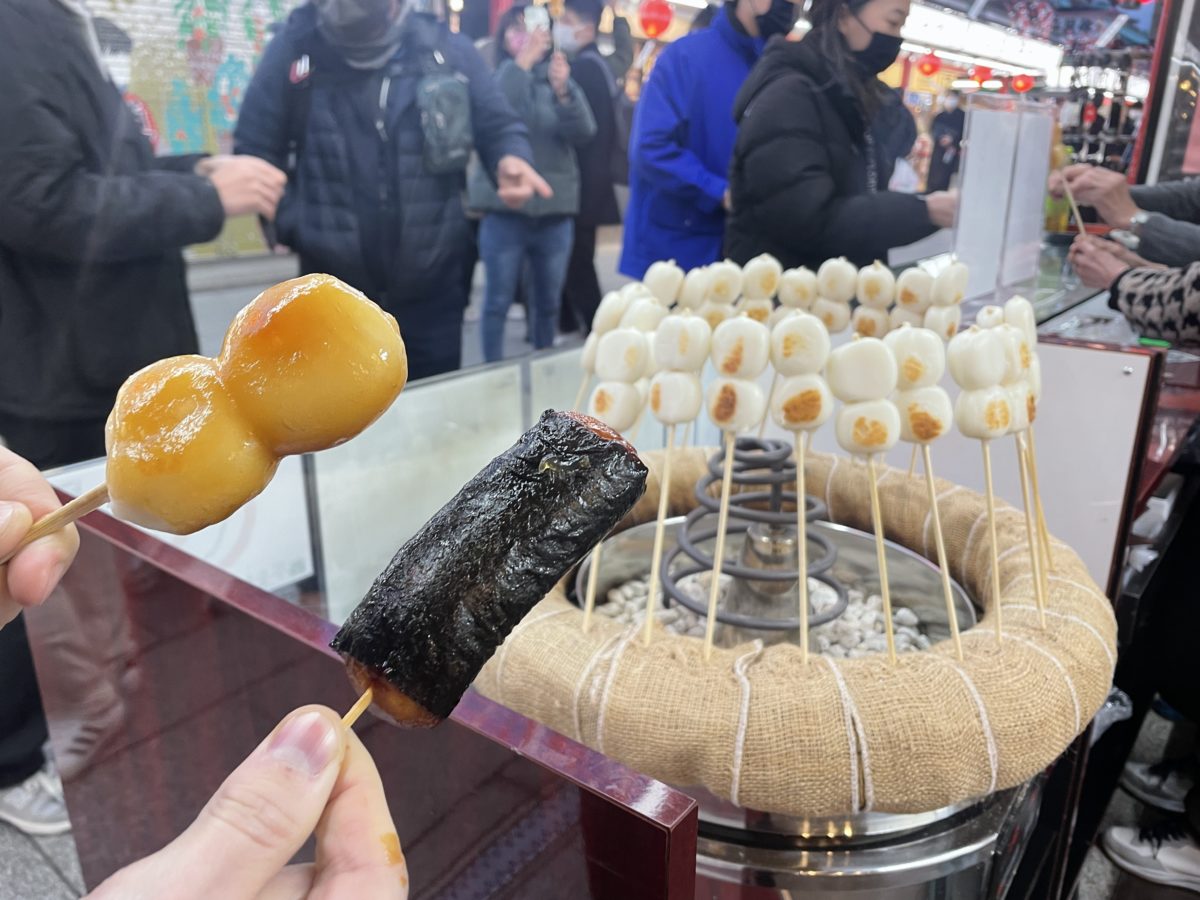
These look like marshmallows, but they are sticky dango (rice cakes made from rice). Left one is a typical japanese dango flavor with sweet and salty taste. Right one is very tasty wrapped in seaweed and dipped in sauce. I preferred the right side because I am used to and like the taste of seaweed.
I know some tourists do not like the taste of seaweed, but this is a Japanese sweet i think you should give a try even if you are not use to eating seaweed.
Be careful not to chew it too much or it will get stuck in your throat.
Japanese people are very fond of omikuji, and many people tend to draw them, especially at the beginning of the New Year.
First, shake the tube as shown in the video, then turn it upside down and a stick will come out. Take out a piece of paper from the drawer that has the same letter written on it as the letter on the stick. That is the omikuji on which your fortune is written.
Omikuji are used to predict one’s fortune in terms of money, health, love, etc. I think this is one of the best places to visit in Tokyo for an authentic experience, even as a Japanese!
Omikuji here are also written in English and are inexpensive at 100 yen, so please give them a try!
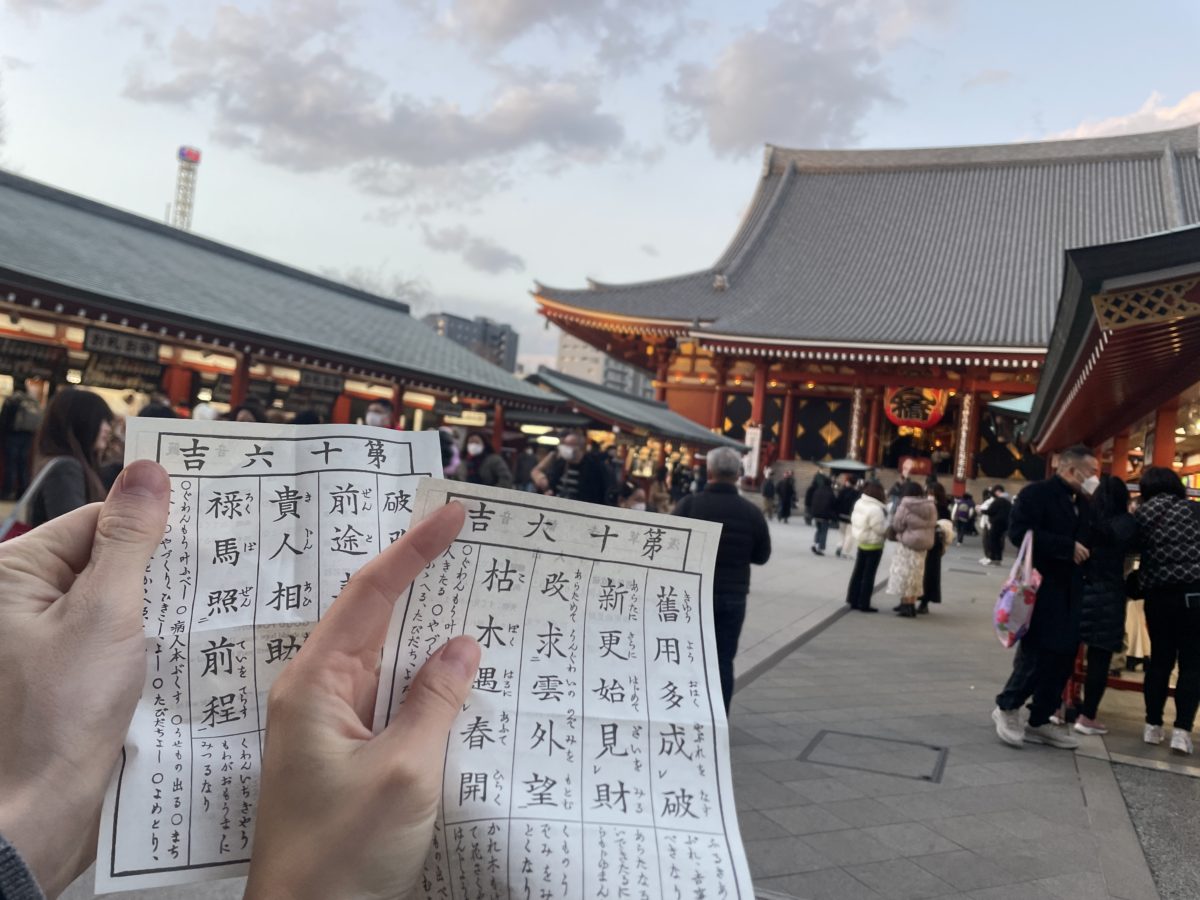
9. Hakone ♨️ (Kanagawa)

Fuji and Lake Ashi, its spectacular natural scenery and natural hot springs attract tourists. The easy accessibility from Tokyo makes it a popular hot spring resort for tourists. A wide variety of accommodations, from luxurious resort hotels to traditional ryokan (Japanese-style inns), are available for tourists to choose from according to their needs.
Around Hakone Yumoto station
Around Hakone Onsen Station, various restaurants and souvenir shops are lined with beauty and crowded with tourists. You can eat your way through and fill up, or you can go to one of the restaurants.
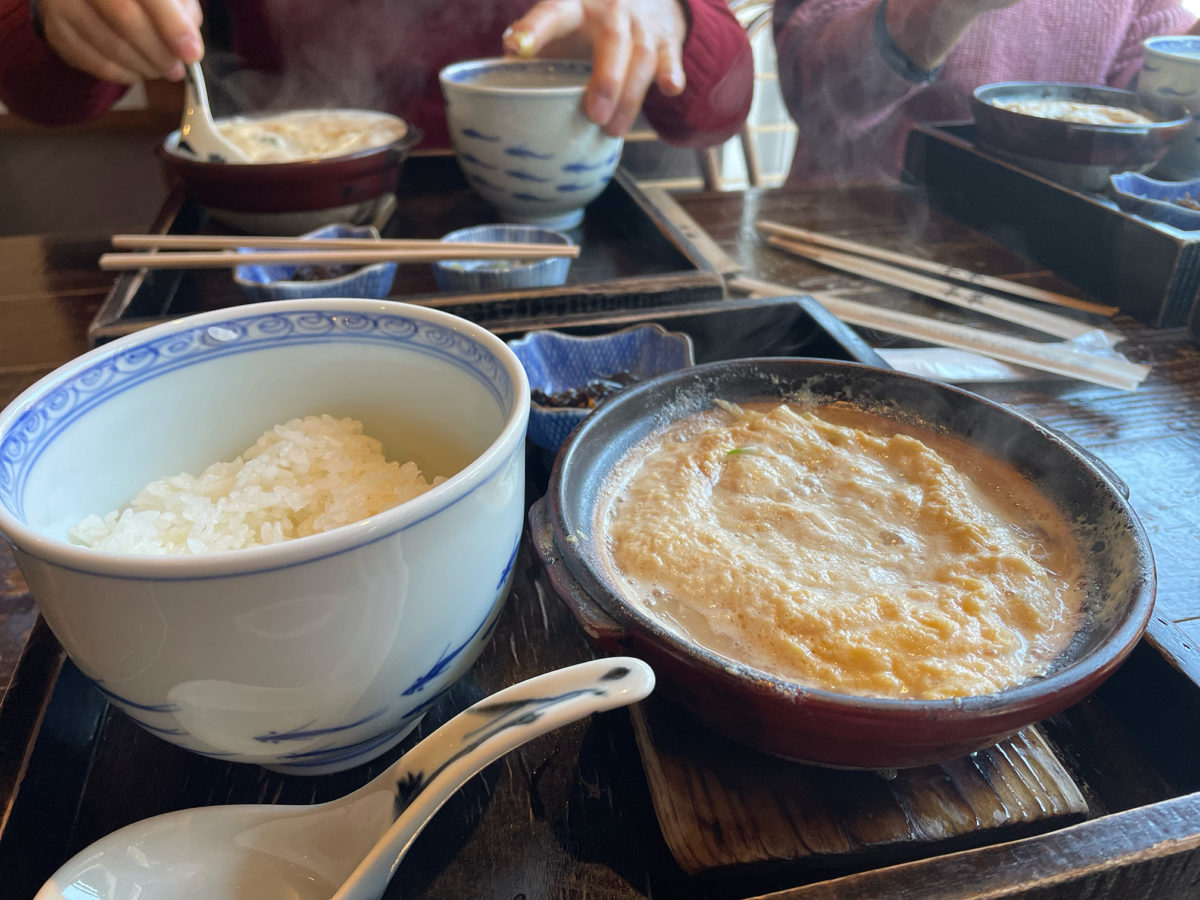
I had a bowl of yuba rice here. Yuba is a healthy traditional ingredient made from soy milk and is high in protein and low in calories. The yuba is made with plenty of spring water and tastes the best, and furthermore, it was intertwined with the dashi broth and tasted extremely soft.
There was a wait of over an hour, but time was not wasted as our turn came while we filled out a list and browsed the souvenirs on the main street.
Lake Ashi
Other activities in the Hakone area include cruising and hiking on Lake Ashi; hiking in February was very cold as there was still snow on the ground, but the air was very clear and pleasant.
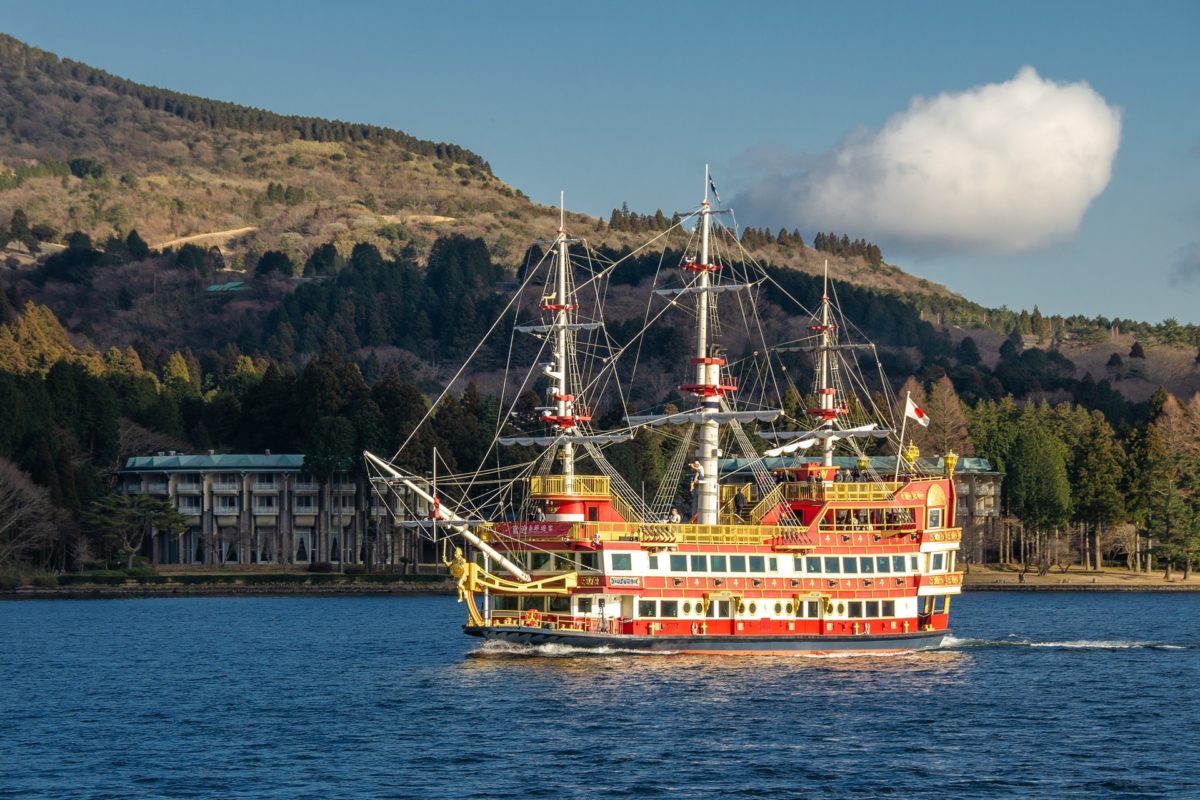
Owakudani
At Owakudani, you can see Mt.Fuji and feel the white steam and smell the sulfur that rises from the volcanic activity. The sulfur smells like farts, but the sight of the rising steam is a sight unique to hot spring resorts. There is a 700m long parkway that takes you close to the fumarole. The smell of sulfur can be harsh, but you can learn more about the formation of the volcano through an explanatory plate.
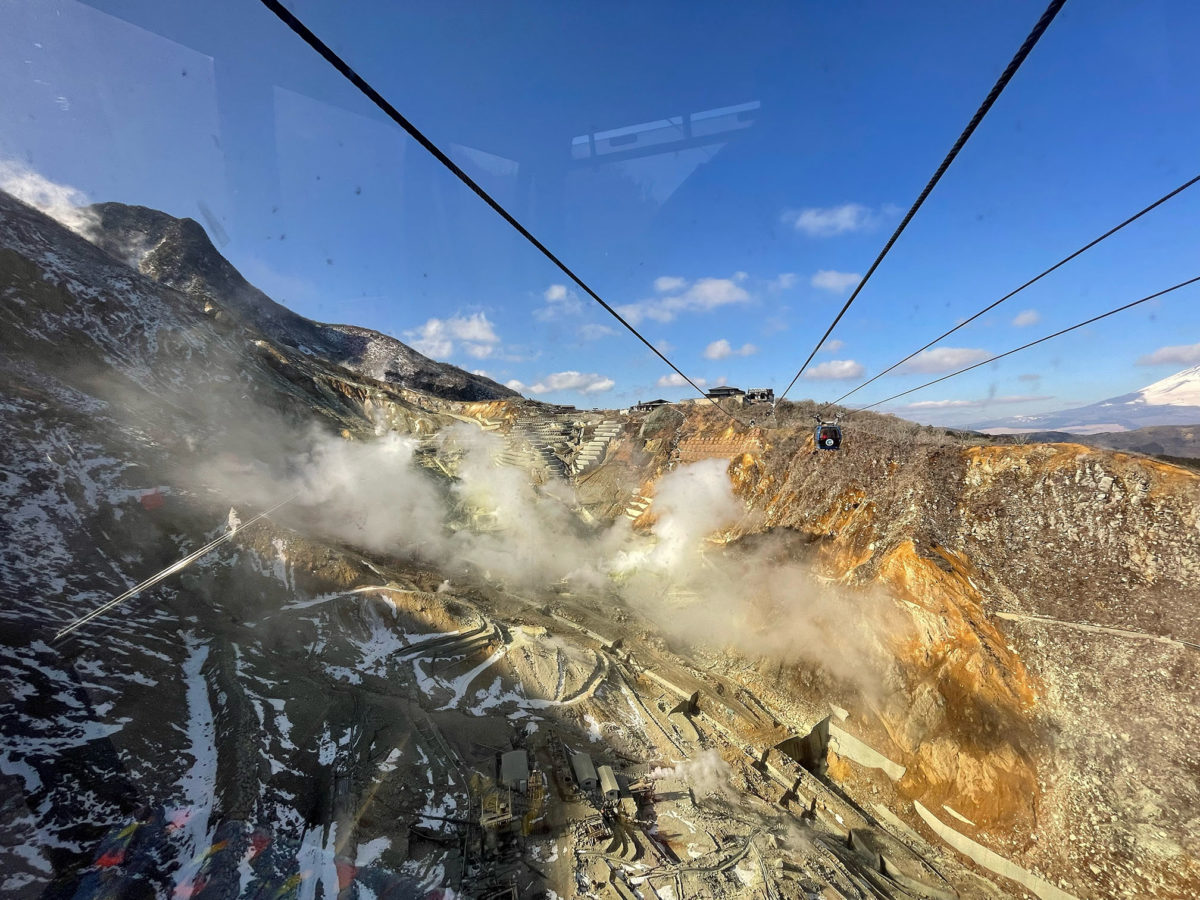
Black eggs are a specialty here. Using geothermal heat and chemical reactions, the eggs are boiled to produce black boiled eggs. I have never seen such a black boiled egg. It is a black boiled egg as shown in the picture below. This means that you can enjoy boiled eggs only in a hot spring resort.
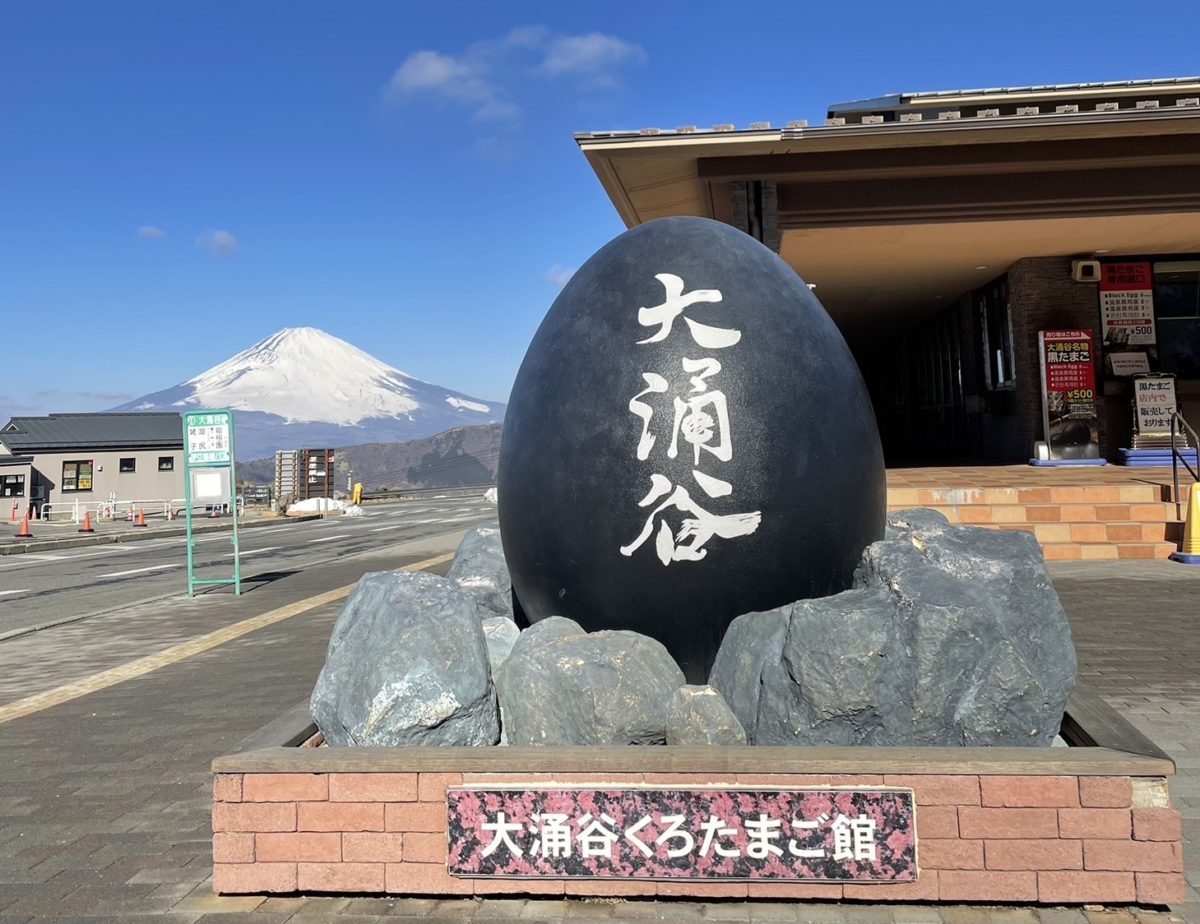
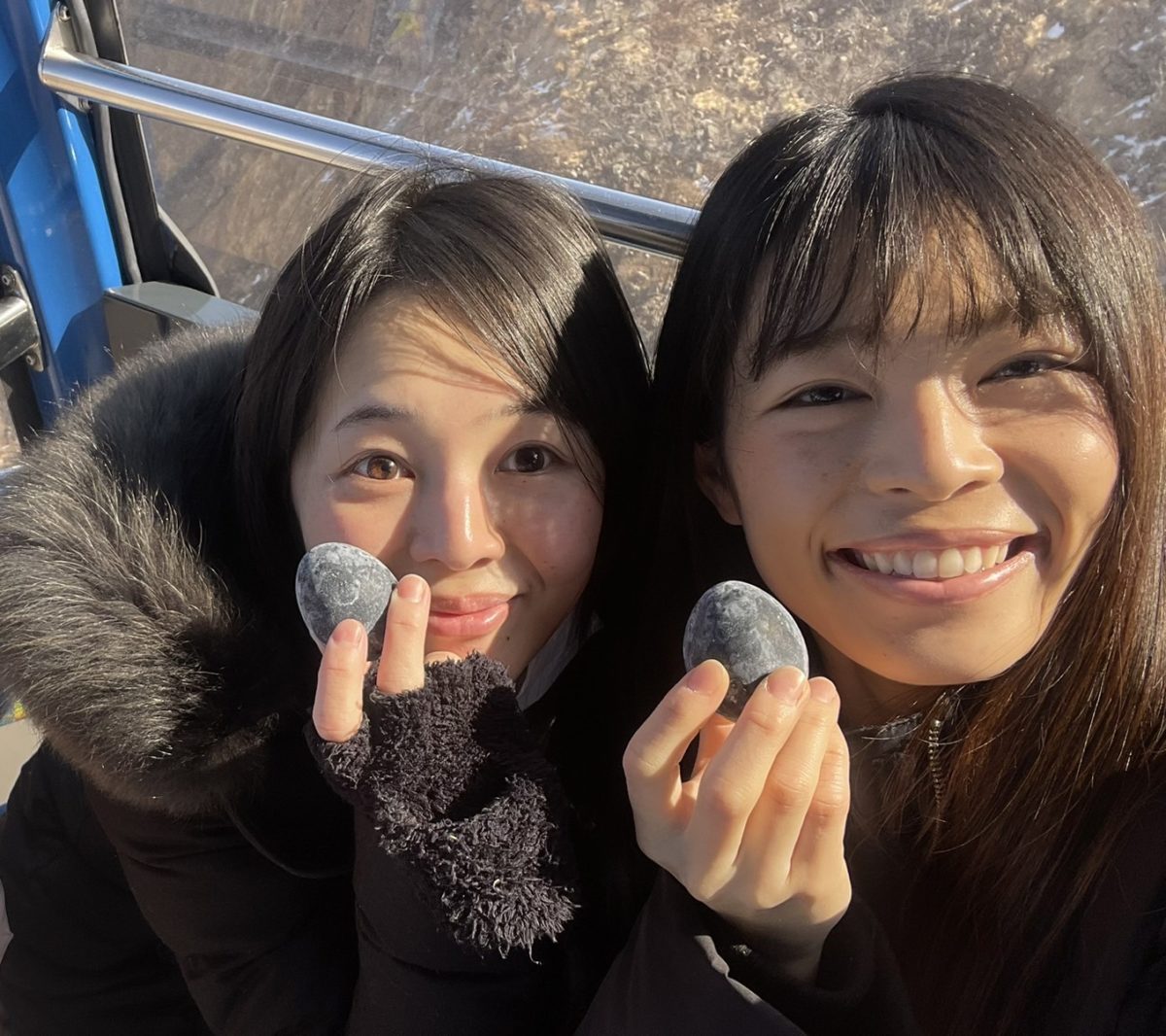
10. Around Mt.Fuji 🗻
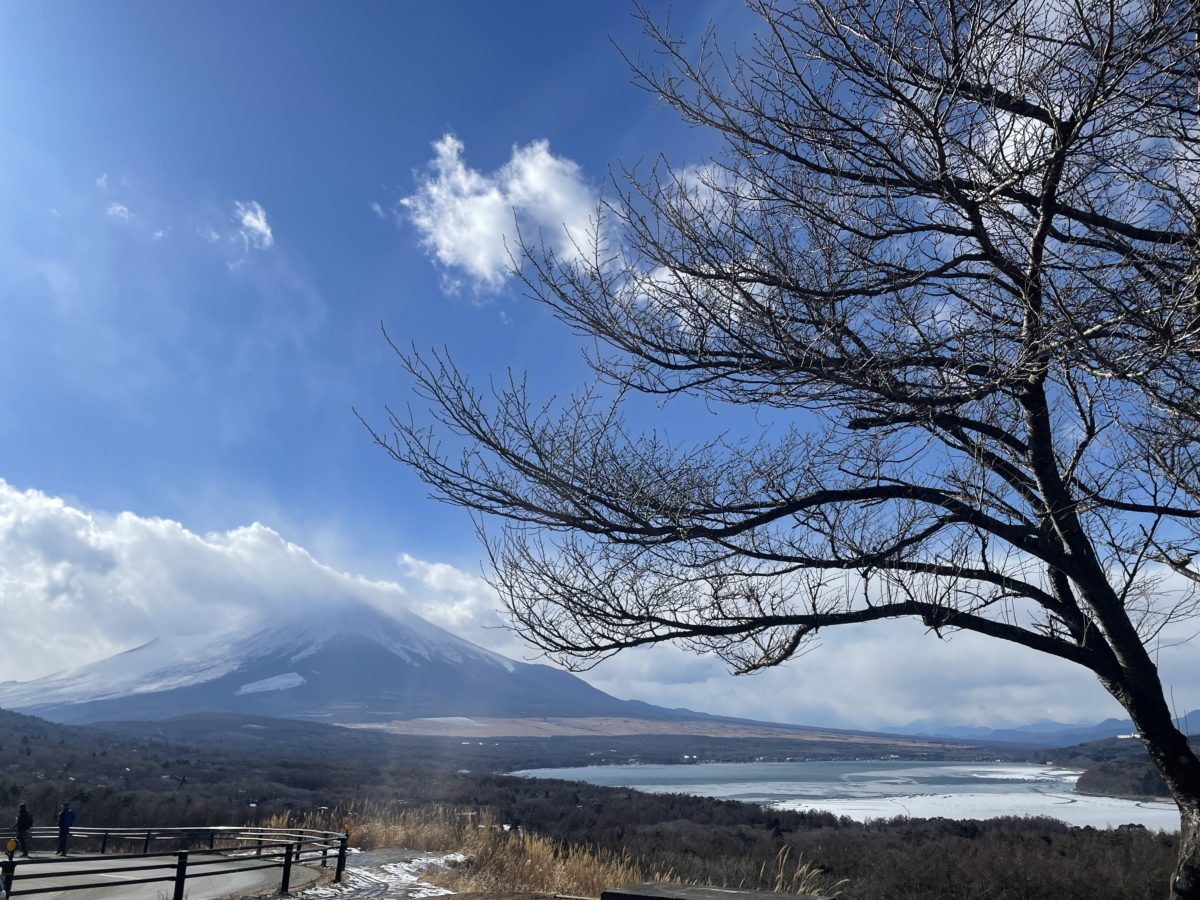
In the Kawaguchiko area, you can relax and enjoy hot springs, specialty foods, and nature in the magnificent view of Mt.Fuji.

Arakura Fuji sengen Shrine
Arakura Fuji sengen Shrine is a place where you can view the shrine and the magnificent Mt. Fuji at the same time, and in spring, you can also see cherry blossoms, which is a spectacular view.
I passed by a private house, wondering if I was in the right place, and arrived at the parking lot of the shrine. From there, we had to climb 400 steps, which was tiring, but as soon as we saw the view at sunset, our fatigue was gone and we were filled with emotion. I forgot to talk and just gazed at it. Mt. Fuji can be seen from anywhere around the area, but the view from this shrine was something special.
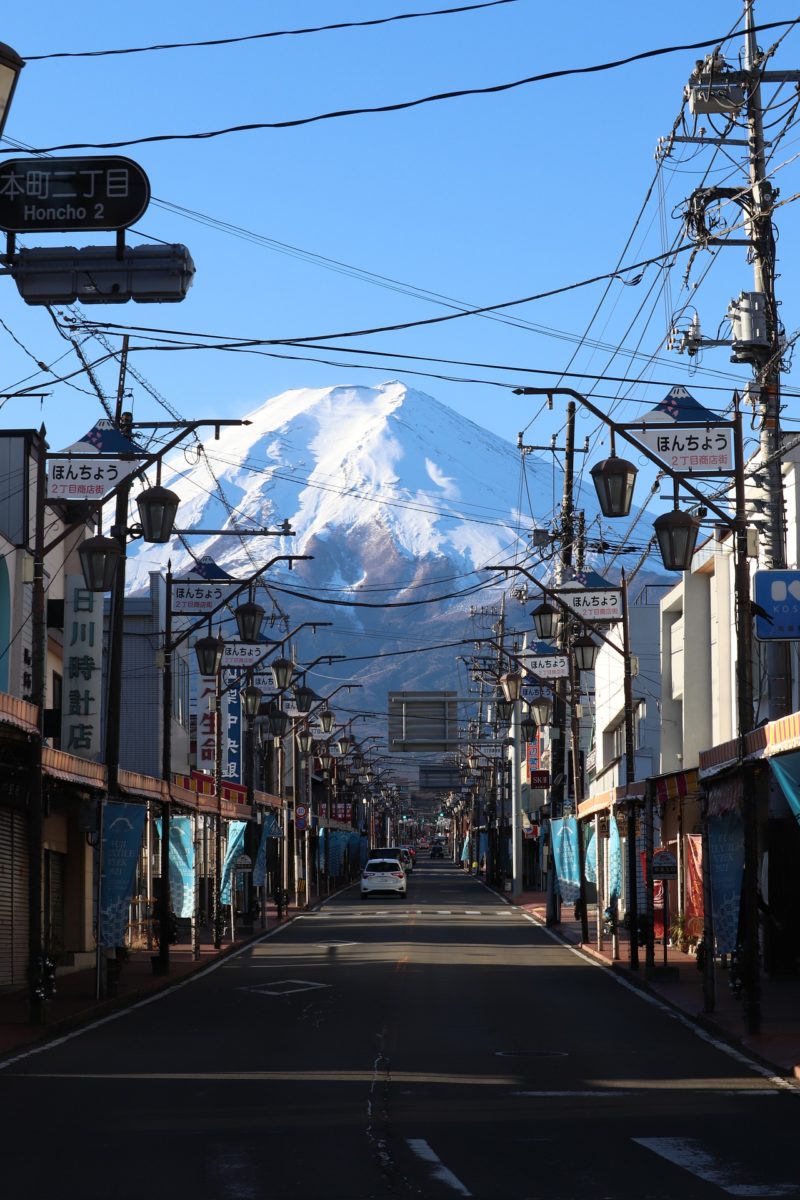
On my way back from here, I happened to find the spot where this photo was taken, which is often seen. Despite the fact that it was an ordinary shopping street, many people were setting up their cameras. If you want to take this picture, you can see the location if you follow the link under the picture above 📷
Hottarakashi Onsen
Hottarakashi Onsen is located near the top of the mountain and requires a short drive uphill. Here, you can enjoy the spectacular view of Mt. Fuji while soaking in the open-air bath. If you go early in the morning, you can see Mt. Fuji at the moment of sunrise, and the view is breathtaking. Fuji was hidden by clouds when I visited, so I would definitely like to revisit.
Fuji was hidden by clouds when I visited, so I would definitely like to revisit.
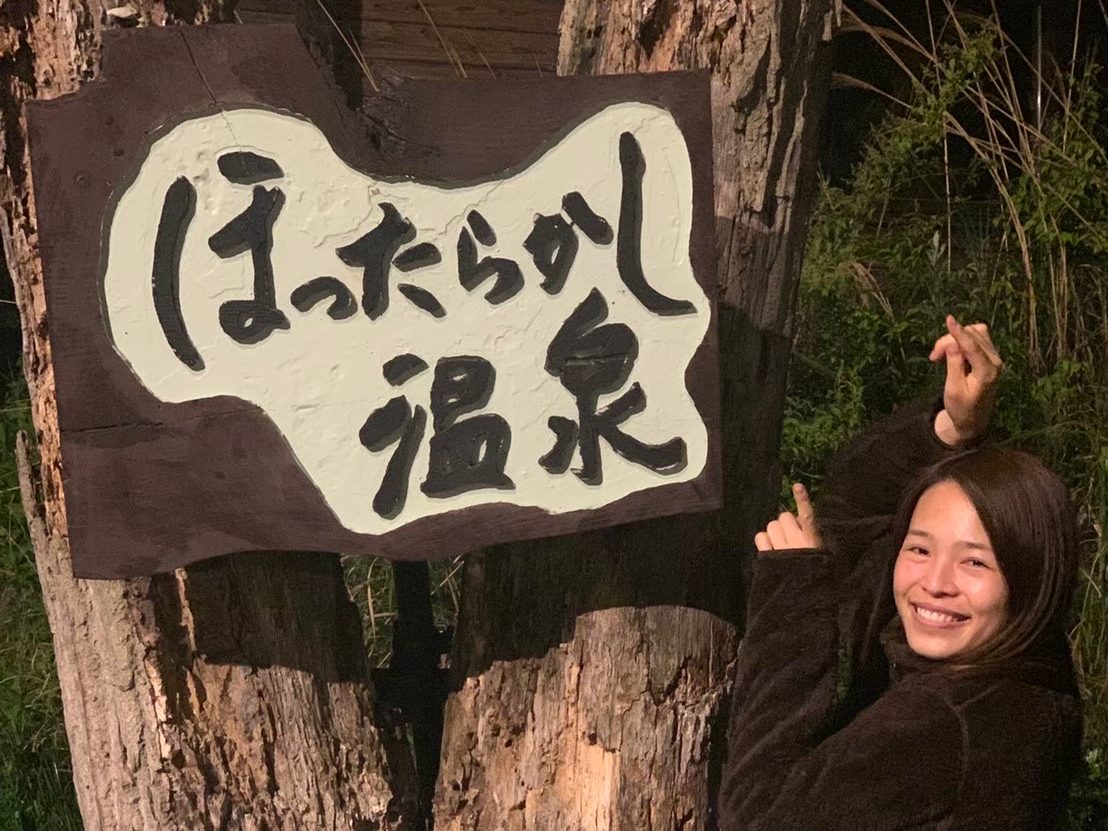

Oshinohakkai
Oshinohakkai is a spring area consisting of eight springs and is characterized by the clarity and beauty of its water.
Mt.Fuji, melted snow water flows deep underground for several decades, and fish swim comfortably in the clear water containing rich minerals. It is recommended to take pictures with the mystical scenery and Mt.Fuji.
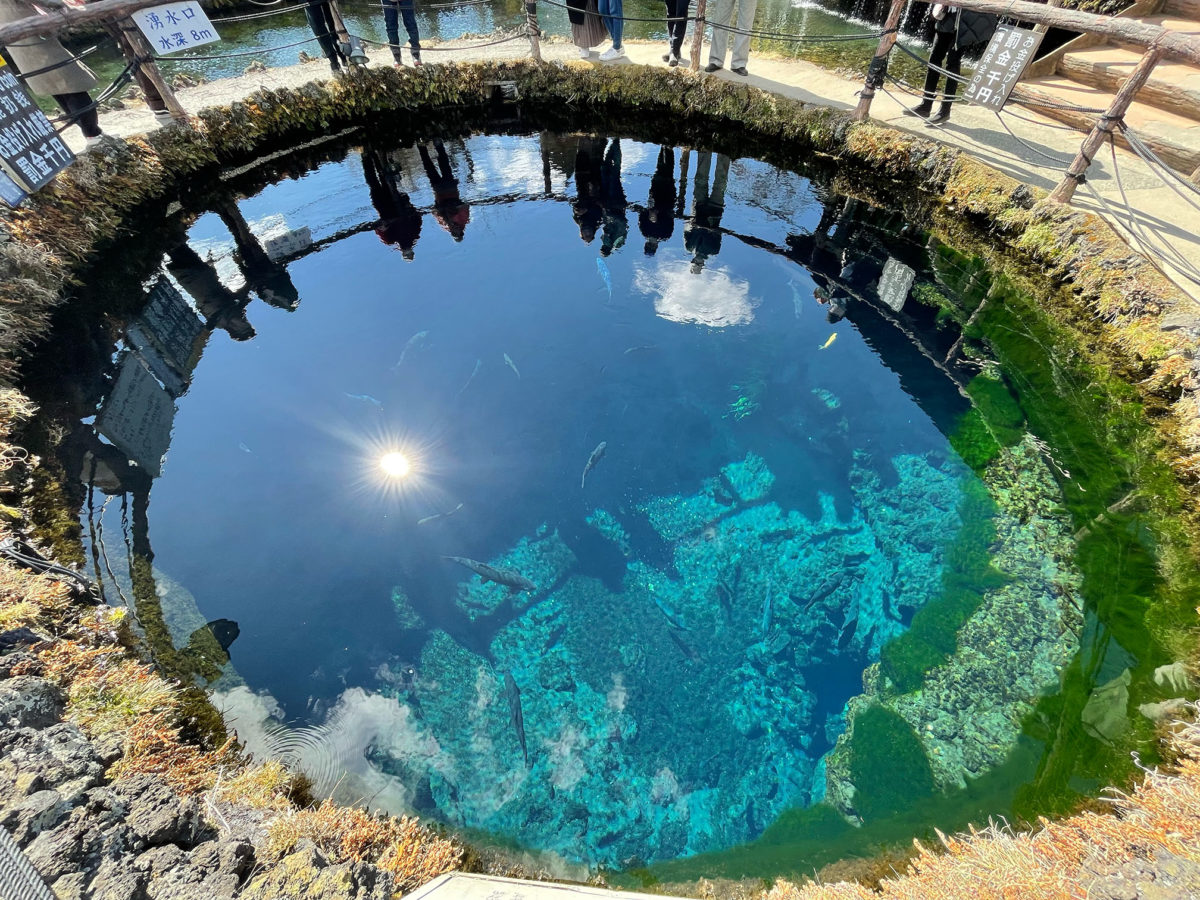
The photo above shows a pond called Naka Pond. The depth of this pond is 8 meters, but it does not look that deep because the bottom of the pond is clearly visible.
There are several spots where you can actually drink the natural spring water here. This water is rich in minerals and although Japanese water is soft, it was very soft and smooth. I think most people usually drink hard water, so you should definitely try it.
Local specialty: Hoto

Hoto is a specialty here. Whenever I visit Kawaguchiko, I always visit a restaurant called “Fudou”. Some stores have a modern design, while others look like Japanese houses.
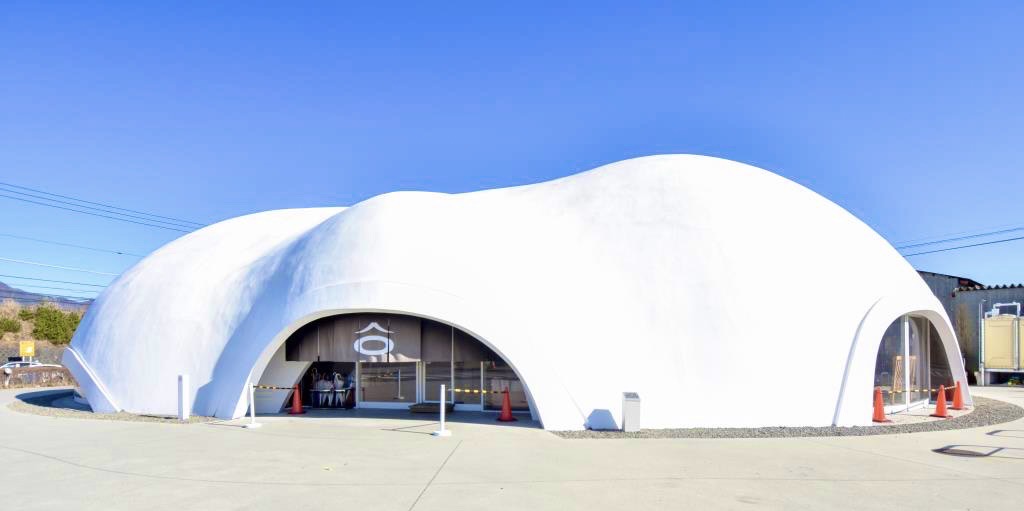
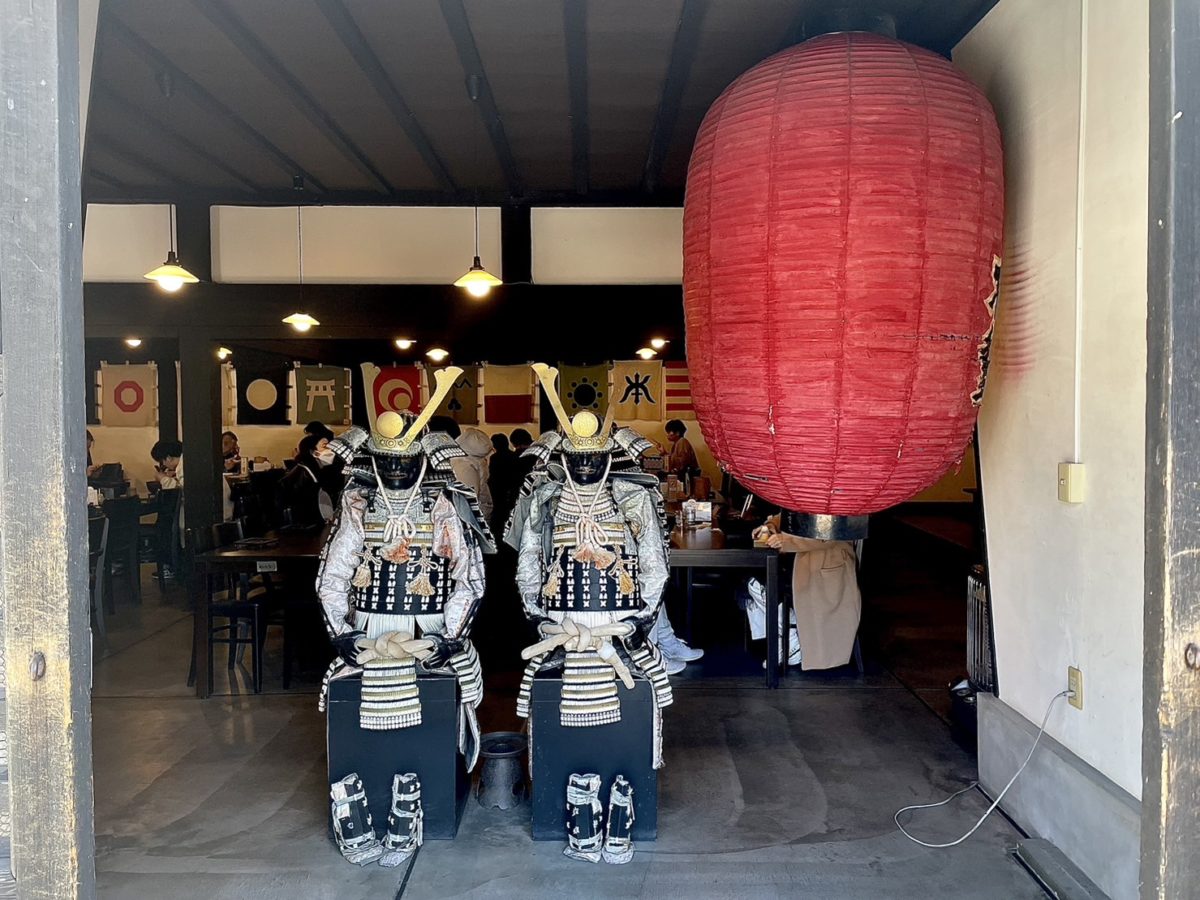
Hoto is a noodle dish made with many vegetables such as pumpkin and miso, and the soup is so delicious that you end up drinking so much of it before eating the noodles that you end up being full from the soup alone. Served in an earthenware pot, hoto is so uniquely Japanese that one cannot help but take pictures of it.
For more great places, food and experiences around Mount Fuji, please check out recommended things to do around Mount Fuji.
11. Kusatsu hot spring ♨️ (Gunma)
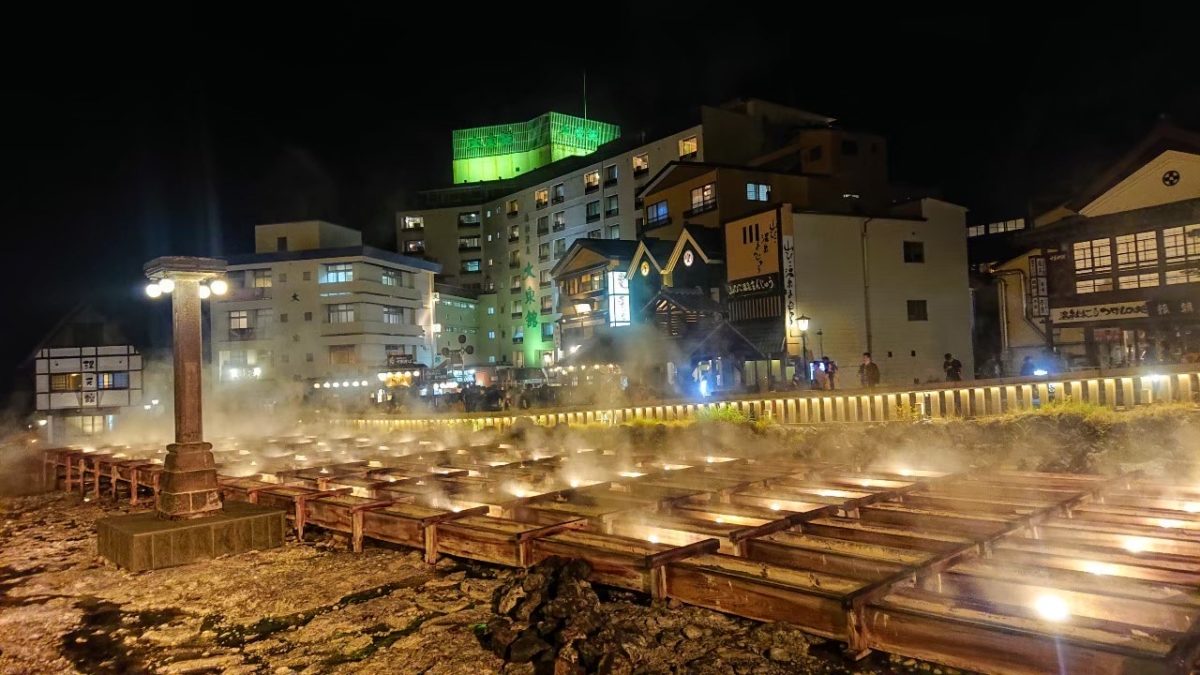
Kusatsu Onsen is famous as one of the three most famous hot springs in Japan, and it is said that “a soak in Kusatsu Onsen will cure all illnesses except for love.” Kusatsu Onsen has a hot spring called Yubatake, which is a symbol of Kusatsu Onsen because it serves to lower the temperature of the hot spring water by pouring it into a wooden tub. At night, it is lit up and attracts many visitors.
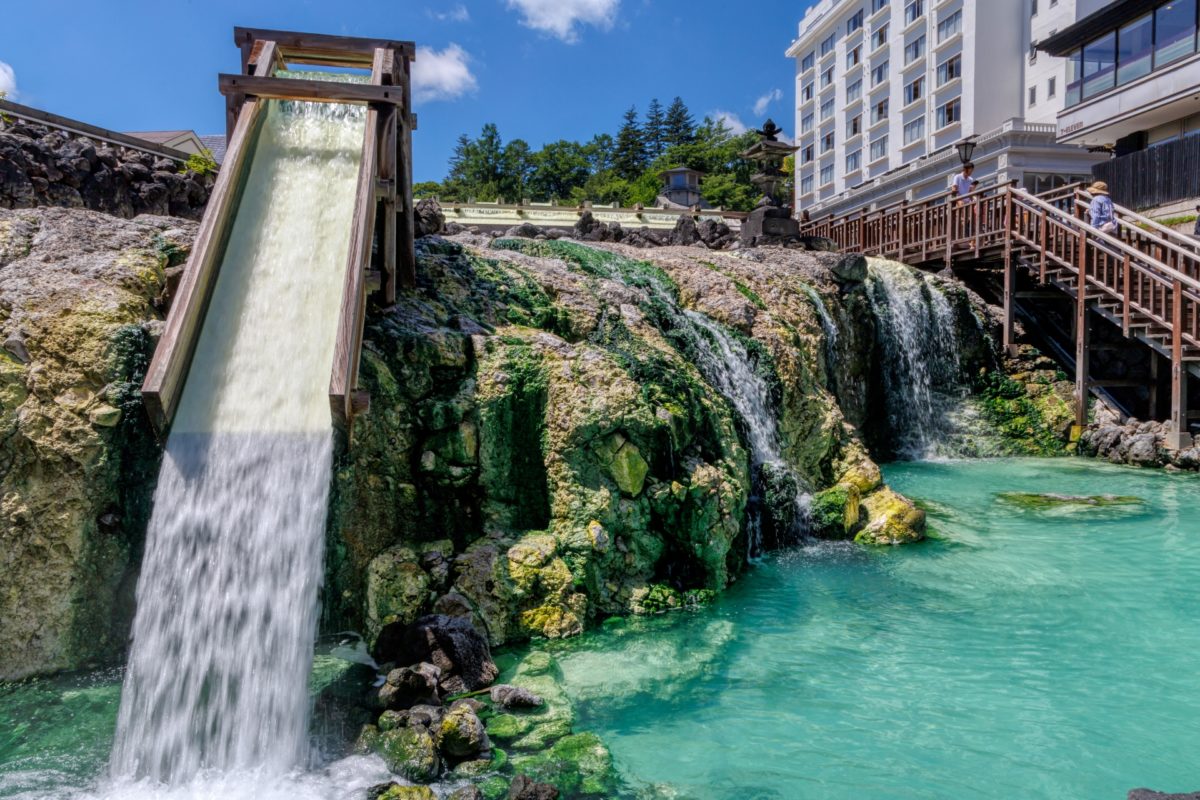
The traditional performance of “yumomi” has become a tourist attraction. The source of the hot spring water is as hot as 50 degrees Celsius, but if water is added to the hot spring water to cool its temperature, the beneficial effects of the hot spring water will be diminished.
“Yumomi” is a traditional method of stirring the hot spring water to cool it down to the proper bathing temperature. The hot spring water is then stirred to cool it down to the proper bathing temperature. This process also helps to soften the strong smell of sulfur. Many tourists gather to watch this spectacle.
There are free public bathhouses around Yubatake. I actually visited a free public bathhouse called “Shirohata-no-yu” near the hot spring fields. It was a small bathhouse that could accommodate about four people.
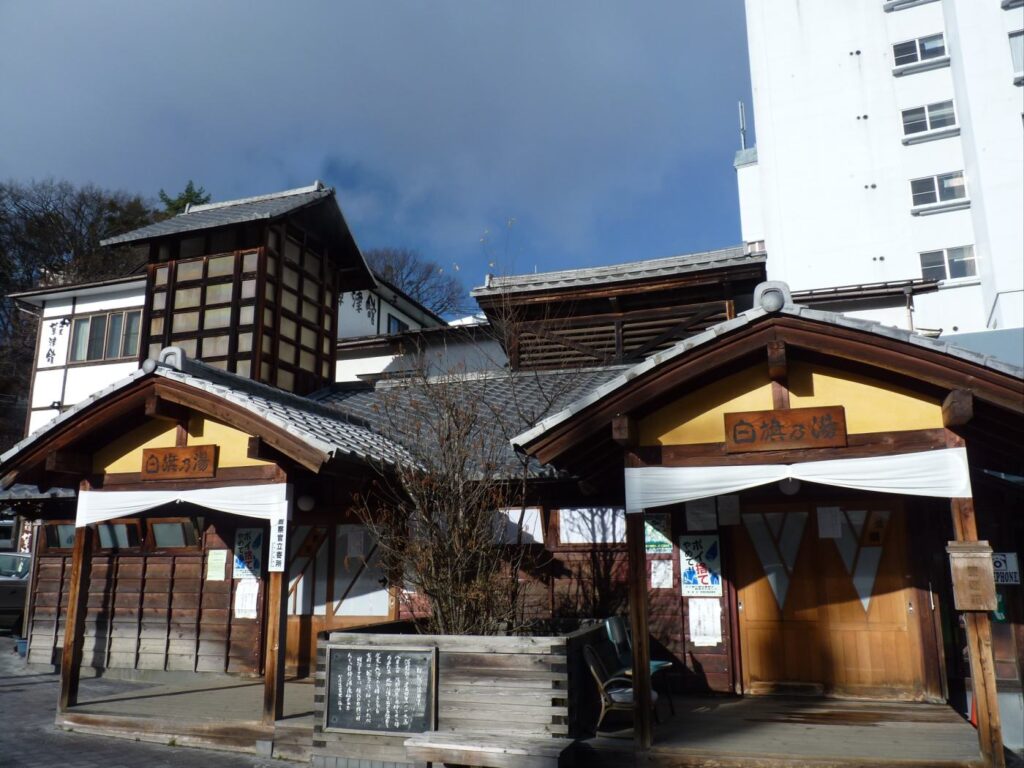
I was surprised by two things: First, there was no need for shampoo or soap. What this means is that Kusatsu Onsen is highly acidic and has the strongest sterilizing power. All you need to do is soak in it.
Second, the water is unusually hot. The temperature is a staggering 47 and 44 degrees Celsius. Be sure to take your time getting in. It takes some time for your body to get used to the hot water, but once you do, it is very pleasant. It is a rare experience for me, even as a Japanese, to bathe in such hot spring water, and I hope that everyone will experience it.
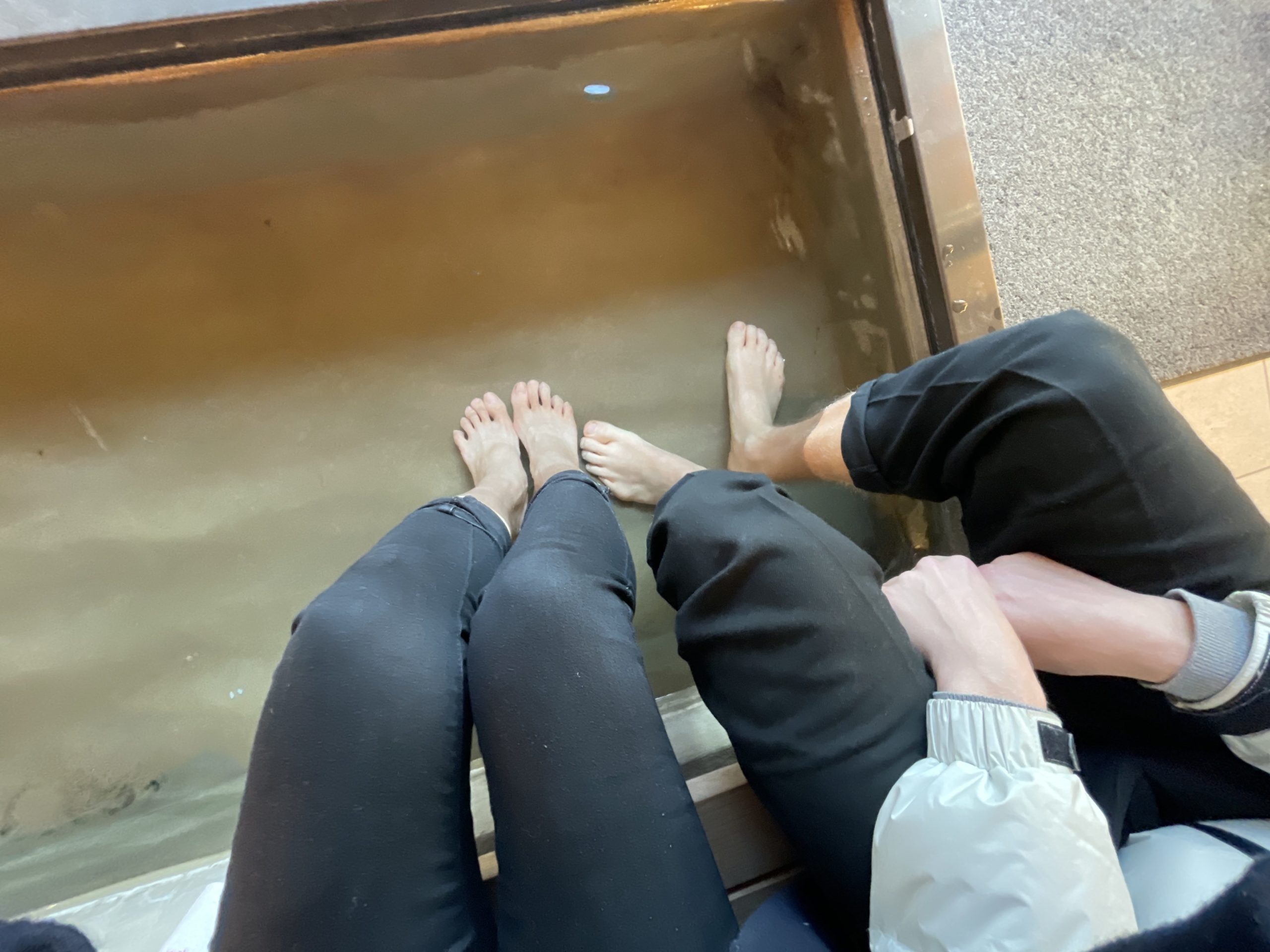
You can also experience a free footbath in the vicinity of Yubatake. Footbath is a health practice that is believed to improve blood circulation throughout the body, improve fatigue, and have a relaxation effect by warming the feet, which are the extremities of the body. A footbath is a great way to refresh your feet and relieve travel fatigue.
⚠️ You need to bring your own towel for most foot baths.
12. Jigokudani wild monkey park 🐒 (Nagano)

Jigokudani Yaen-koen is a nature park in Nagano Prefecture where you can see the lives of wild monkeys up close. The monkeys I see in my daily life are very cautious and run away immediately.
Since it was summer when I visited, the monkeys were only licking the hot spring water, but in winter, it is very lovely to see them bathing in the hot spring.

However, the monkeys here are not so wary and run around very close by. I saw baby monkeys clinging to their mothers’ bellies as they moved about, and I saw monkeys standing in a line up close as they all fleeced each other’s bodies.
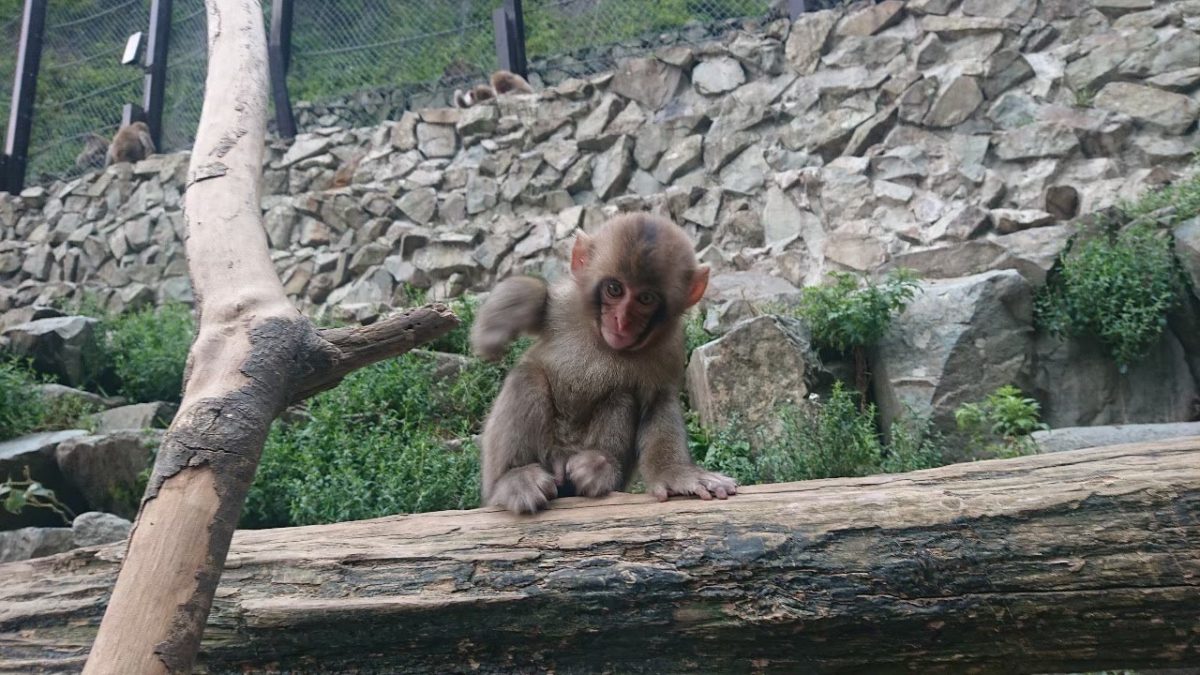
The road to get here is so narrow that only about one car can pass, and it is quite difficult when an oncoming car comes by, so we decided to go on foot.
There were two paths, one through a bamboo forest where no cars could pass, and the other through a mountain path with a very serene atmosphere that allowed us to enjoy the travel time.
13. Shirakawa-go 🏠 (Gifu)
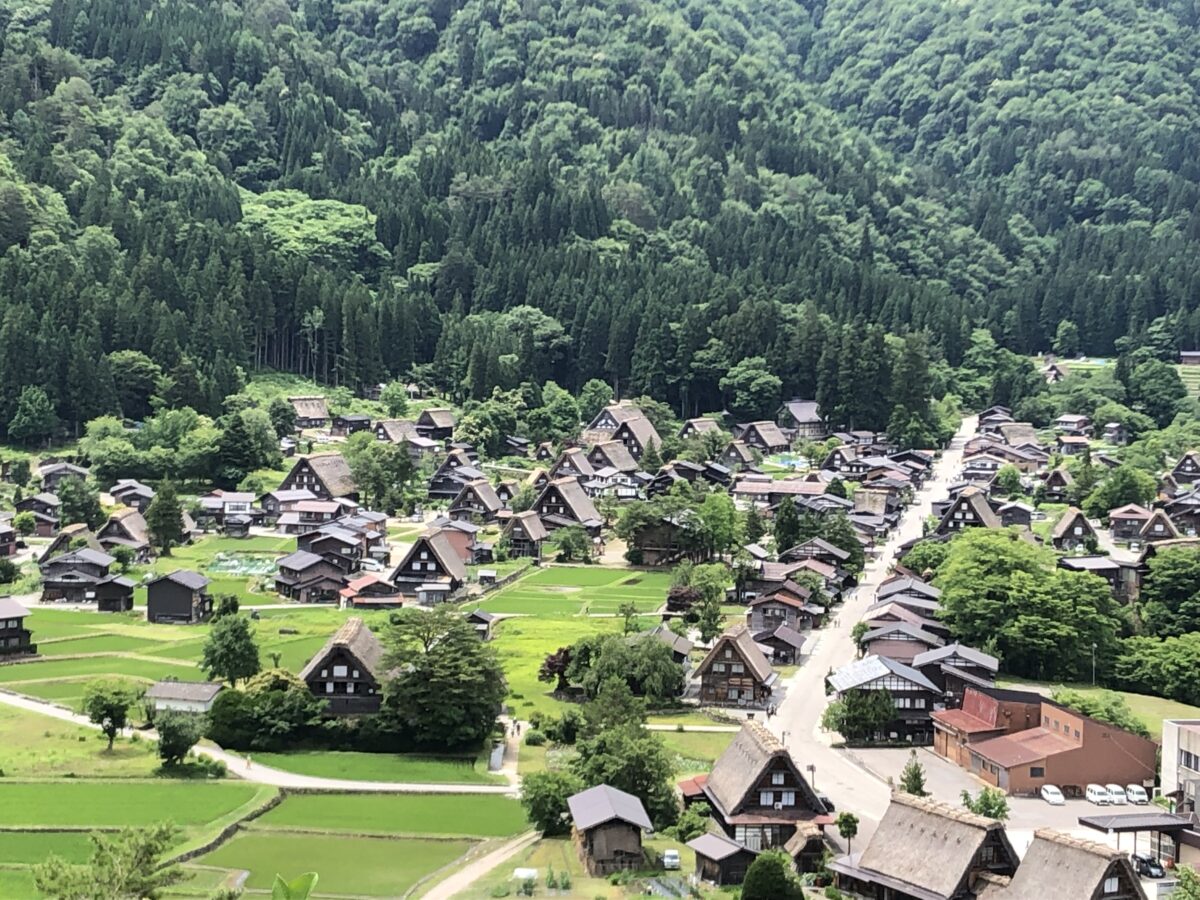
Shirakawa-go is a historic village in Gifu Prefecture that was registered as a World Heritage site in 1995. It is characterized by its unique gassho-zukuri houses, which offer an original Japanese landscape.
This architectural style was designed to withstand the harsh winter snows, and the sloping roofs are unique. Houses of this construction can be seen only in a limited number of areas in Japan, which is very rare, even for me as a Japanese person.
The scenery of each of the four seasons is attractive, and the snowy landscape in winter is regarded as a spectacular sight, especially in summer.

Some of these houses are open to the public and can be toured inside. Inside the houses, there are hearths, which serve as a source of heating as well as a place to gather around and enjoy a meal together. It is constructed with wooden posts and beams, and these take on a deep hue over time, creating a historic atmosphere.
If you just want to see the whole village, you can do it in an hour, but if you want to visit and enjoy a meal, you will need three hours.
With inns of this construction, you will surely experience more of the historical architecture and atmosphere.
14. Kanazawa, Kenrokuen Garden and Higashi-chaya machi🌳 (Ishikawa)
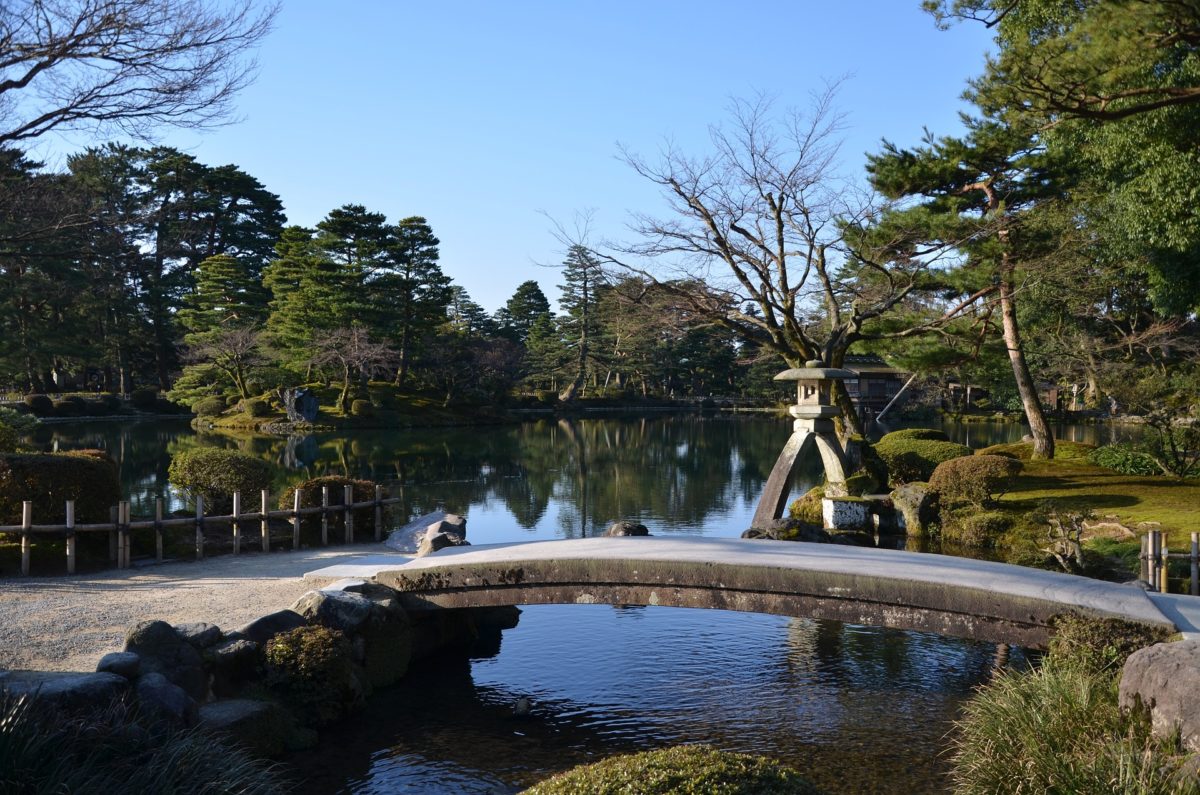
Kenrokuen Garden
Kenrokuen Garden is a historical Japanese garden, with large and small ponds, beautiful masonry, and tea houses arranged in the garden, providing a taste of good old Japan.
Taking a rest on a bench in the garden and admiring the scenery was so relaxing that the time passed so quickly. The illuminated garden has a different look from the daytime, so be sure to visit at night as well.
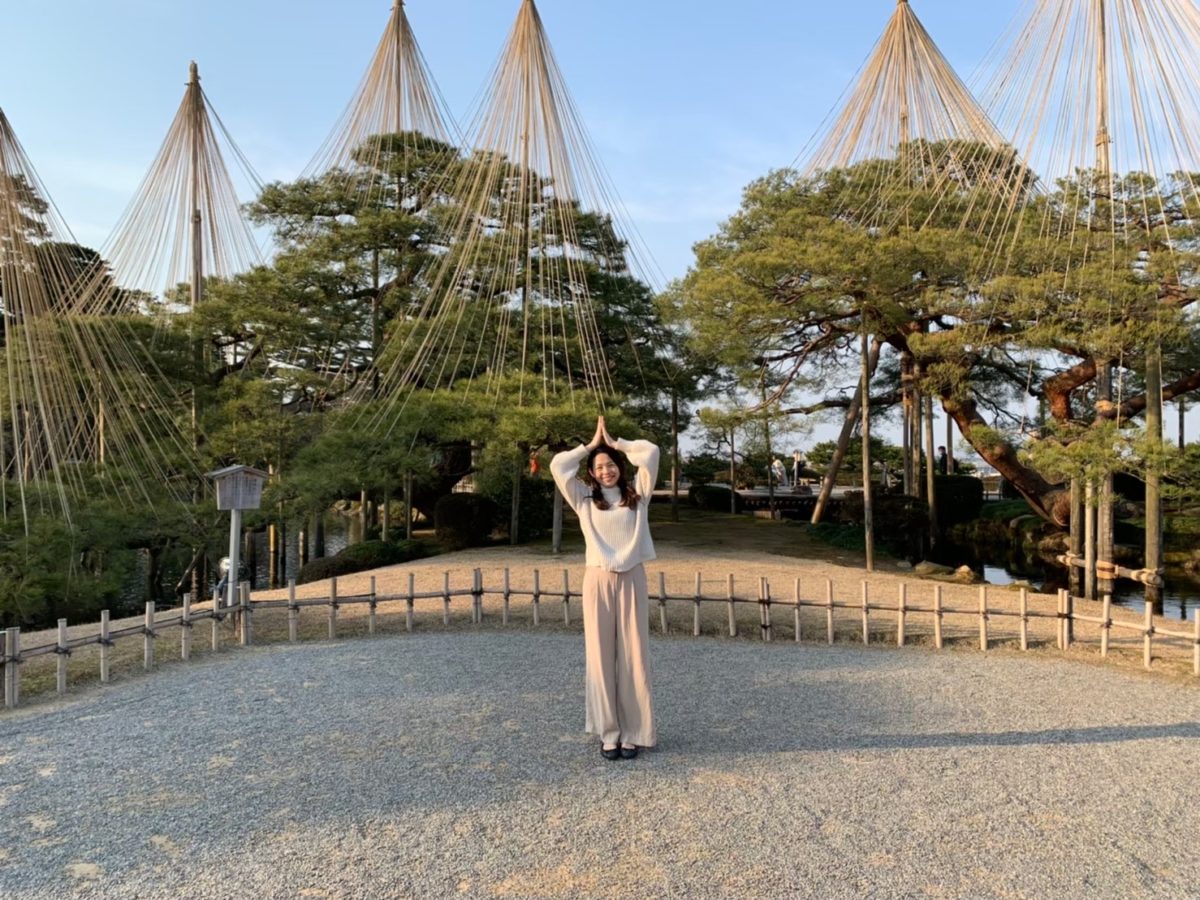
Especially during the snowy season, trees are protected by a traditional method called yuki-hanging. This technique is only practiced in areas of Japan where there is a lot of snow, and it is not seen everywhere.

Higashi-chaya machi
Nearby from Kenrokuen Garden, Higashi-chayamachi has a traditional historical landscape of cobblestone streets lined with unique wooden buildings. You will find yourself stopping to take pictures. You will experience as if you are traveling through time.
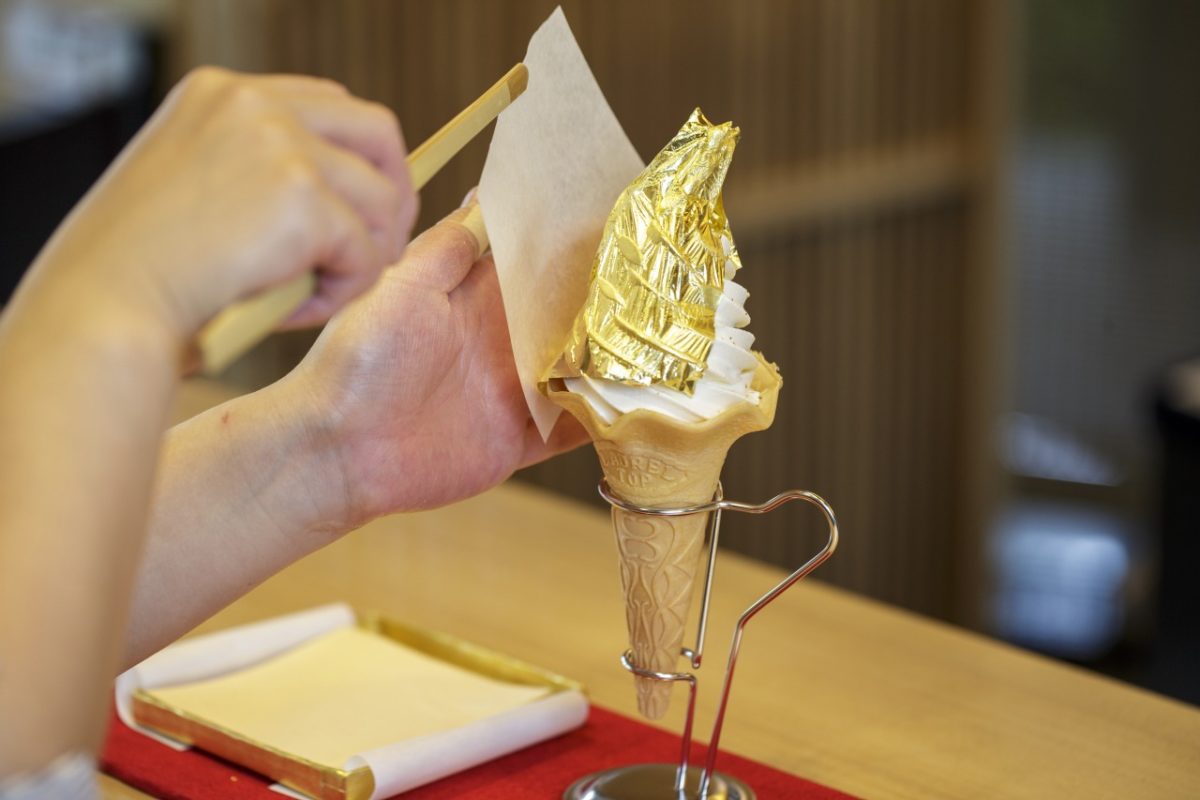
Kanazawa is famous for its gold leaf as a specialty, and sake and face packs containing gold leaf are famous as souvenirs.
You will often see people eating ice cream with a whole piece of gold leaf on it. Only in Kanazawa can you find such items sold with gold leaf, so be sure to get some items.
15. Fushimi Inari Shrine⛩️ (Kyoto)
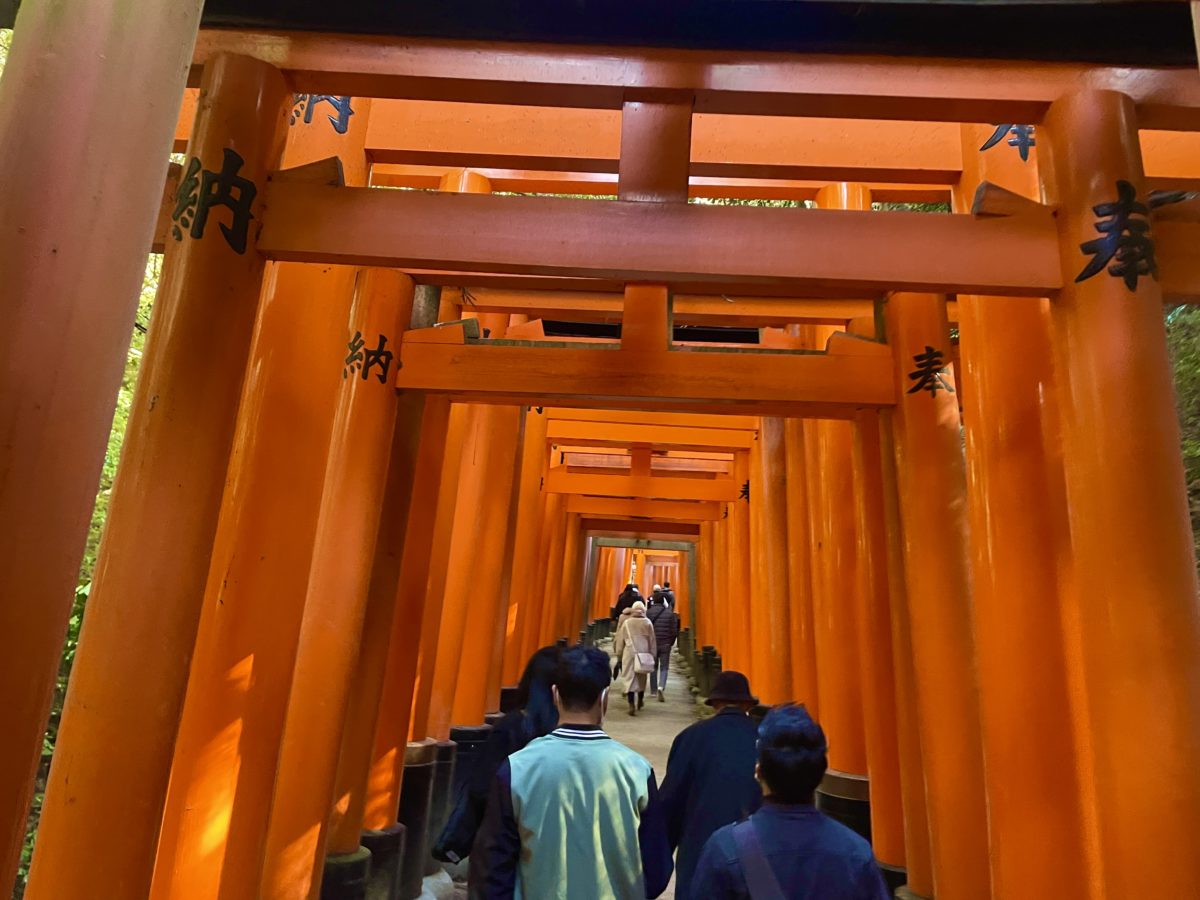
This is the number one spot in Kyoto for foreign tourists and a must-visit destination. Fushimi Inari Shrine is a famous place in Kyoto and is a shrine known as the god of prosperity and good harvest.
Its distinctive feature is the thousands of vermilion “Senbon-torii” gates that line the approach up the mountain, whose fantastic scenery attracts visitors.
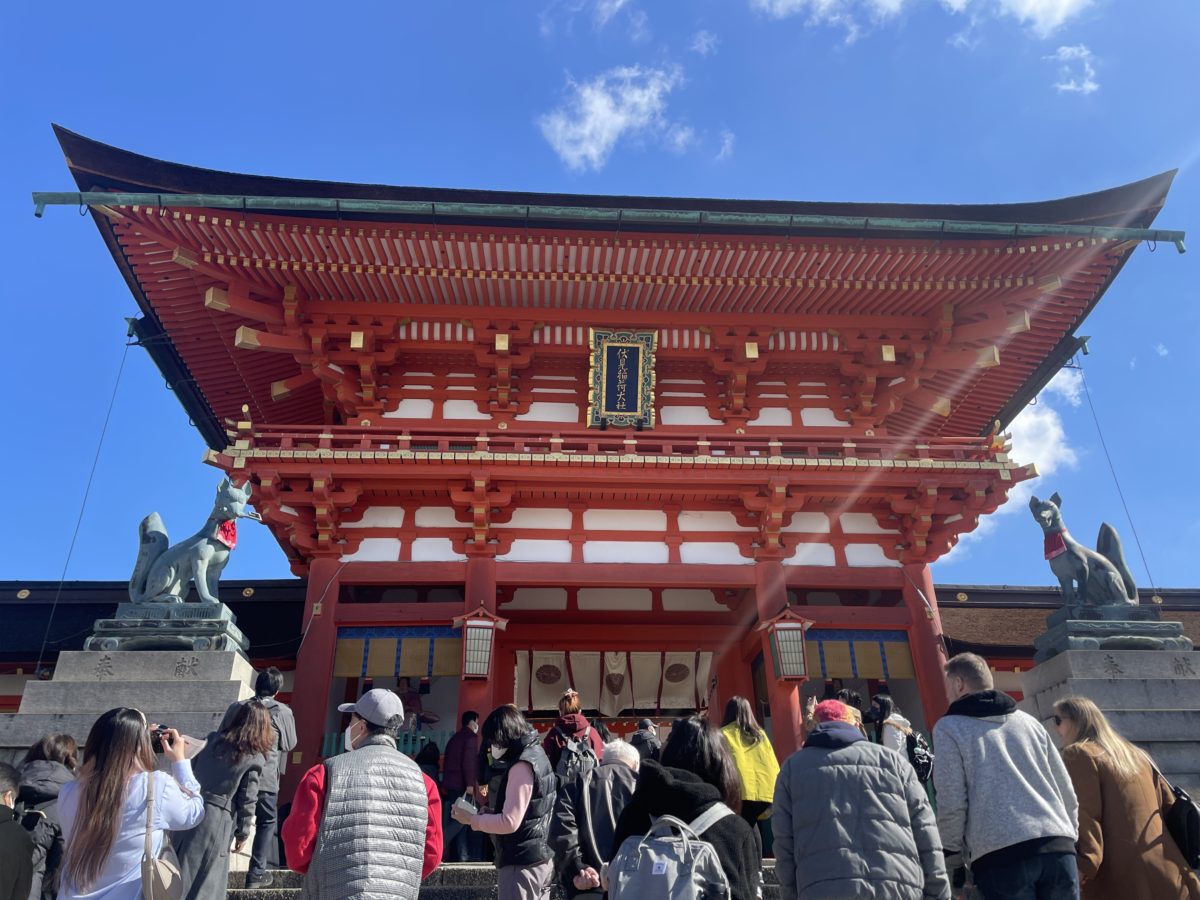
Red torii gates can be seen in many places in Japan, but as far as I know, only Fushimi Inari, Takayama Inari Shrine in Aomori Prefecture, and Motosumi Shrine, which will be introduced later on this page, have so many torii gates in a row, which is a rare sight even for Japanese people.
If you go there on a clear day, the red color of the Senbon-torii gateway reflects off the ground, making you feel as if you are walking through a tunnel of red. There are several observation decks from which you can look down on the city of Kyoto.
If you go to the Fushimi Inari Shrine during lunch time, it will be very crowded with people climbing up and down the torii, so I would recommend visiting early in the morning.
16. Bamboo Forest in Arashiyama 🎋 (Kyoto)
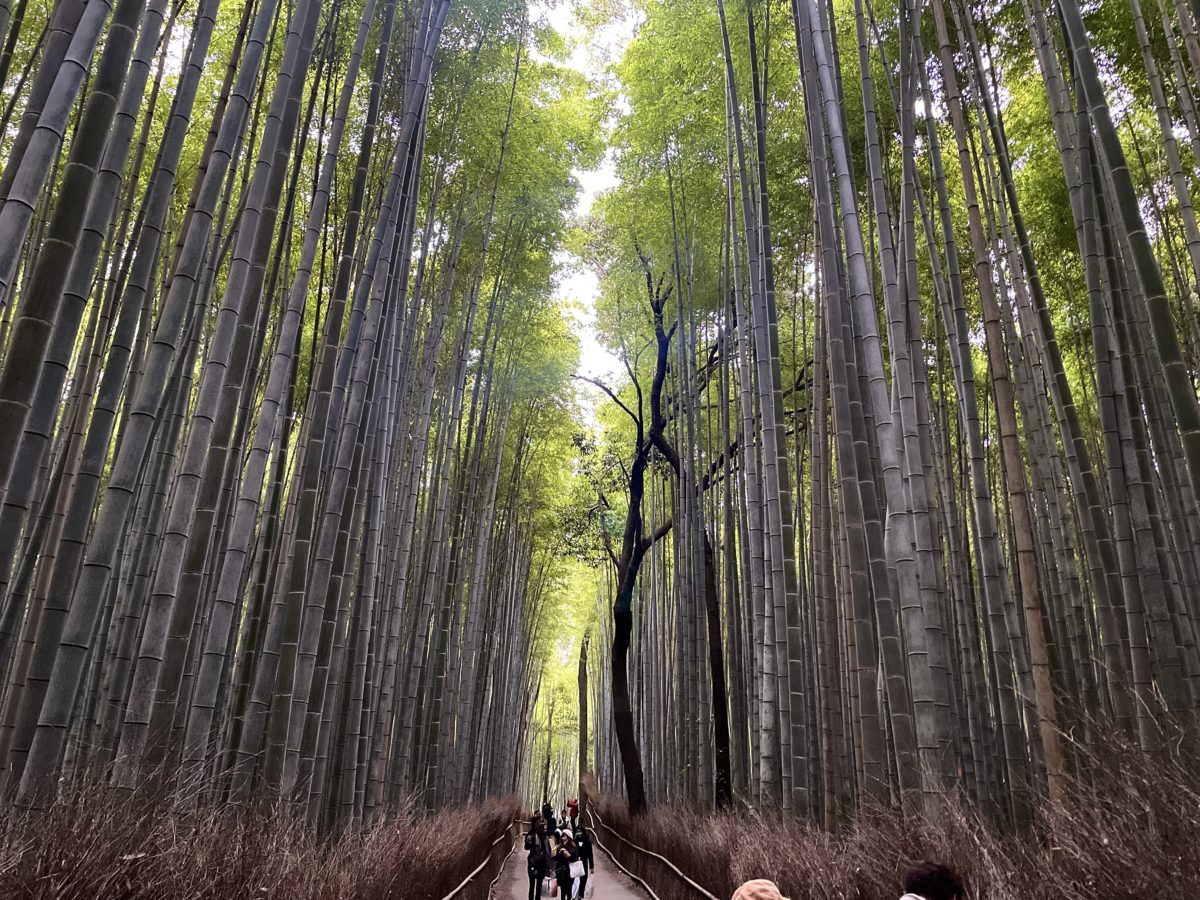
Bamboo Forest are a sight to behold, with towering bamboos surrounding both sides of the path in dense clusters. Walking along the paths, the sound of the bamboos swaying in the wind and the gaps where the light shines through them create a unique sense of tranquility and beauty.
The bamboo grove, which is very calming, has seasonal beauty, and is especially loved by many tourists for the fantastic atmosphere it creates when illuminated at night, which is held for a limited time in winter.

The autumn foliage of Arashiyama during the fall season is extremely popular as one of the most beautiful spots in Kyoto, and is very crowded.
The interior of the bamboo grove also stands out even more with its stately green bamboo in contrast to the background of the autumn leaves.
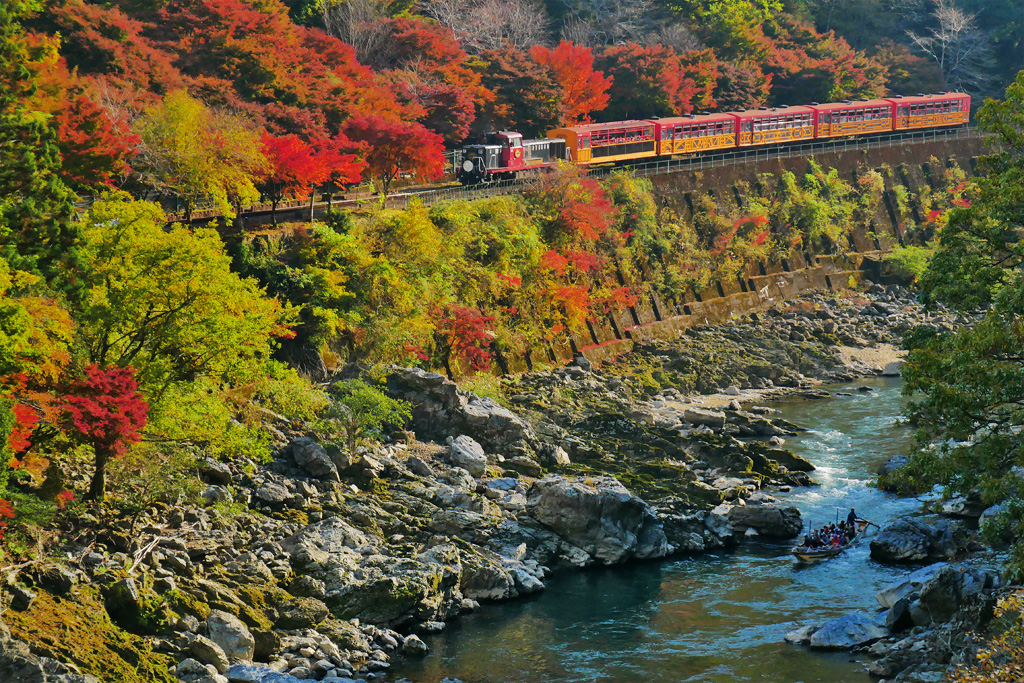
There is a sightseeing train called Sagano Trolley Train running from Arashiyama. The train runs 7.3 km from Saga Station to Kameoka Station, taking about 25 minutes, and offers views of the mountains and valleys along the line from the train windows.
You can fully enjoy the scenery in each of the four seasons. The autumn foliage season is especially popular, so early reservations are essential.
17. Kiyomizu Temple 🛕 (Kyoto)
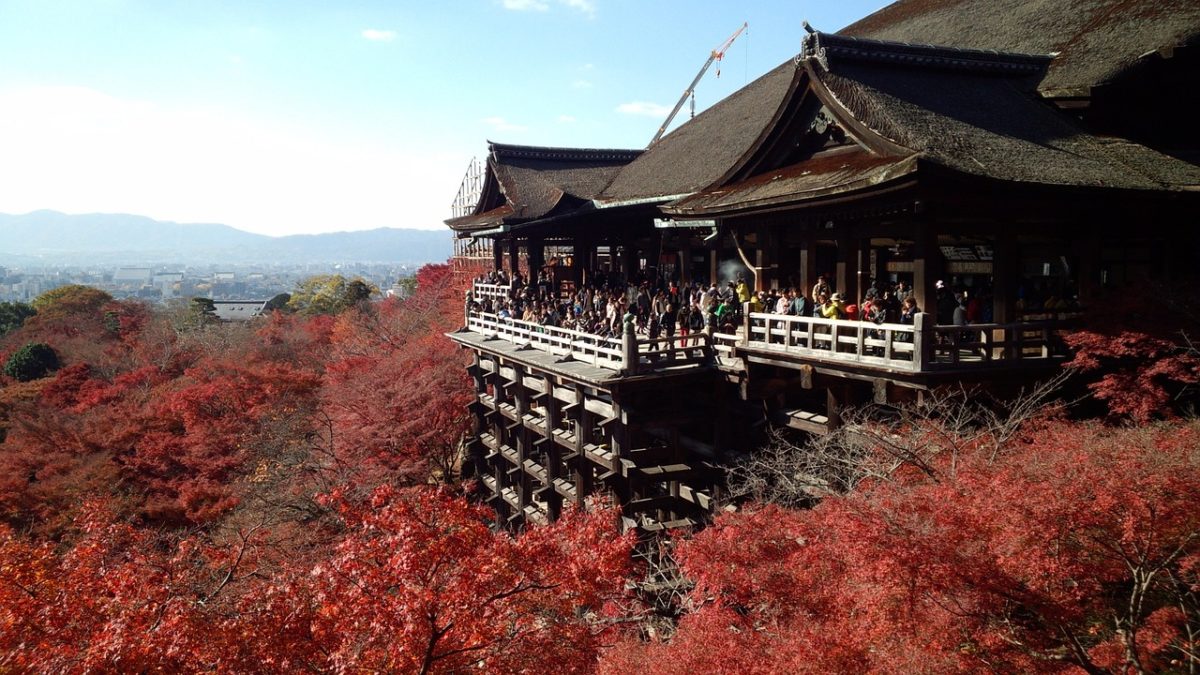
Kiyomizu Temple, with a history of over 1,200 years, is a World Heritage Site.” The large main hall, known as “Kiyomizu’s Stage,” is built on a cliff, and its unique architectural beauty and the view from the stage are overwhelming to visitors. Not a single nail was used in the construction of this stage, and the Japanese building techniques of the time are also impressive.
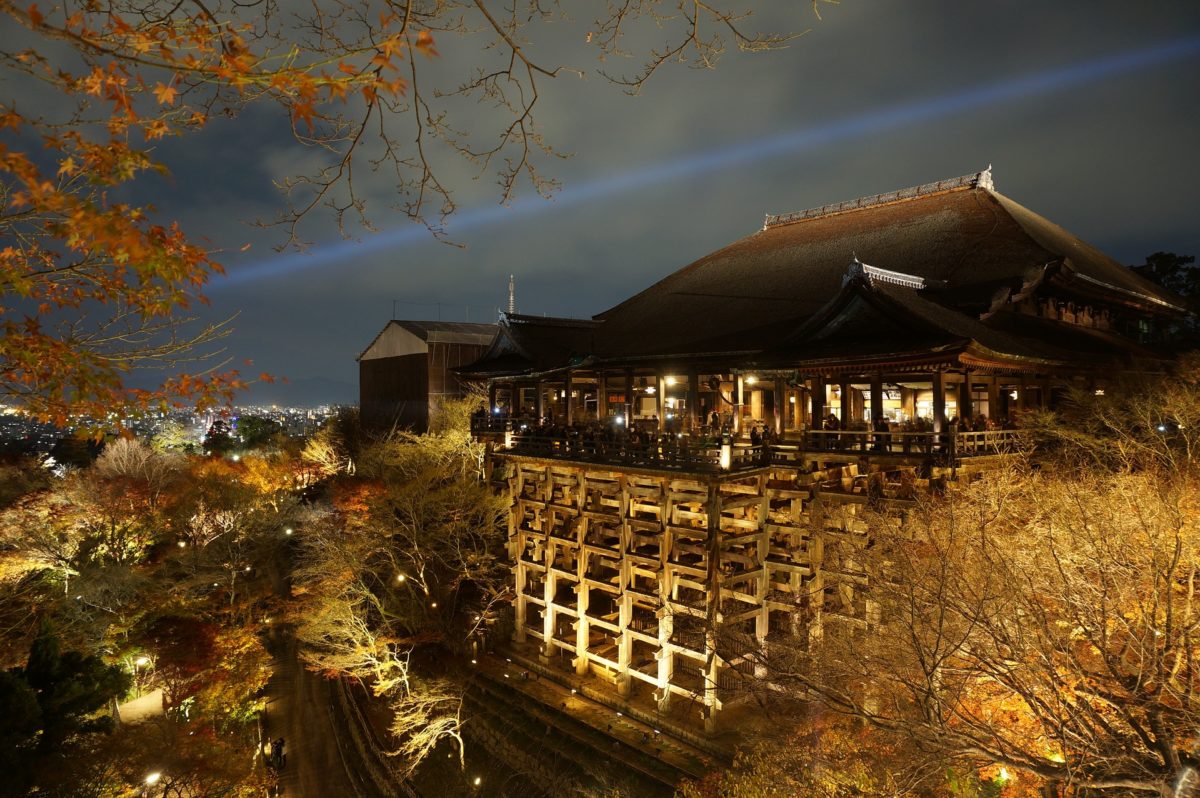
The view of the city of Kyoto seen through the stage and the cherry blossoms and autumn leaves are so well matched that one cannot help but admire them. At this time of year, the daytime view is of course wonderful, but both should be seen when the stage is lit up at night, as it has a different atmosphere!
In addition, the water that springs from the shrine grounds is special to those who wish for good health, love, and academic success, and people line up to drink this water.
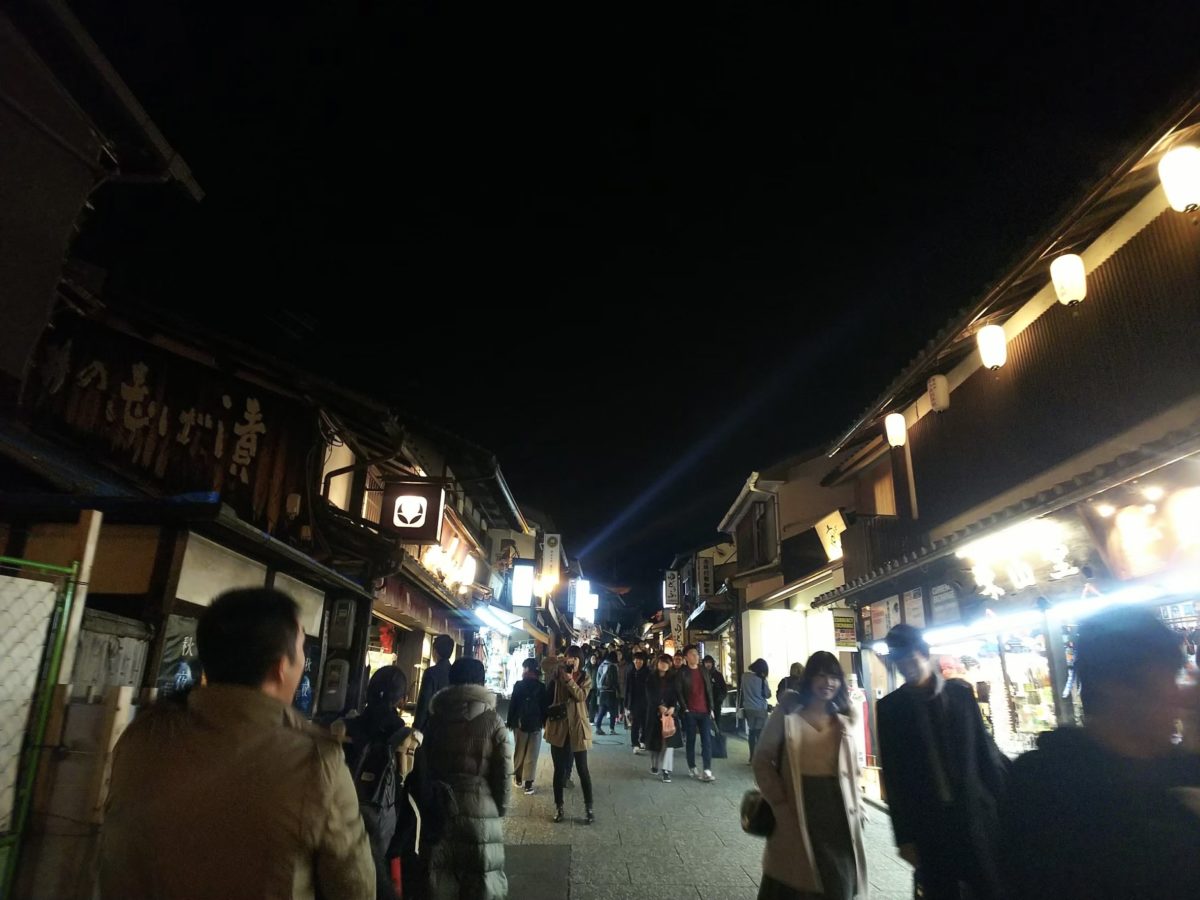
This is not the only attraction of Kiyomizu-Dera. Kiyomizu-zaka slope on the way to Kiyomizu-dera Temple is lined with stone pavement, old town houses, and traditional architecture, creating a timeless atmosphere just by walking along it.
Stores selling traditional crafts, Japanese souvenirs, traditional cuisine, and sweets are scattered throughout this area.
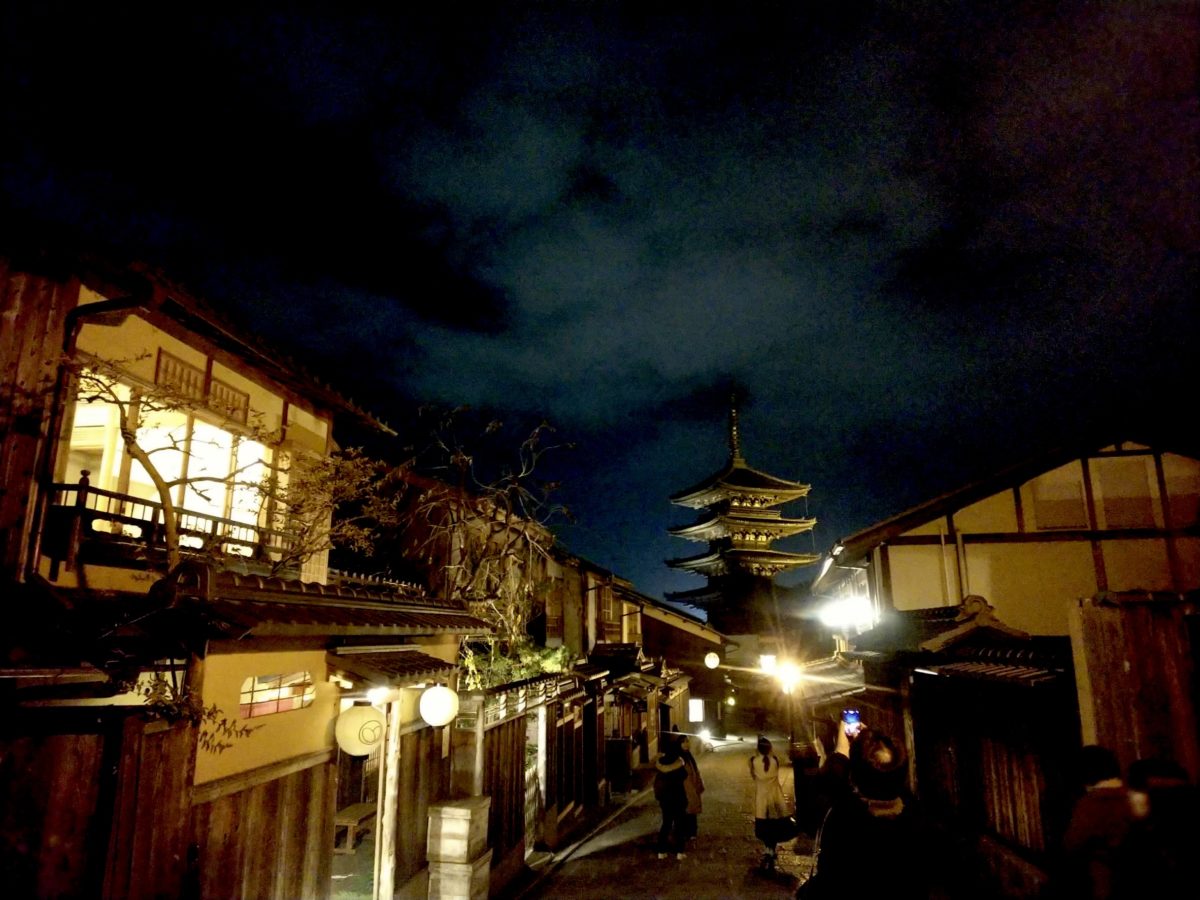
When returning from Kiyomizu-Dera Temple, it is recommended to take a quieter path down the hill, different from the main street, to experience a different atmosphere than on the way there.
The modestly illuminated paths and quietness lure you into the elegant atmosphere typical of Kyoto.
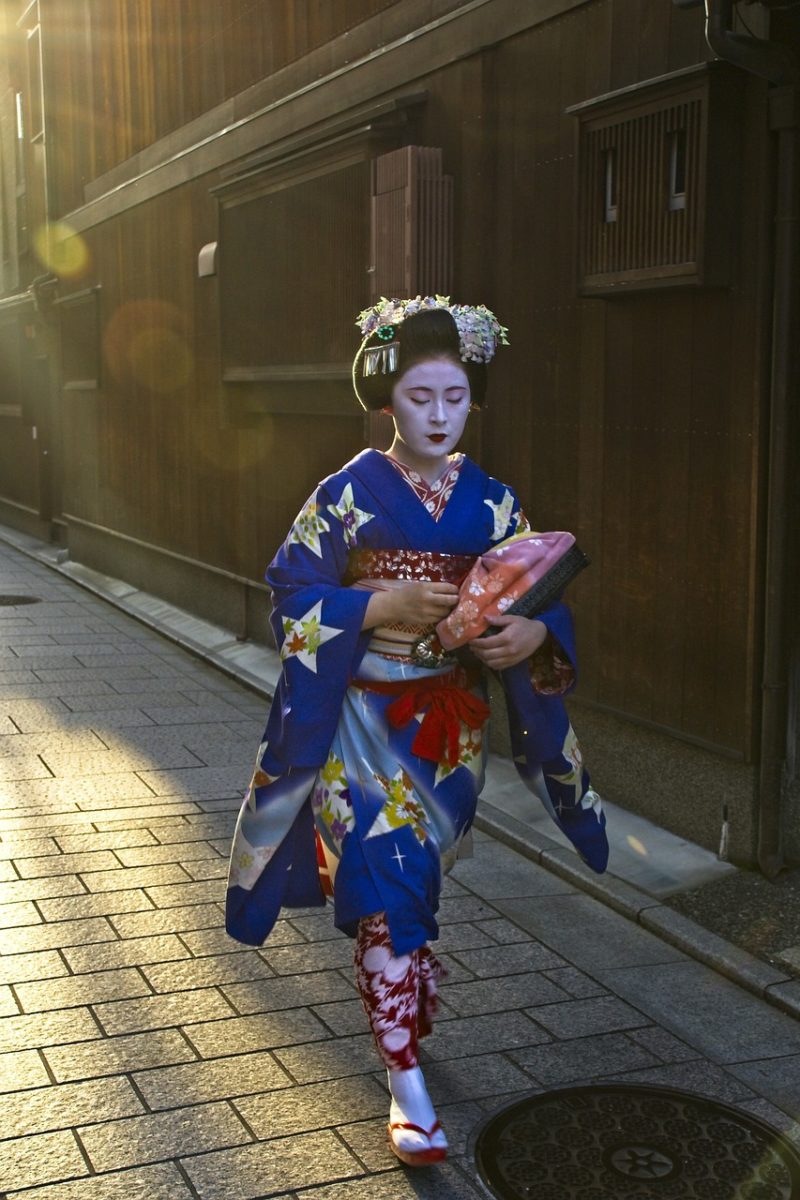
If you are lucky, you may also see maiko and geiko in this area in the evening or at night. If you want to be sure of seeing them, you should visit a place that offers dinner with a maiko in advance.
18. Kinkaku-ji 🛕 (Kyoto)

The word “kin” means gold. The second and third floors of Kinkakuji Temple are lavishly decorated with shining gold leaf, giving it an overwhelming presence.
The use of gold leaf is believed to have been influenced by the desire to recreate the Pure Land of Ultimate Bliss on earth, the intention to show the authority of Ashikaga Yoshimitsu, the shogun of the time, and the active exchange with China.
The reflections of sunlight and ponds add to its beauty, and this kind of gold leaf decoration cannot be found anywhere else. The Japanese garden creates a spectacular view through the perfect harmony of the pond, masonry, and plantings.
19. Dotonbori 🏃♂️(Osaka)
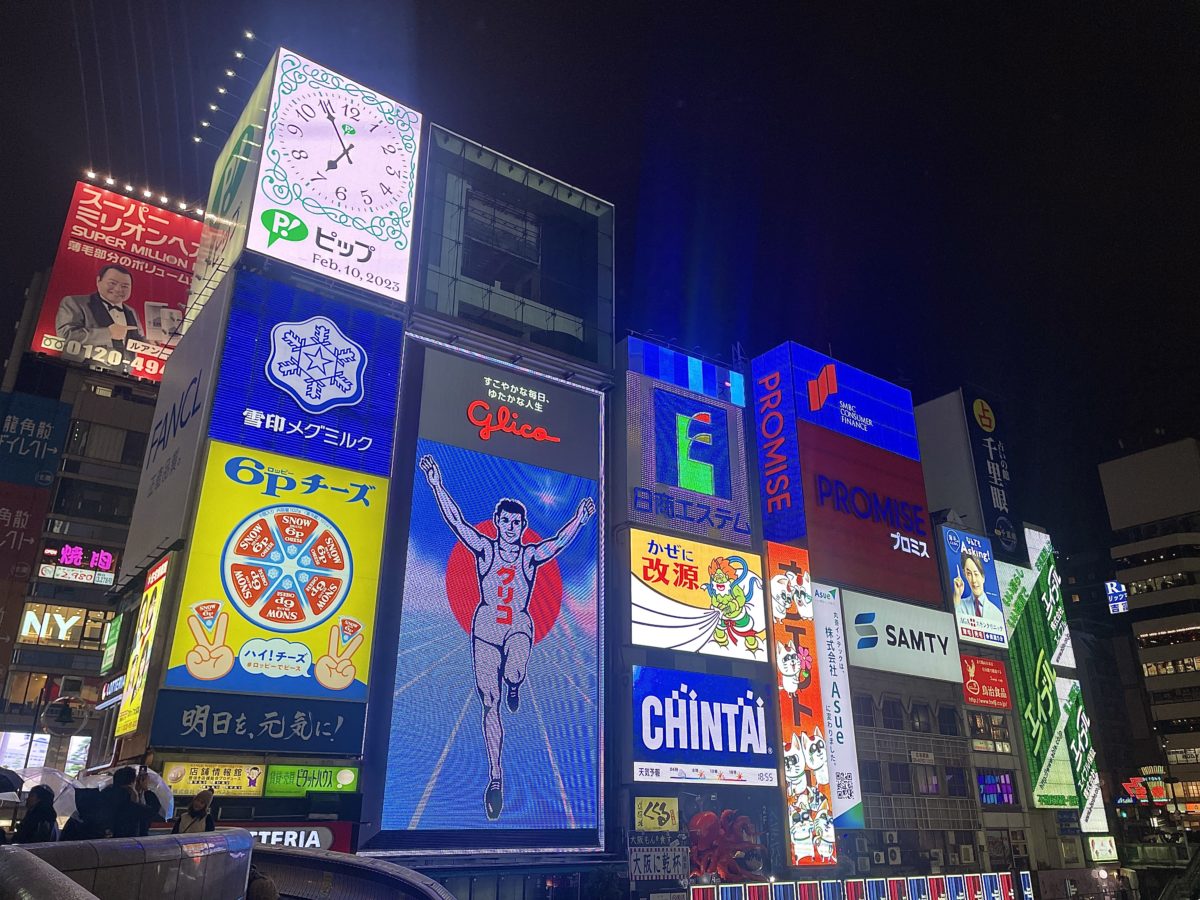
Dotonbori attracts many people as the center of Osaka’s food culture and entertainment.
Here, taking pictures with neon signs such as the one depicting the running man (this is actually an always running ad of Glico, a food/snack company) and enjoying Osaka’s gourmet food are a must.
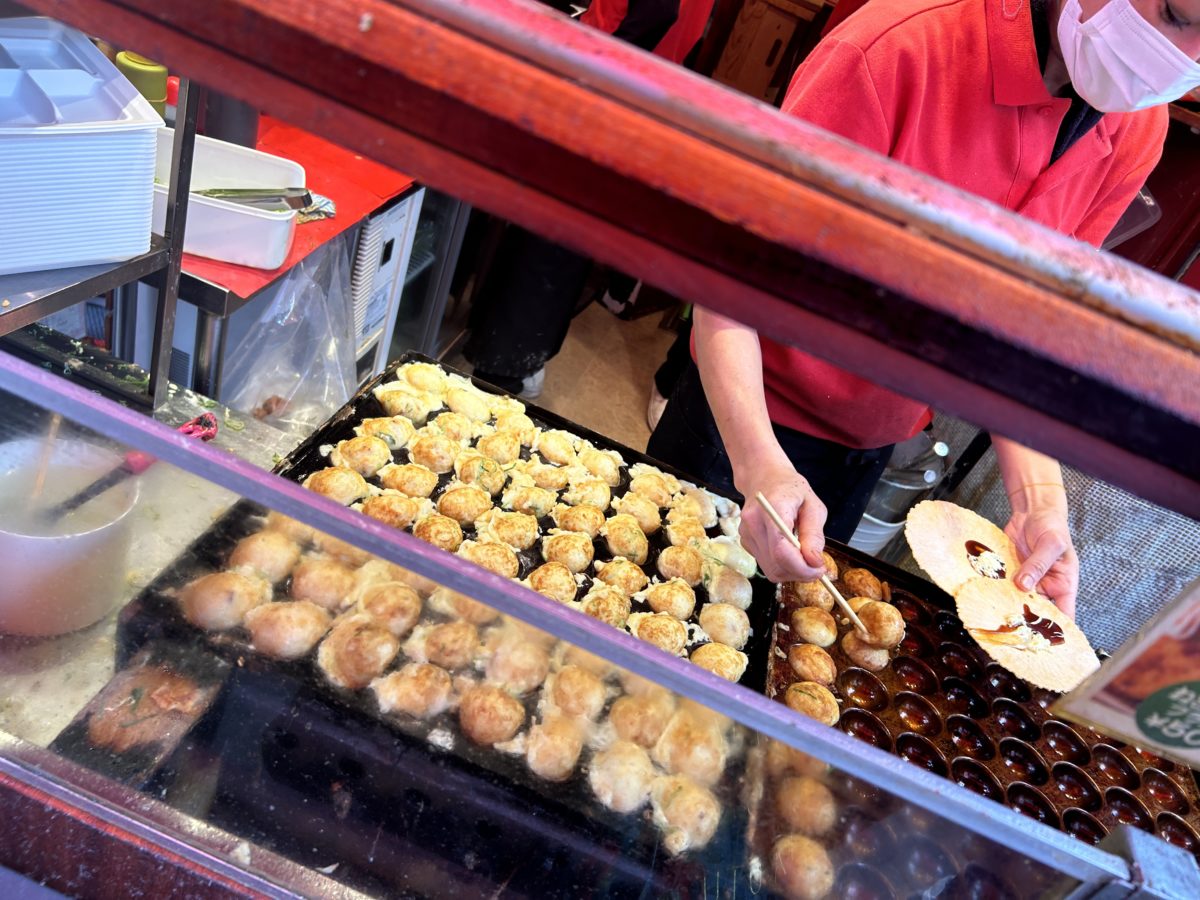
Along the river that runs through the center and around Dotonbori, various restaurants line the streets, where you can enjoy Osaka specialties such as takoyaki, kushikatsu (skewered pork cutlets), and okonomiyaki.
I recommend the best restaurants for each Osaka gourmet on this page. Please take a look at them for reference.
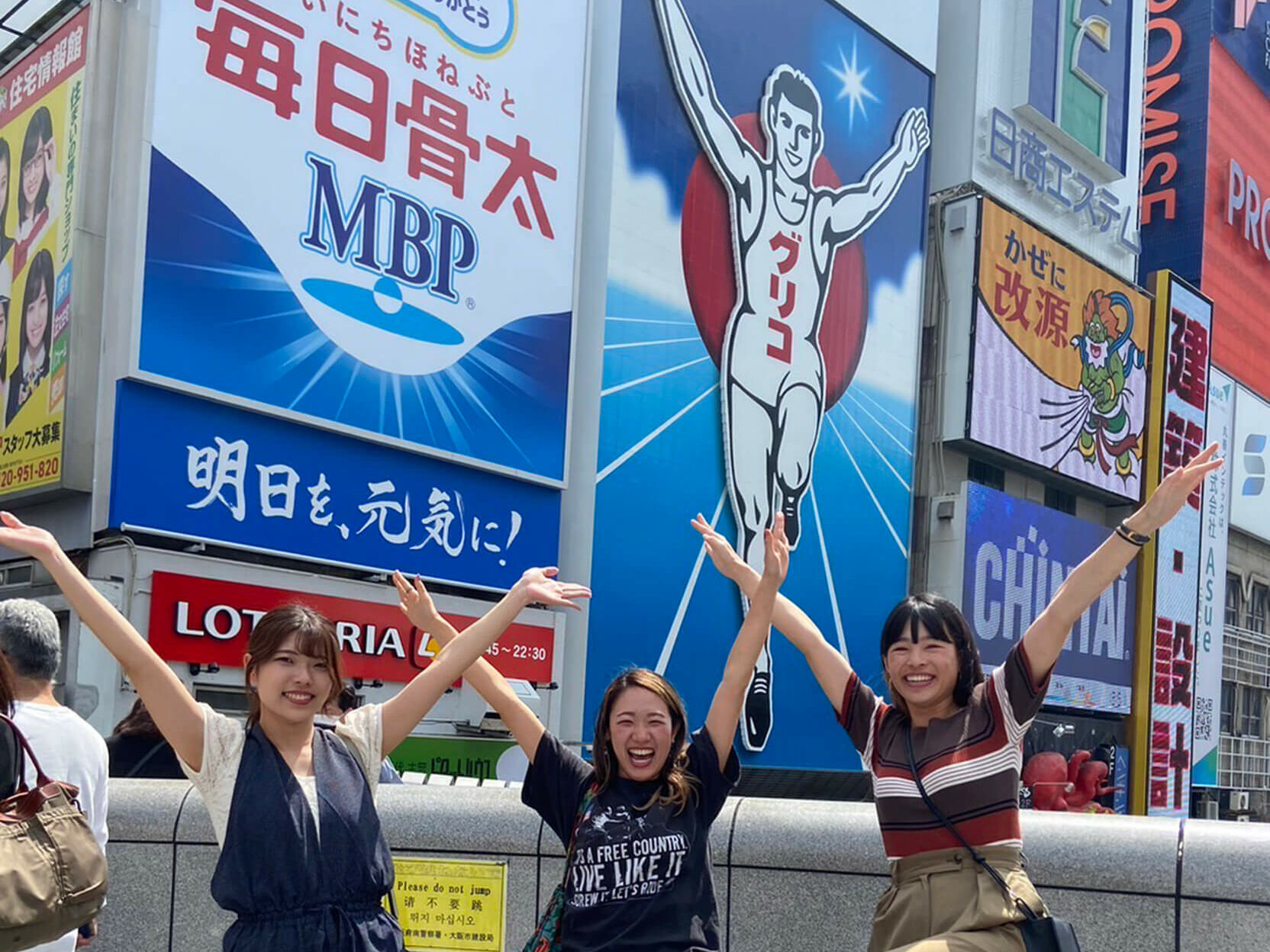
There is a large shopping street in the immediate vicinity, where you can also enjoy shopping.
There are also many nightclubs and bars in the vicinity, making it a popular area that is lively even at night.
20. Todaiji Temple 🛕 (Nara)
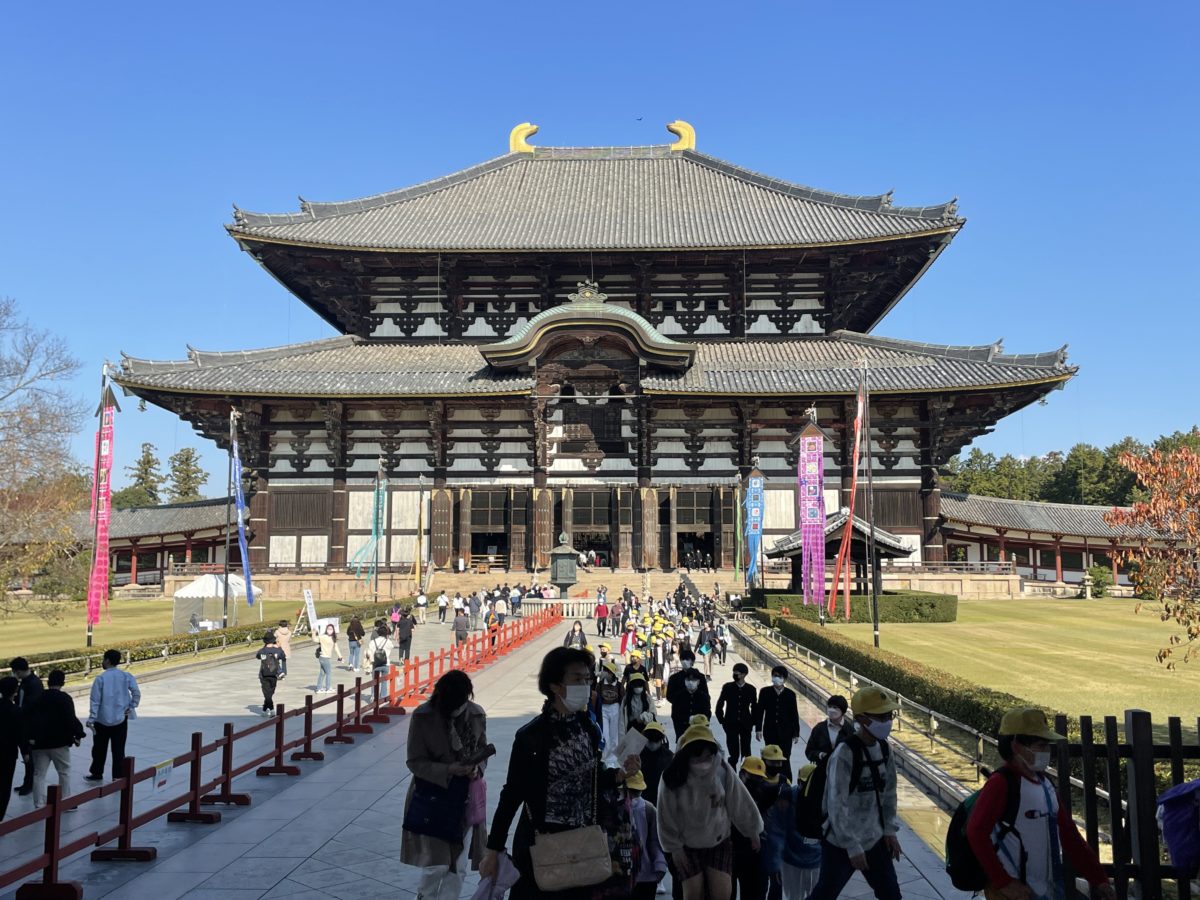
The presence of one of the world’s largest bronze statues of Buddha, measuring approximately 18 meters in height, deeply impresses visitors. The Daibutsuden (Great Buddha Hall), where the statue is enshrined, is the largest wooden structure in the world, and its size will surprise you.
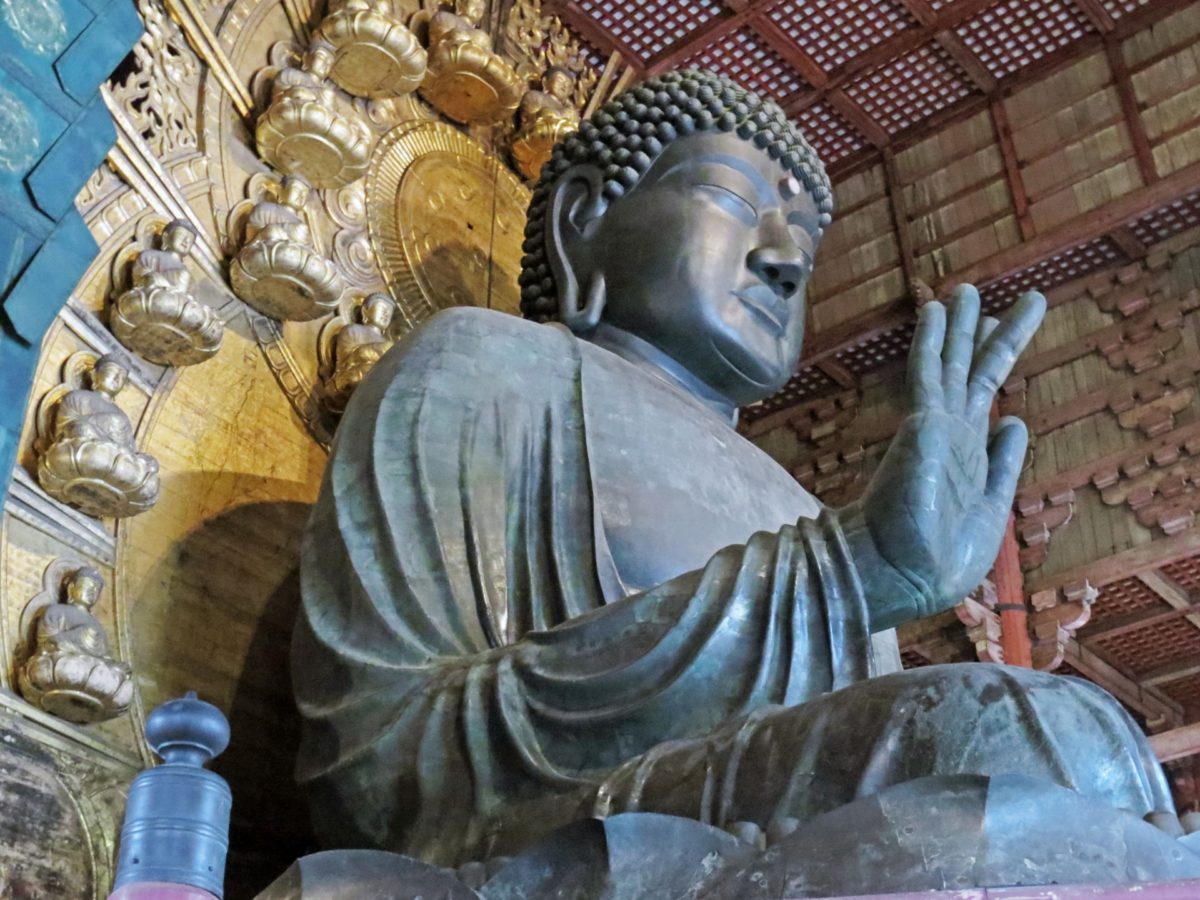
Inside the Daibutsuden, there is a challenge you must try. The challenge is to see if you can get your body through a hole in a pillar the same size as the nostrils of the Great Buddha. Although the Buddha is very large, his nostrils are not so big, so I gave up, but many children were lining up to try. It is said that there is a tradition to pray for health and safety by diving through this hole.
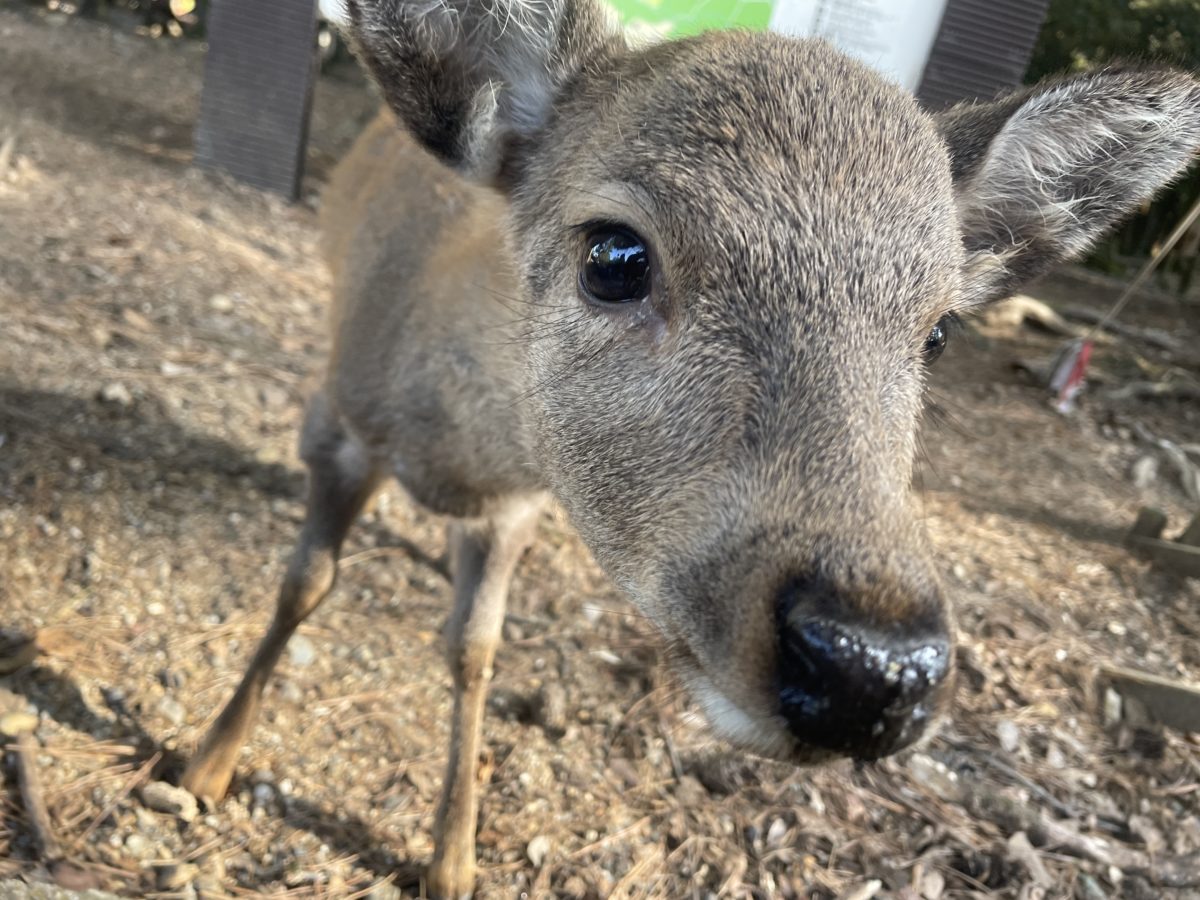
Another thing that visitors must do at Todaiji Temple is to feed the deer that abound on the temple grounds.
As soon as you buy one and start walking, the deer will come rushing in and you will be surrounded by them in no time at all.
I was once surrounded by about 20 deer and was stuck in the middle, attracting the attention of the tourists around me.
Sometimes they fight among themselves and sometimes they attack us. It is a bit frightening, but it is not something that will cause injury, and it is quite a valuable experience.
You will surely witness children screaming and running away from being chased by deer.
21. Himeji Castle 🏯 (Hyogo)
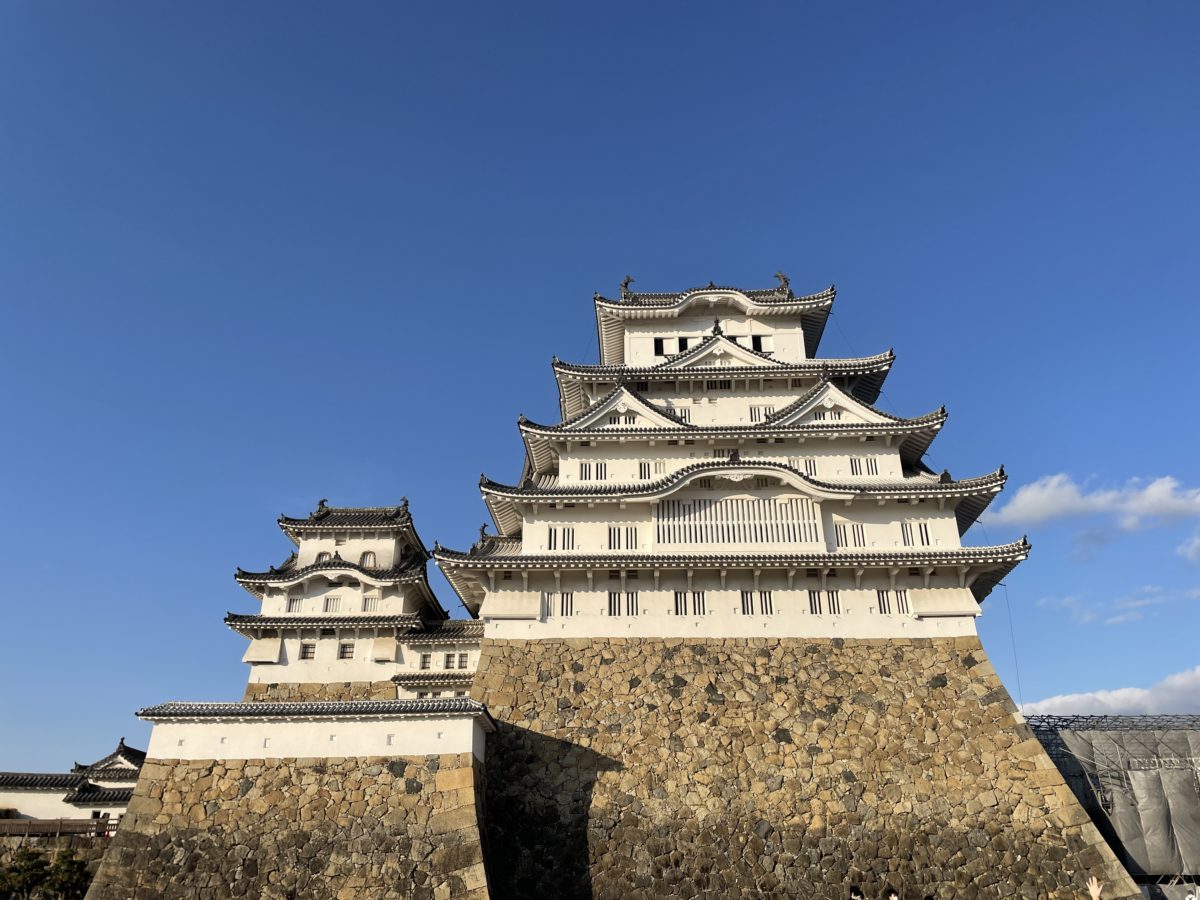
Himeji Castle, listed on the World Heritage List, is called “Shirasagi-jo” (White Egret Castle) because of its white exterior. 2015 saw the completion of renovation work, and the castle has a very beautiful and unique appearance.
The collaboration of cherry blossoms and Himeji Castle is also beautiful.
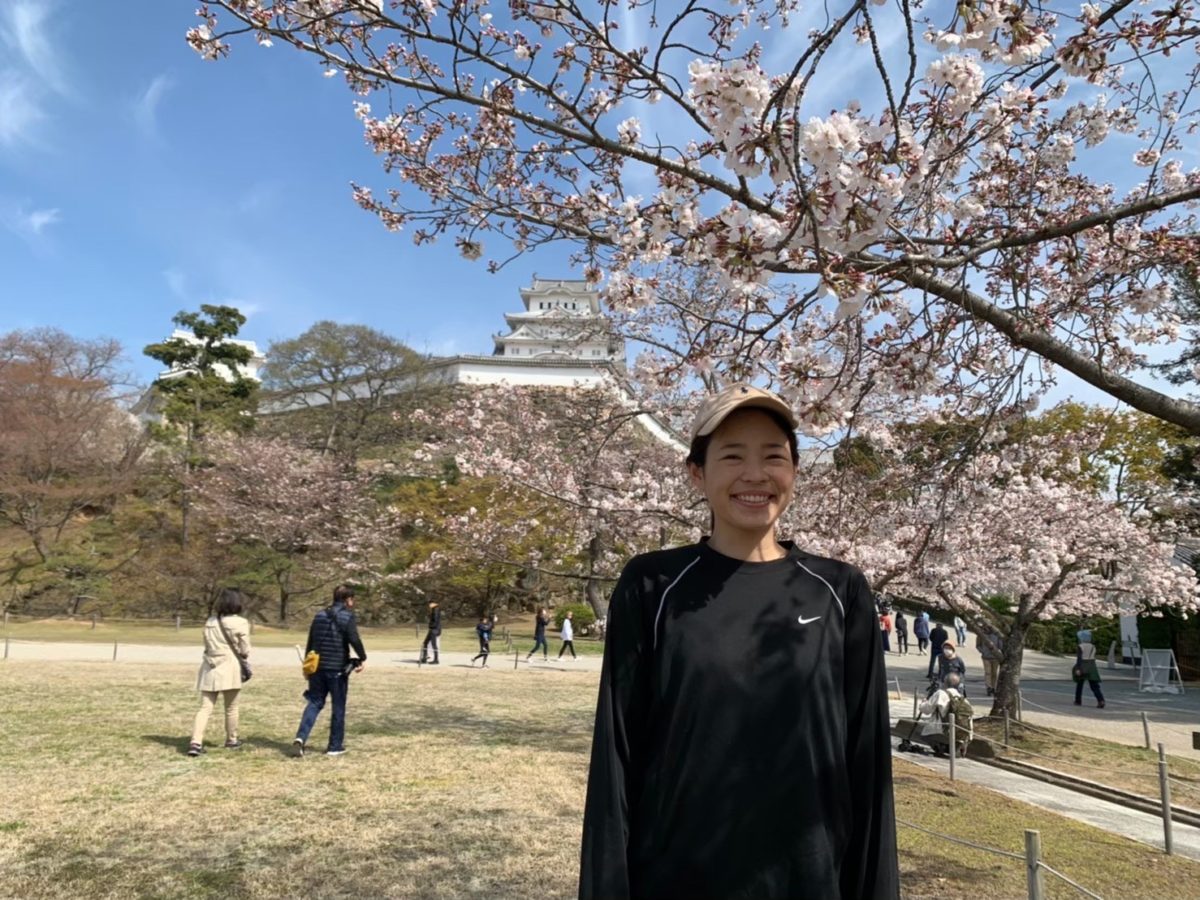
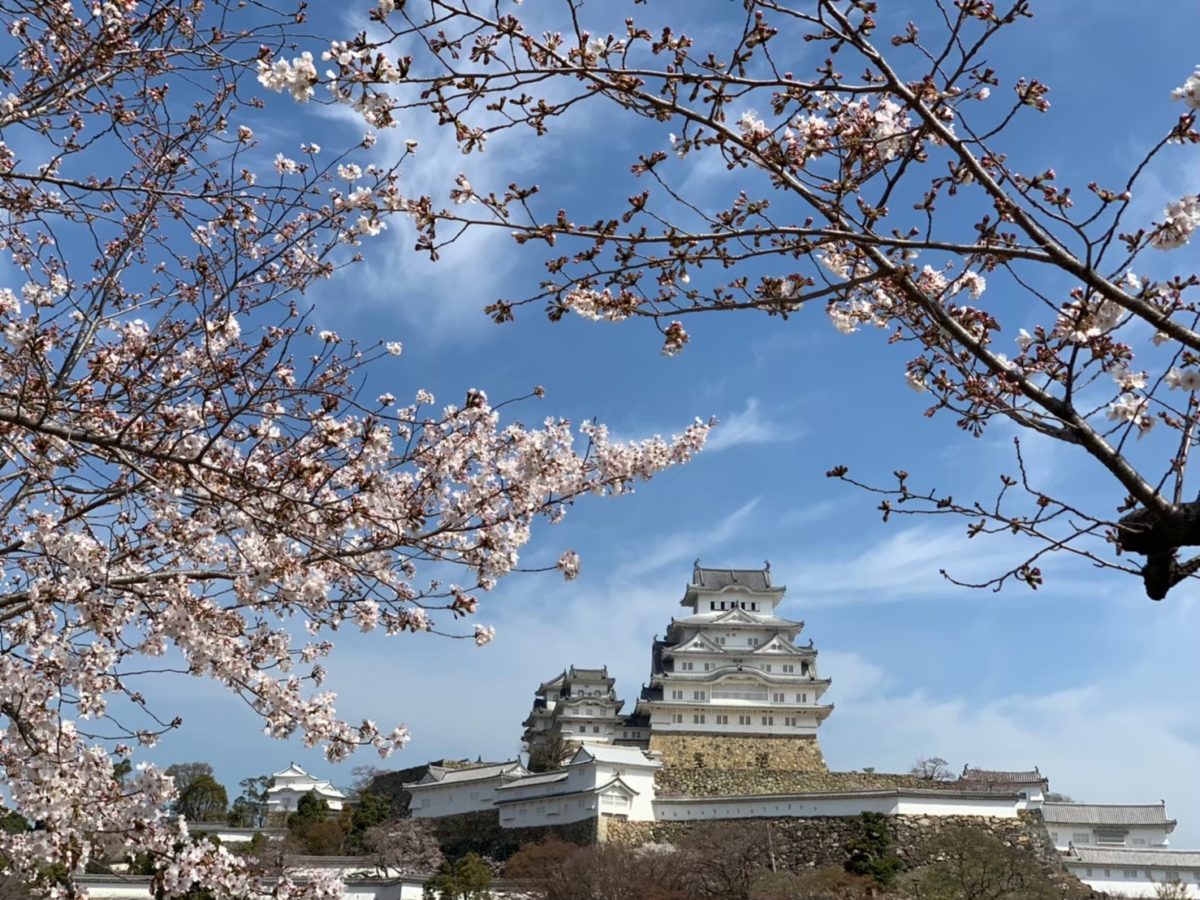
Inside Himeji Castle, there are numerous exhibits that help visitors gain a deeper understanding of the background of the period. They explain the battles, construction techniques, and the defensive functions of the castle, and although it would take about three hours to go through them all, they are the most interesting castle exhibits I have ever seen.

22. Atomic Bomb Dome and Hiroshima Peace Memorial Museum 🕊️ (Hiroshima)
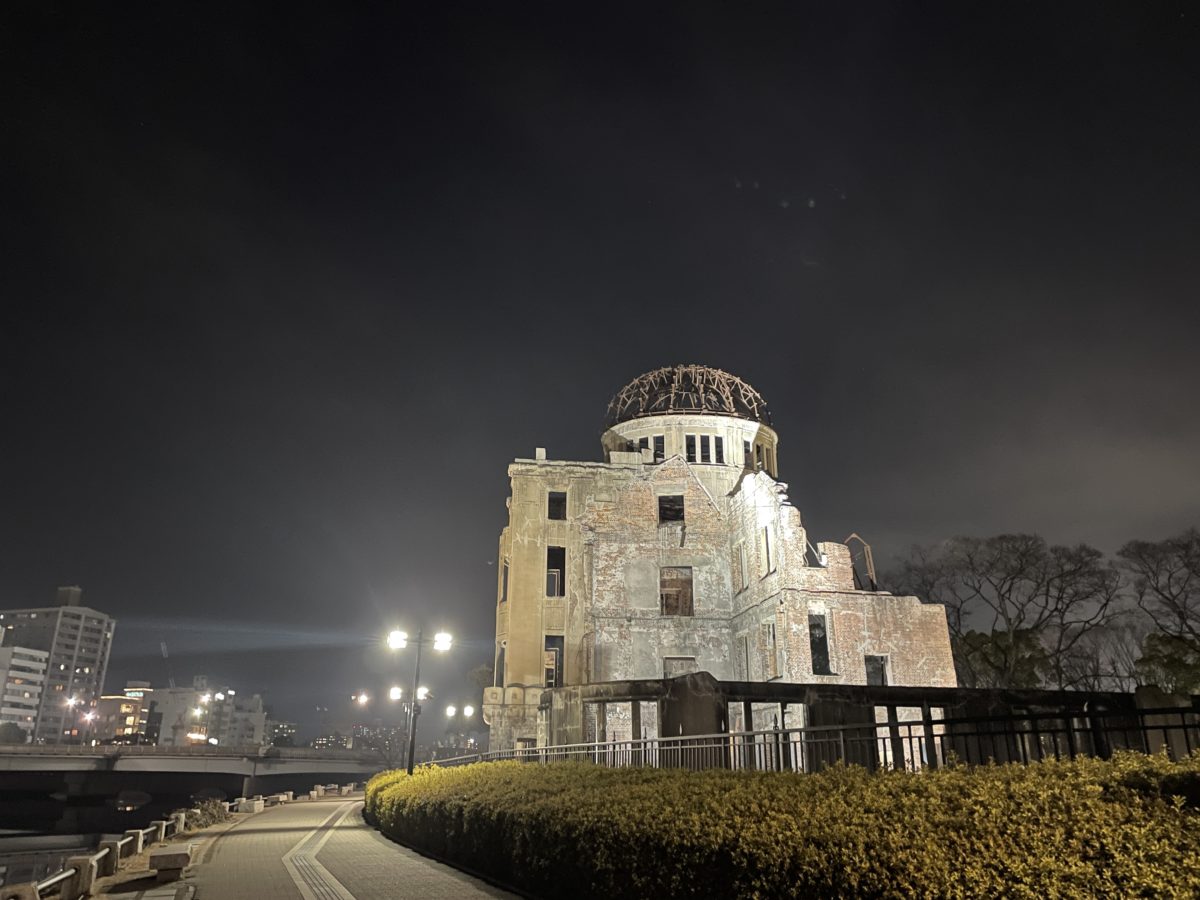
The A-bomb Dome was hit by a blast and heat rays from the atomic bomb in 1945, but miraculously only the skeleton of the dome survived.
It was decided to preserve it through the efforts of peace-loving people in order to convey to future generations the horrors of war and the horror of nuclear weapons.
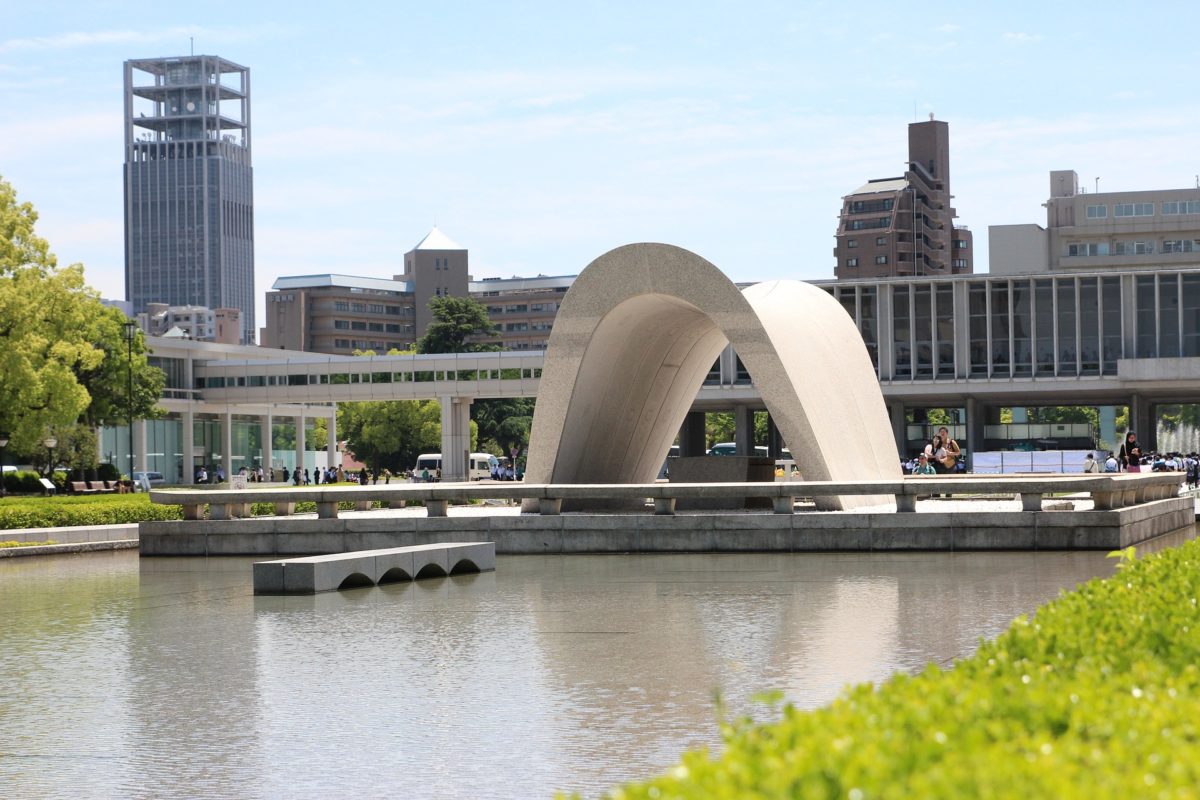
Nearby is the Atomic Bomb Museum. Here, visitors can see a great many exhibits, including the belongings and artifacts of A-bomb survivors, memoirs and audio guides showing what it was like at the time, the effects of radiation exposure, and the process of reconstruction after the bombing.
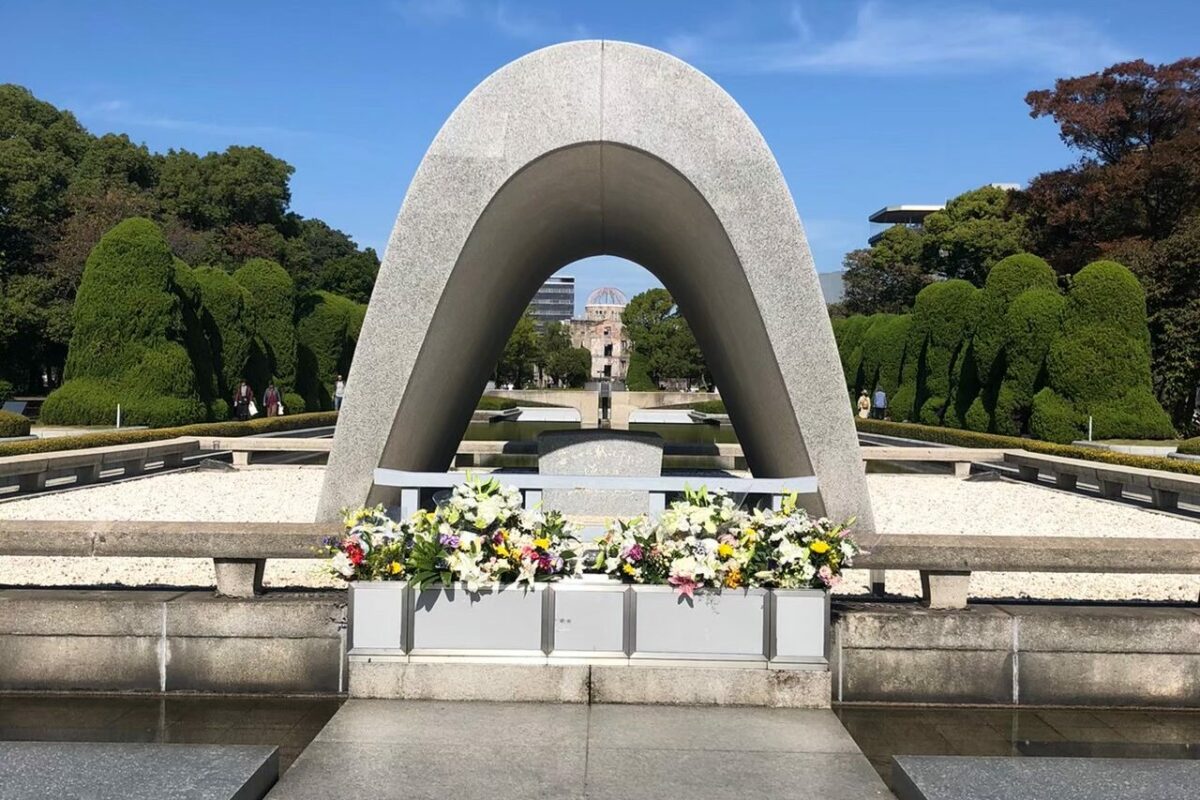
All exhibits are written in English. It will take about 3 hours to look through all of them, but we hope that you will take your time and learn about this history.
It makes you wonder hoe such a terrible thing could really happened on earth.
A friend of mine said that of all the museums he has visited, this was the most thought-provoking place he has ever been to.
If you plan on visiting, please check my itinerary for the perfect one day in Hiroshima for some great tips on surrounding activities.
23. Itsukushima Shrine, Miyajima ⛩️ (Hiroshima)
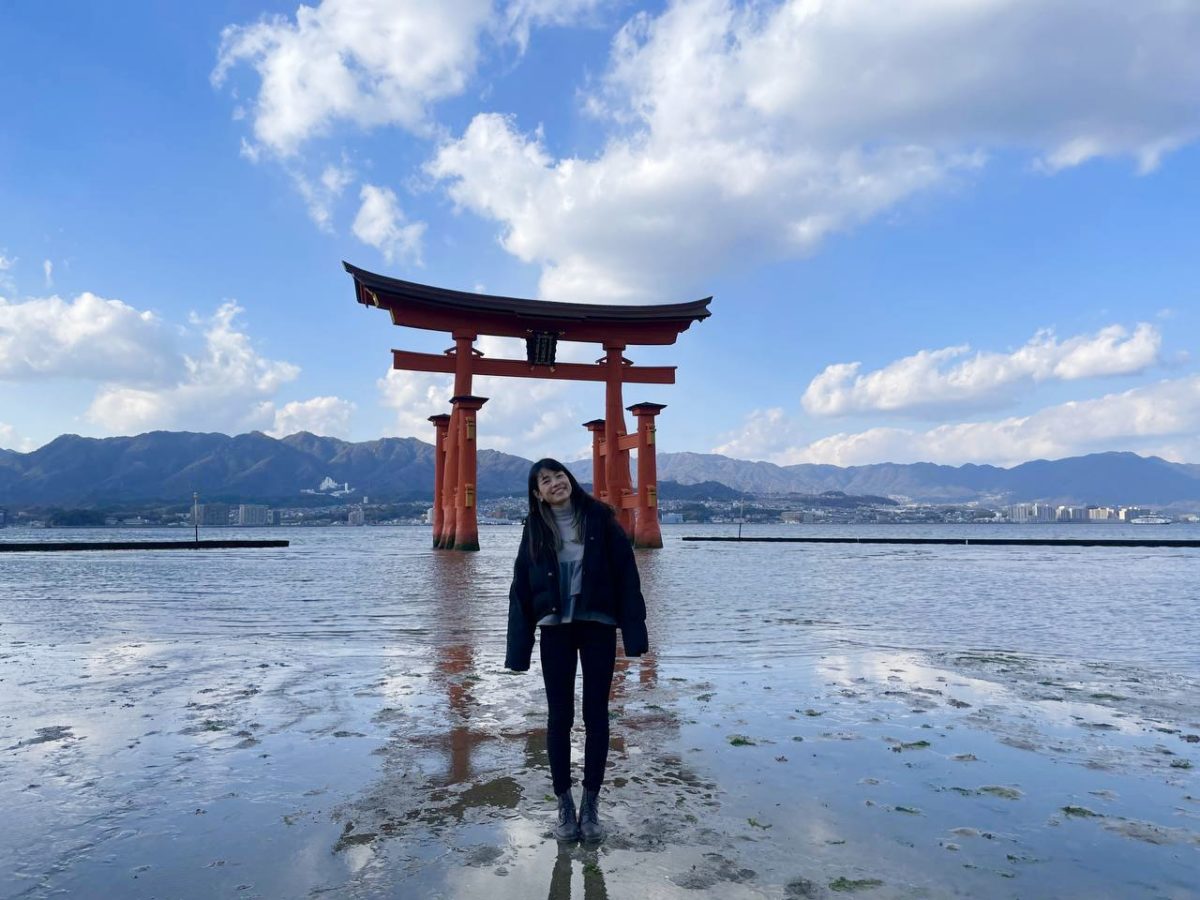
Miyajima is one of the three most scenic spots in Japan. Miyajima is best known for the Otorii, a large gateway built into the sea.
Its appearance changes with the ebb and flow of the tide, and when the tide is out, visitors can walk up to the gateway.
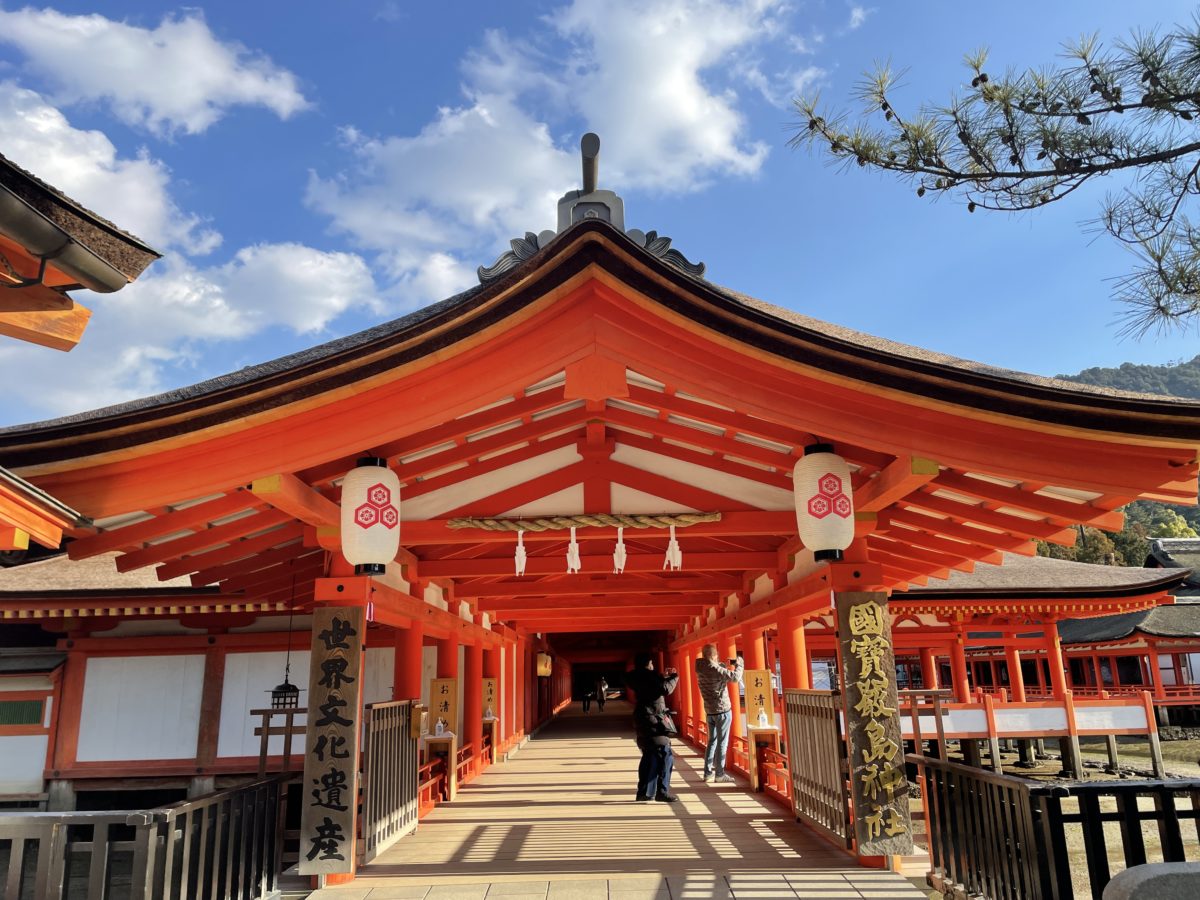
Itsukushima Shrine is also a unique structure built on the sea, and the combination of the red building floating on the sea and the green of the mountains seen from the ferry creates a mysterious atmosphere.

The torii gate seen from inside Itsukushima Shrine is also beautiful.
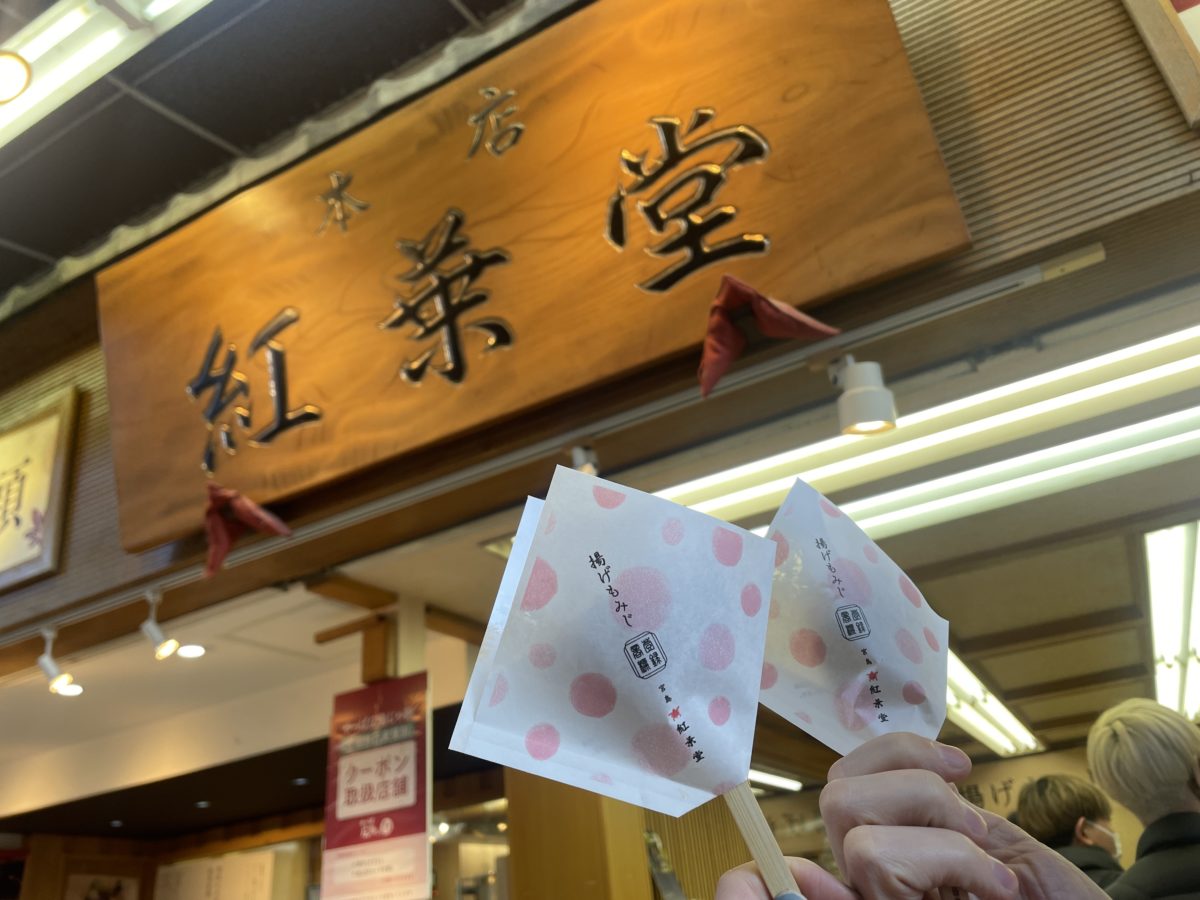
One of the best things to eat on Miyajima is momiji manju. Part of the many unique local foods in Hiroshima.
These buns are shaped like autumn leaves and come in a variety of flavors, including red bean paste, cream, and green tea.
Freshly made or deep-fried ones are also available, and at about 120 yen per piece, they are easy to try.
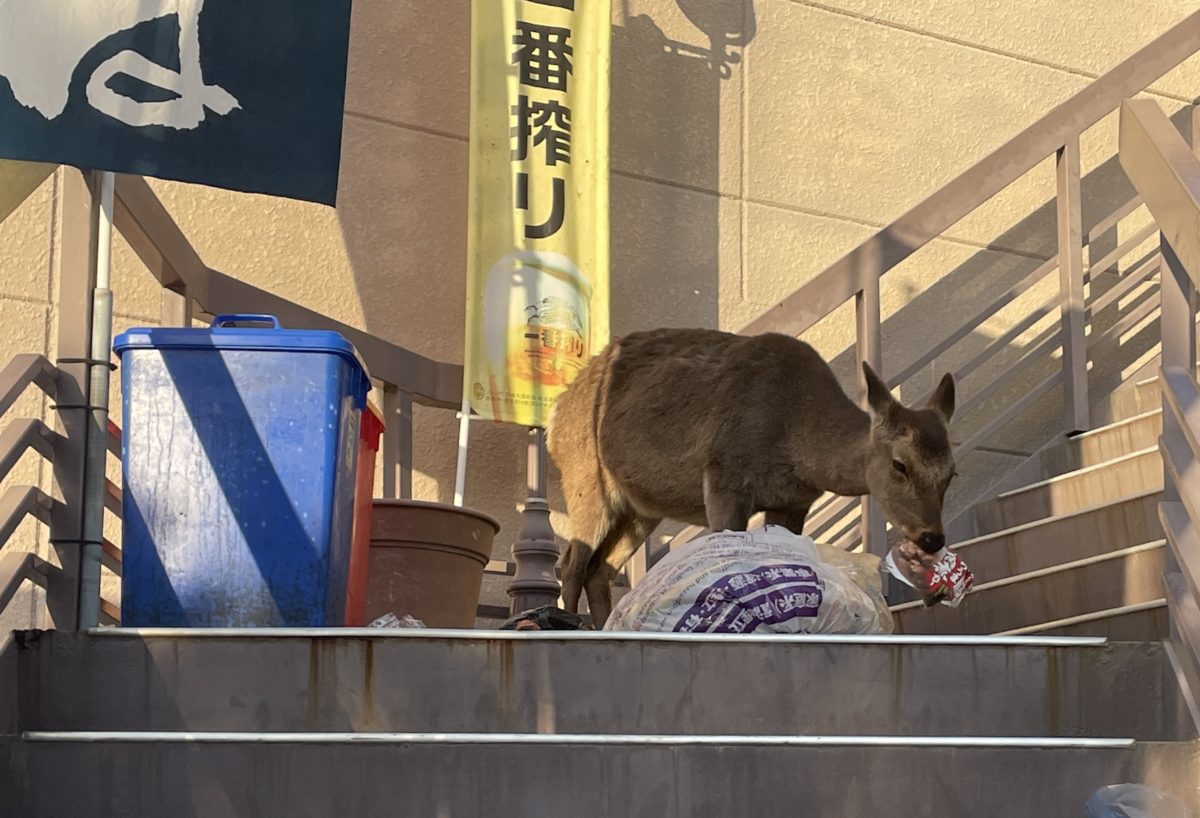
Wild deer inhabit Miyajima. They are accustomed to people, but will approach you if you have food.
But don’t worry, they are not as powerful as the deer at Todaiji Temple, which I introduced in the video earlier.
24. Mototosumi shrine ⛩️ (Yamaguchi)

Slightly similar to the Fushimi Inari Shrine in Kyoto, this one is located in Yamaguchi Prefecture, further west from Hiroshima. It is a great deity for prosperous business, childbirth, and maritime safety.
The sight of 123 torii gates lined up over 100 meters is breathtaking, and the contrast between their red color and the blue of the sea is beautiful.
As already mentioned in the introduction to Fushimi Inari Shrine, it is very rare to find a place where so many torii gates are lined up.
There is something a little unusual about this shrine. Usually, shrines have a “money-offering box,” in which visitors express their gratitude to the gods and Buddha or pay money in appreciation for the fulfillment of their prayers.
In all shrines, these are placed on the ground, but in this shrine, they are placed about 5 meters above the torii (gateway to the shrine).
What this means is that worshippers must aim at the high positioned money box and throw their money. I finally got in after about five tries.
It is said that if you get into the box, your wish will come true. Please give it a try.
25. Takachiho Gorge 🚣♀️ (Miyazaki)
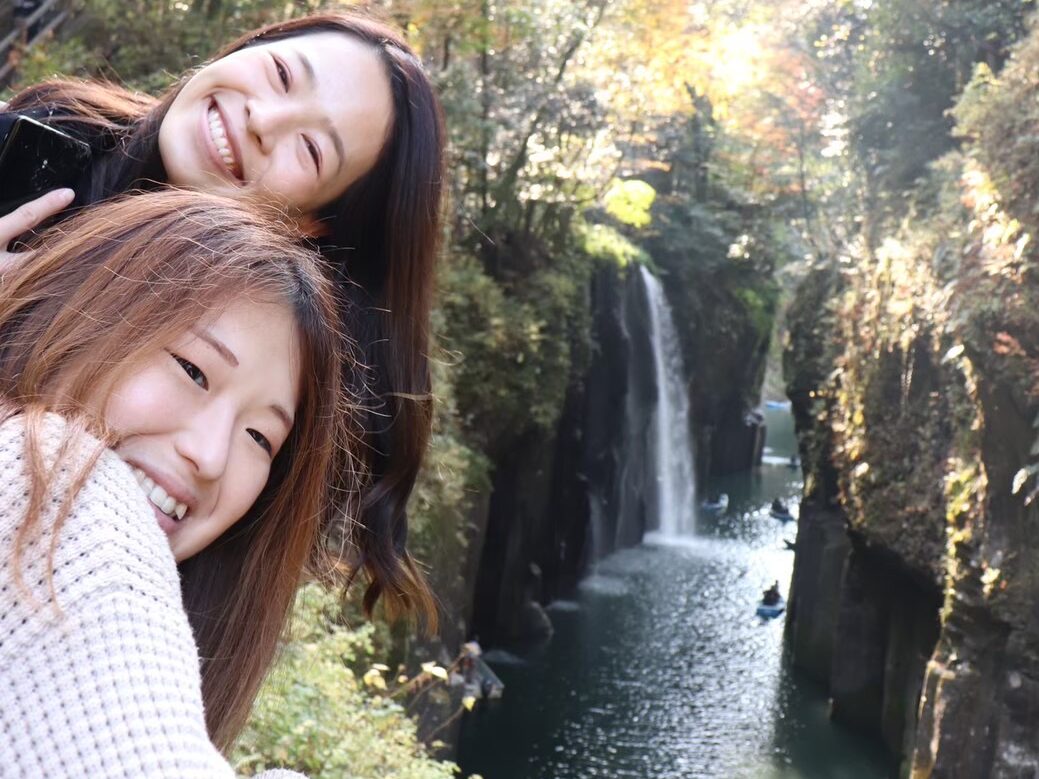
Cliffs and strange rocks stand around a clear stream, and the sight of water falling from a waterfall is extremely beautiful.
Boat rentals are very popular to see this scenery up close, and the view of the gorge from a boat is said to be spectacular.
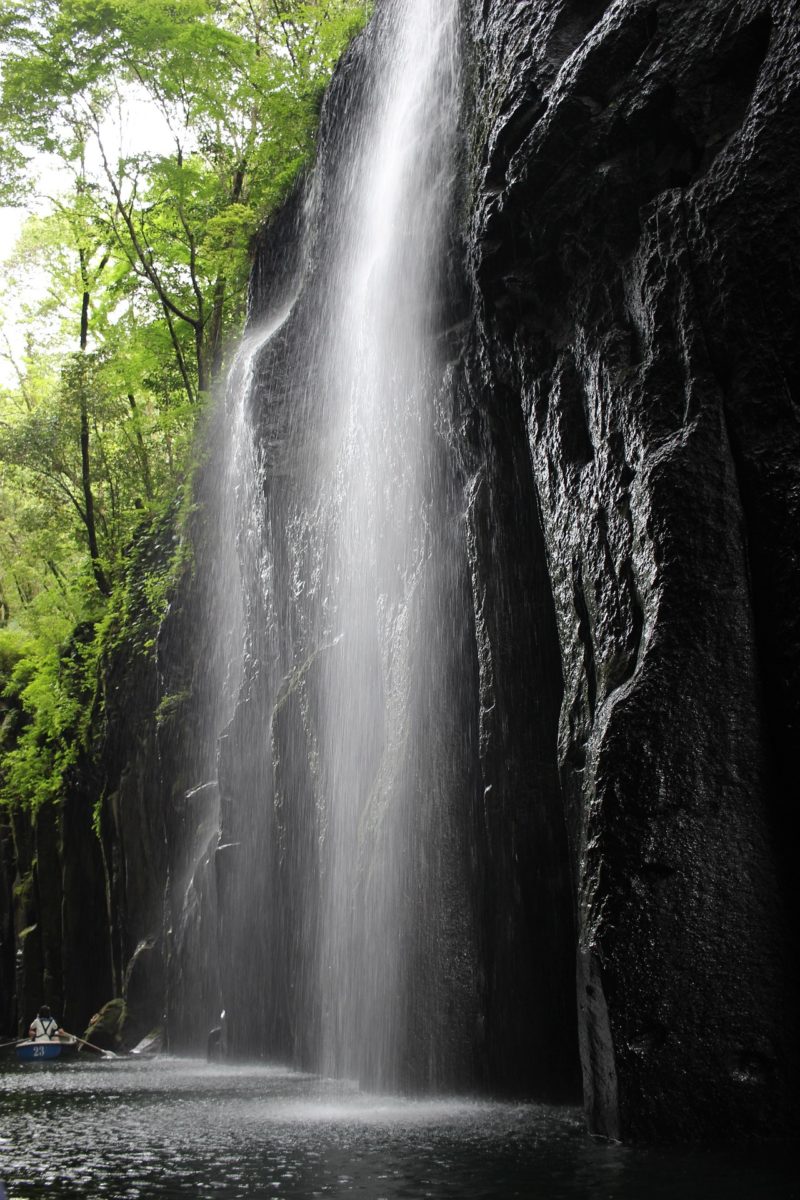
Reservations can be made a week in advance. Previously, I went to the reception early in the morning without a reservation, but the boat was already sold out and I could not get on the boat. If you definitely want to ride the boat, you must make a reservation.
Conclusion
Depending on which season you visit, you will enjoy each tourist attraction differently. In particular, please note that spring and fall are the high season and reservations are required for some places.
On this page, I have introduced the best spots to visit in Japan, and on other pages, I have detailed recommendations for many of Japans cities and areas. Of course, there are many wonderful sightseeing spots that could not fit this list, but please have a look around this website for more!
And for more general Japan tips, please check my top picks for things to do and activities in Japan.

